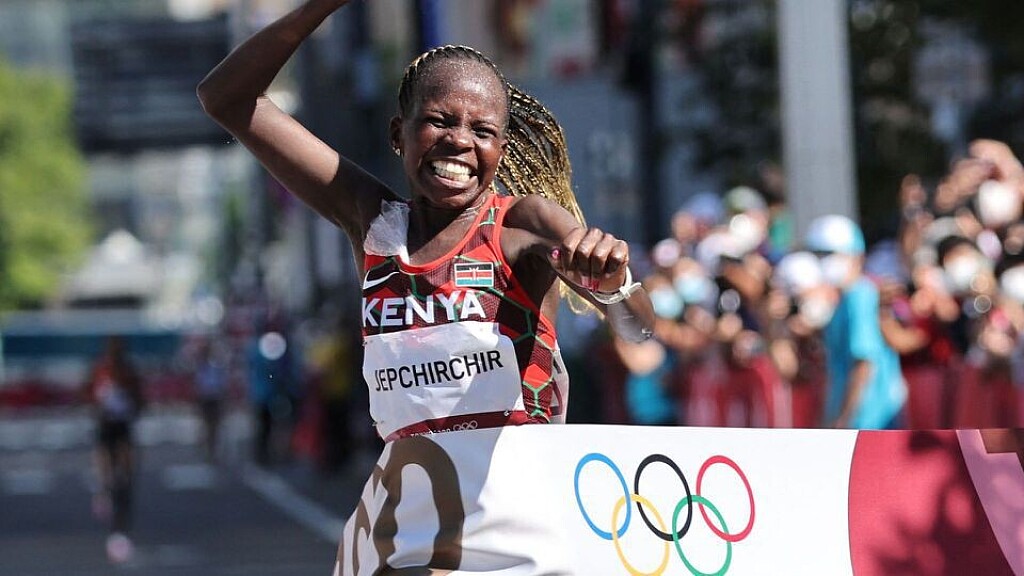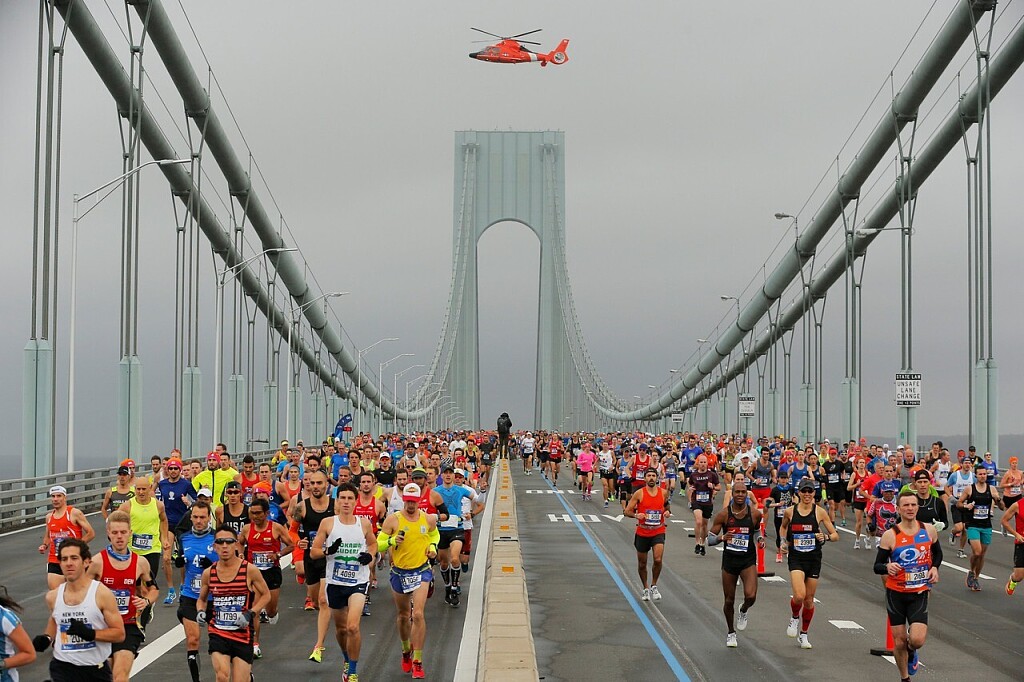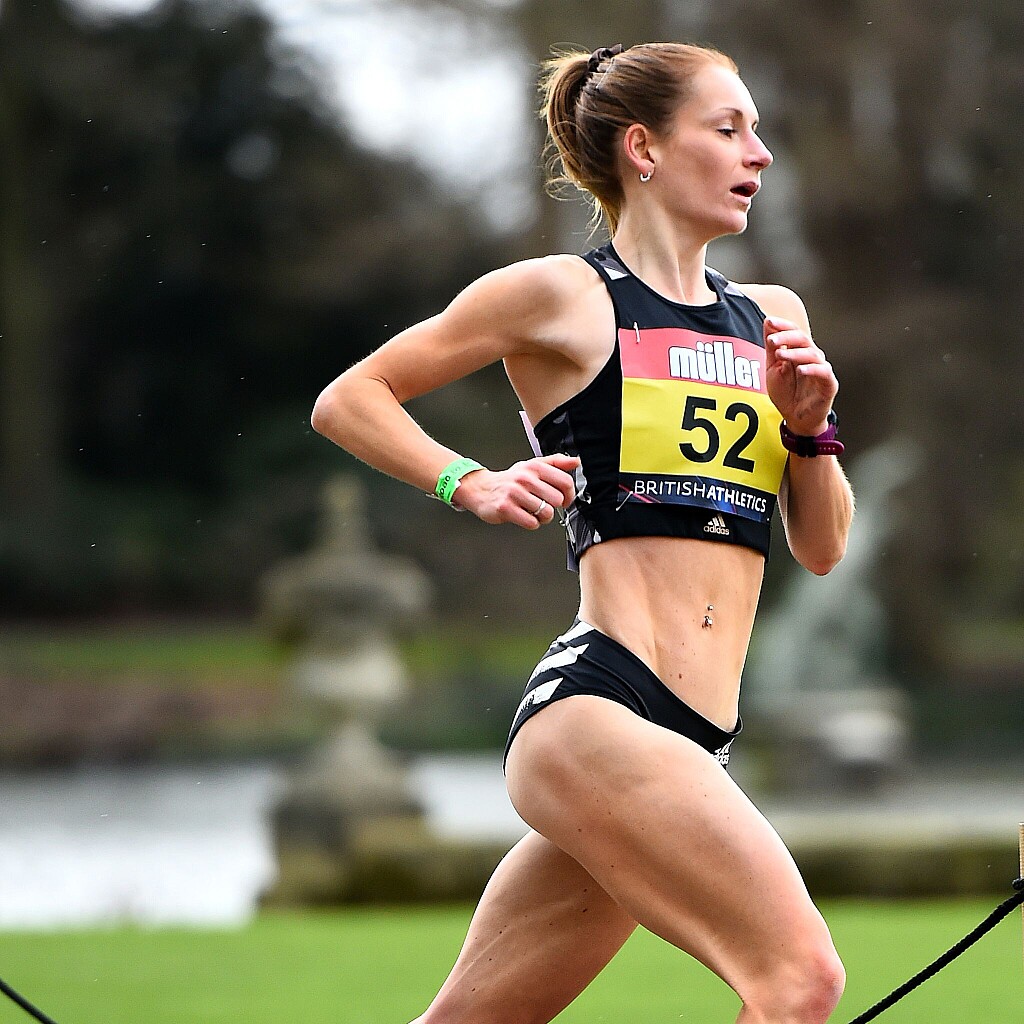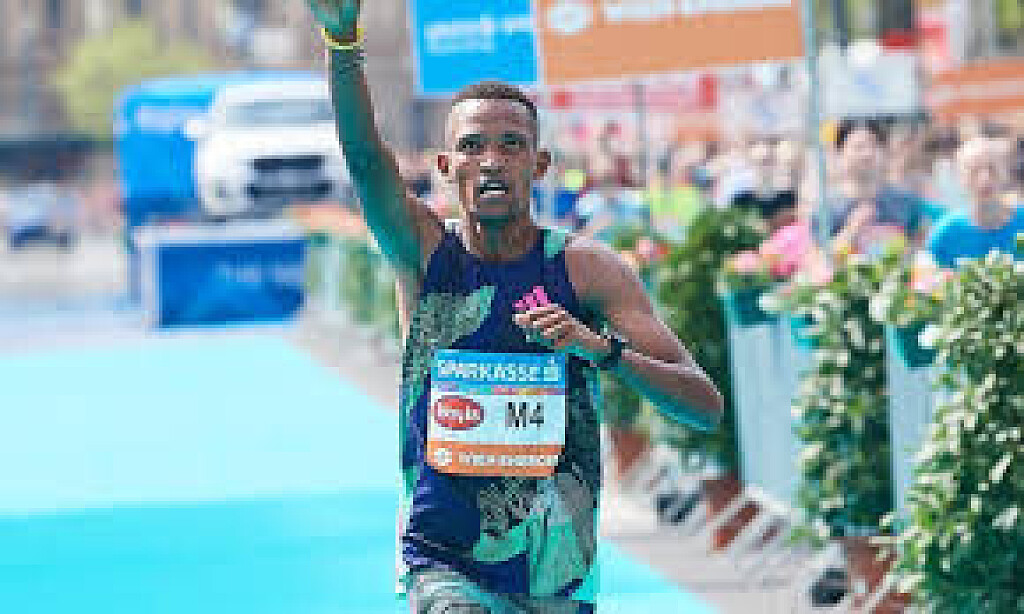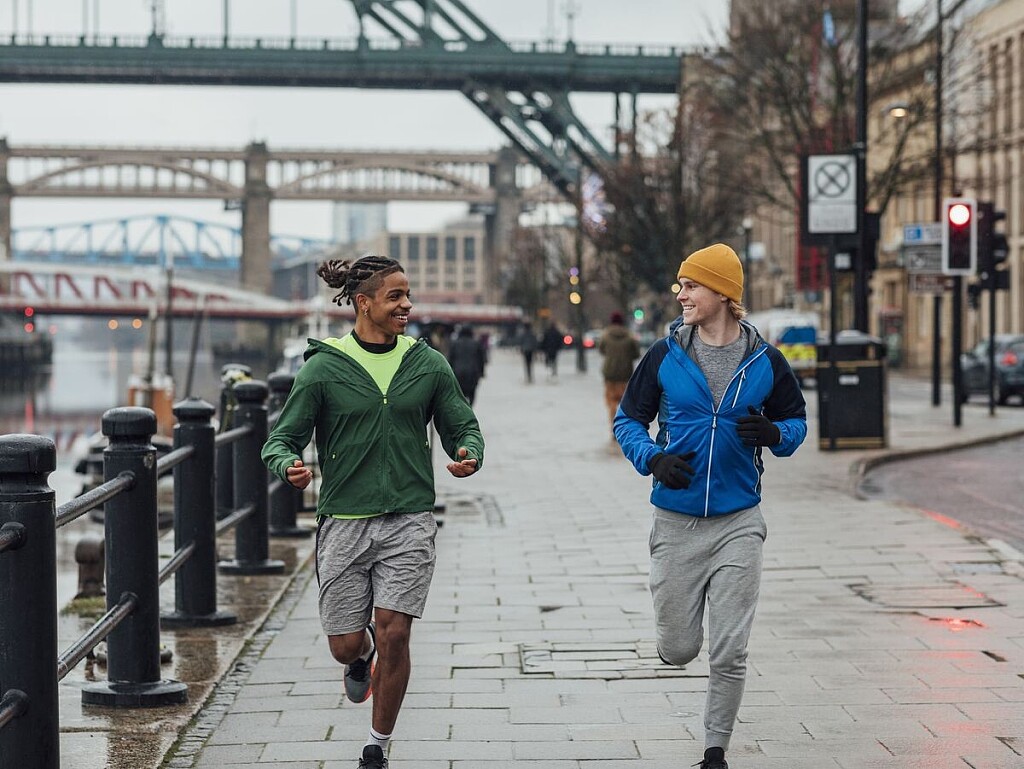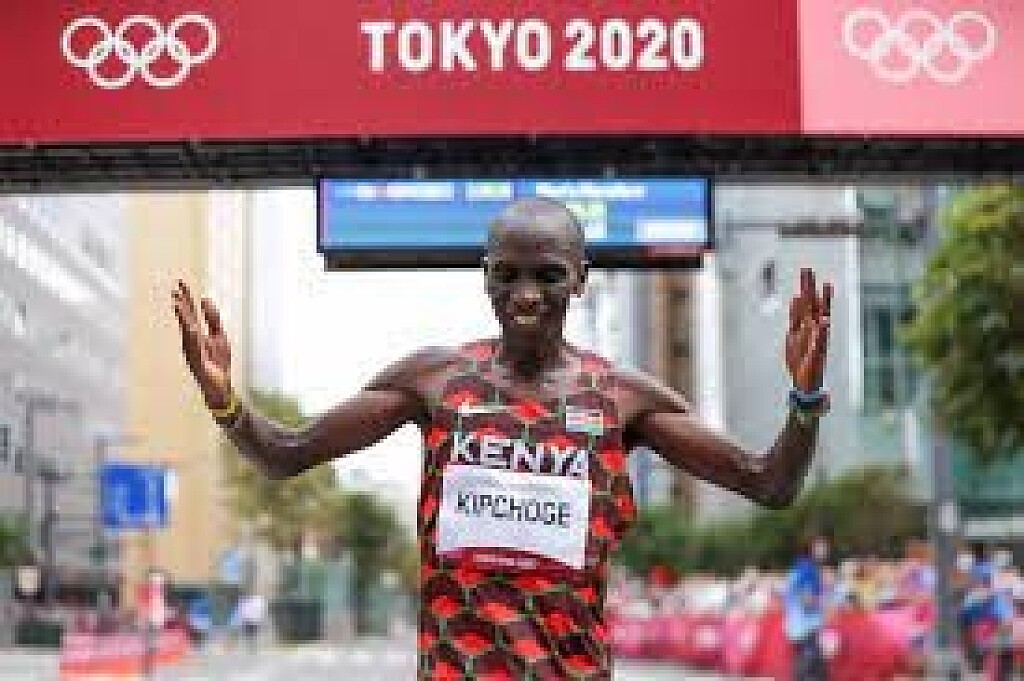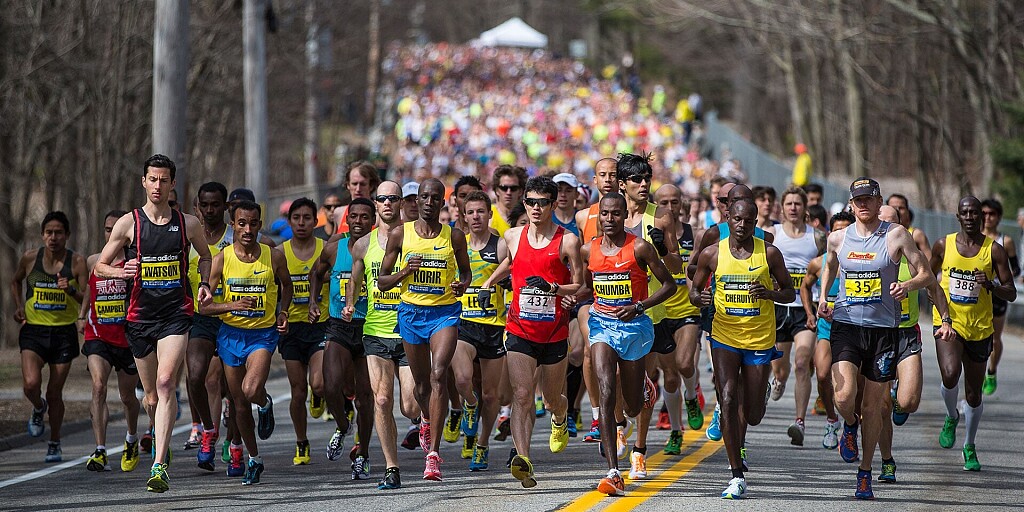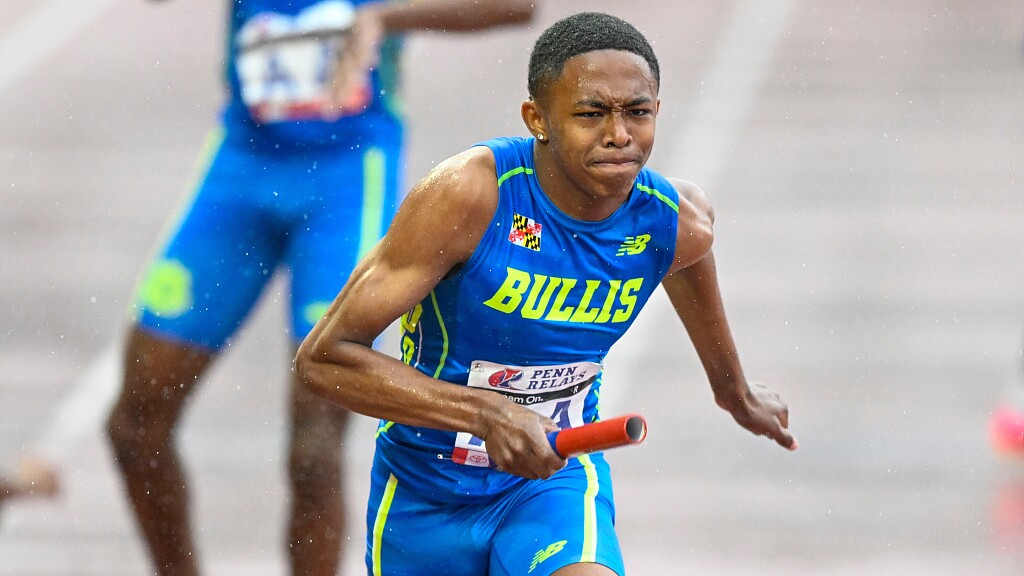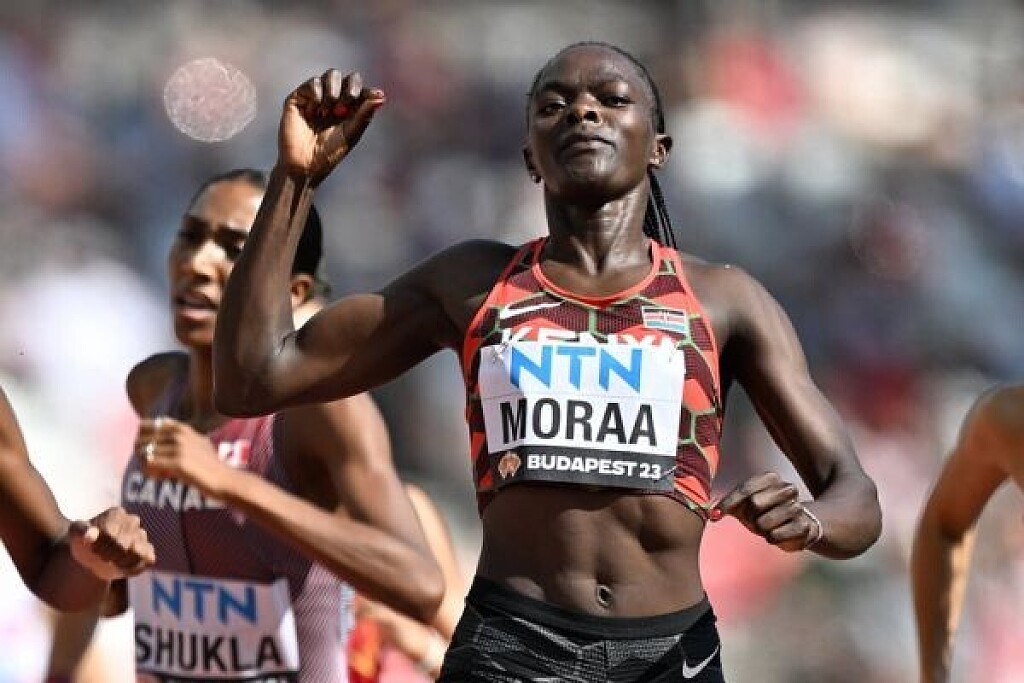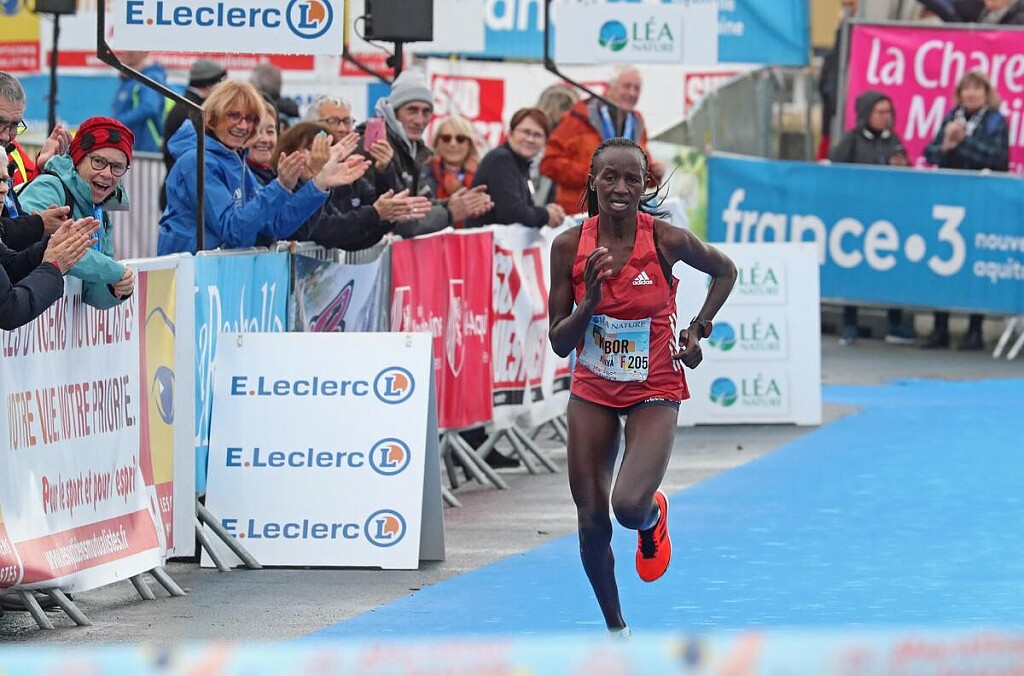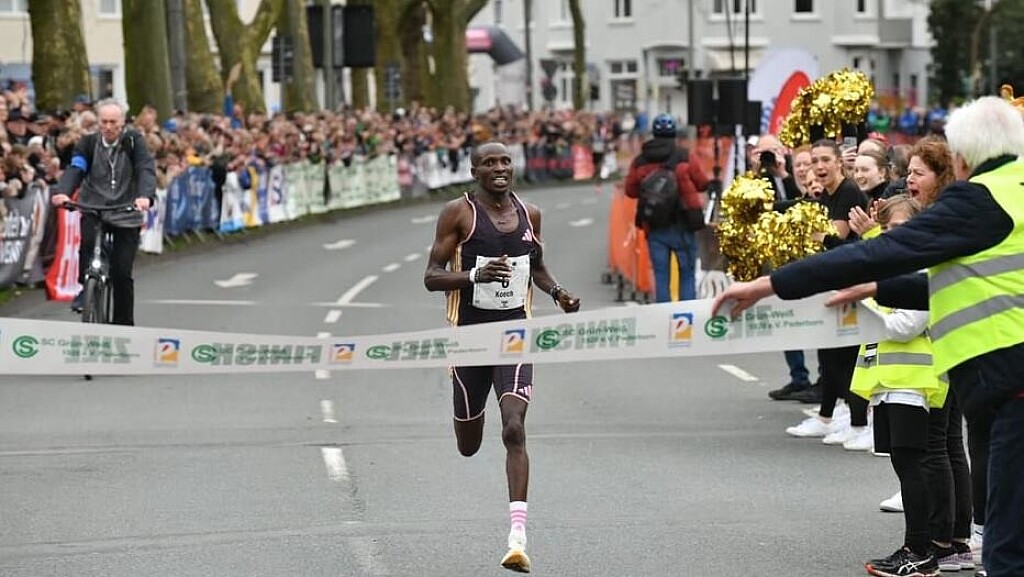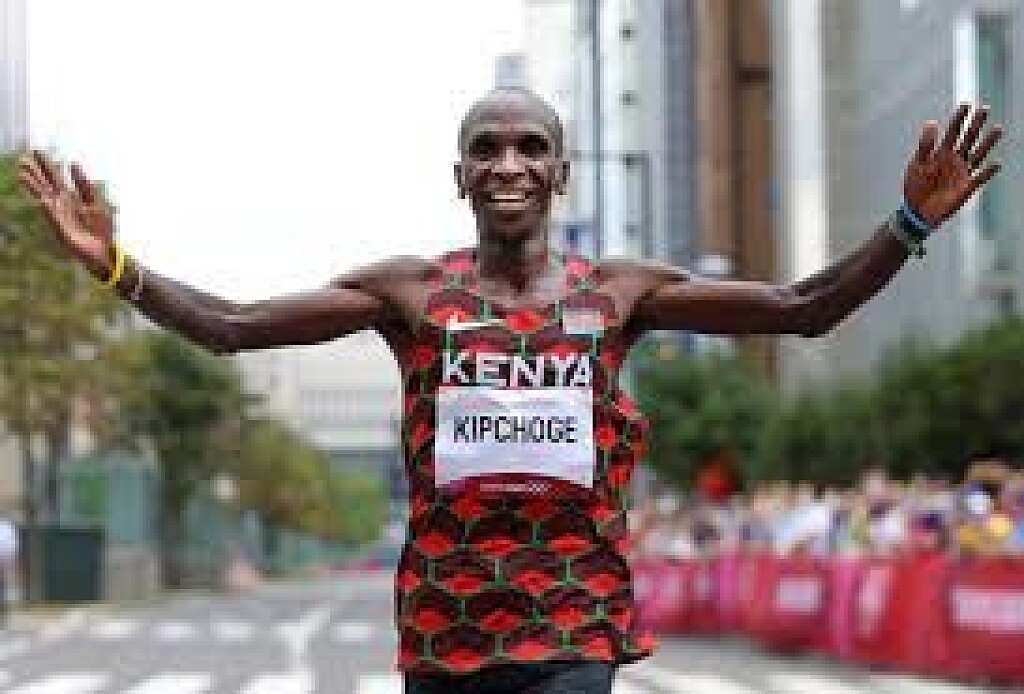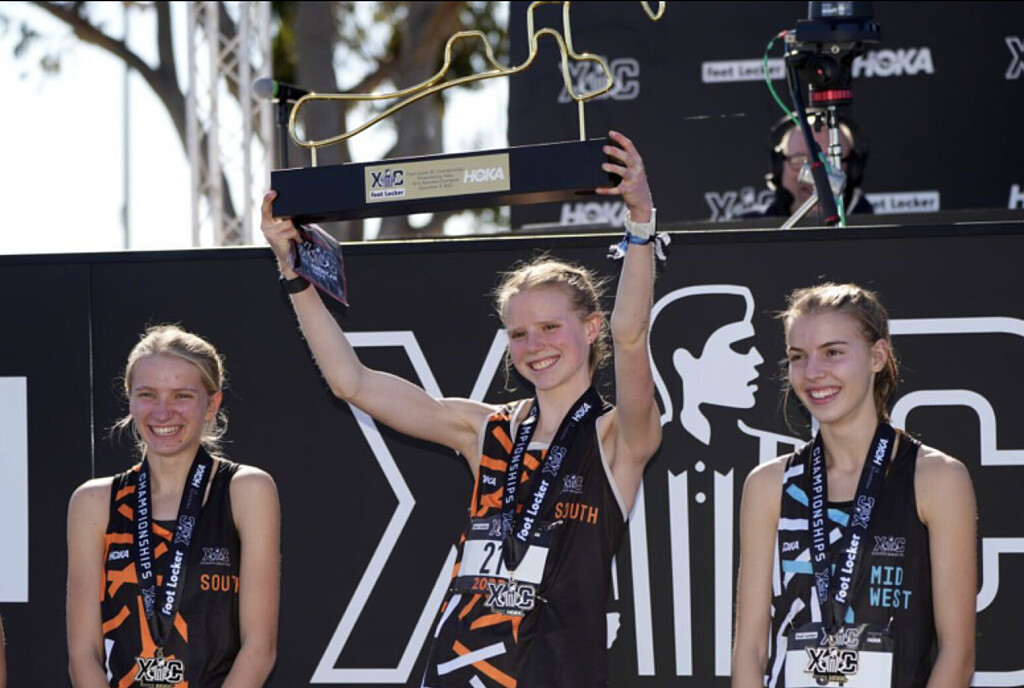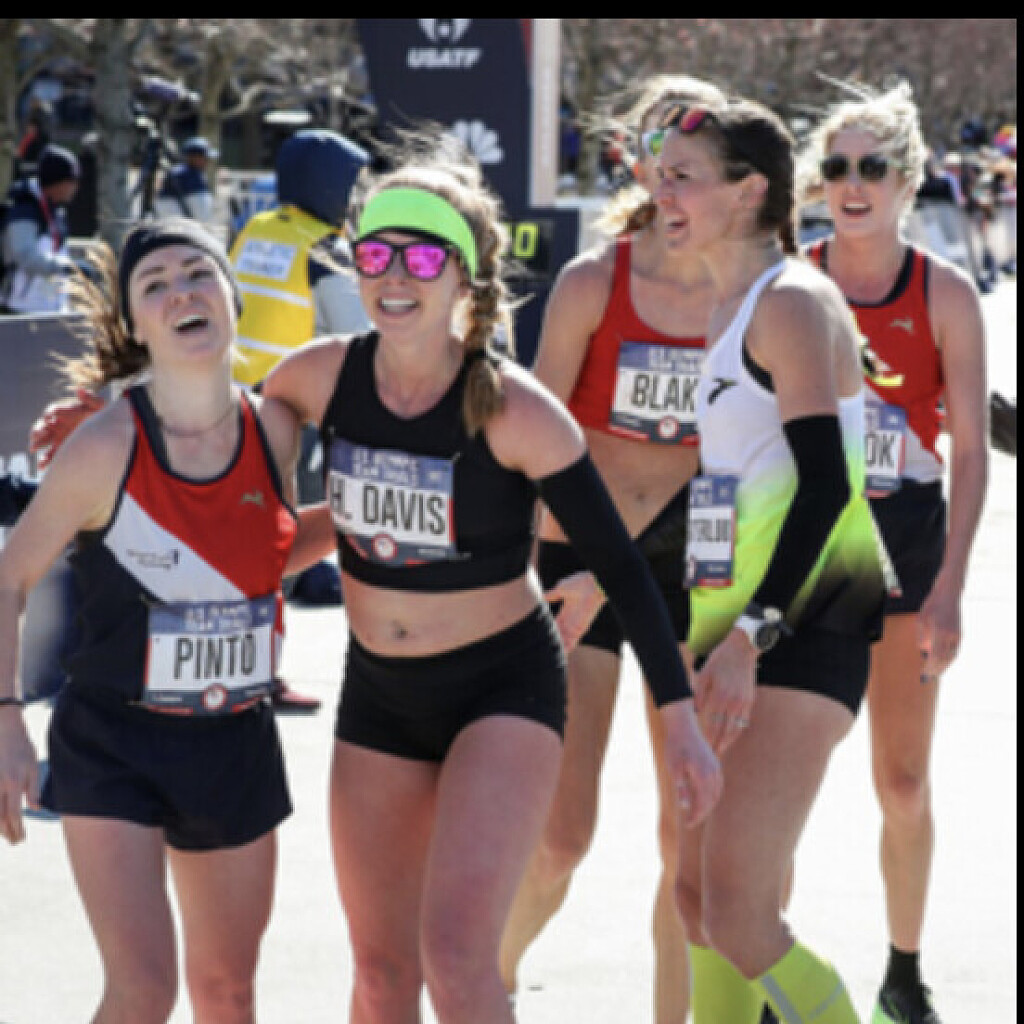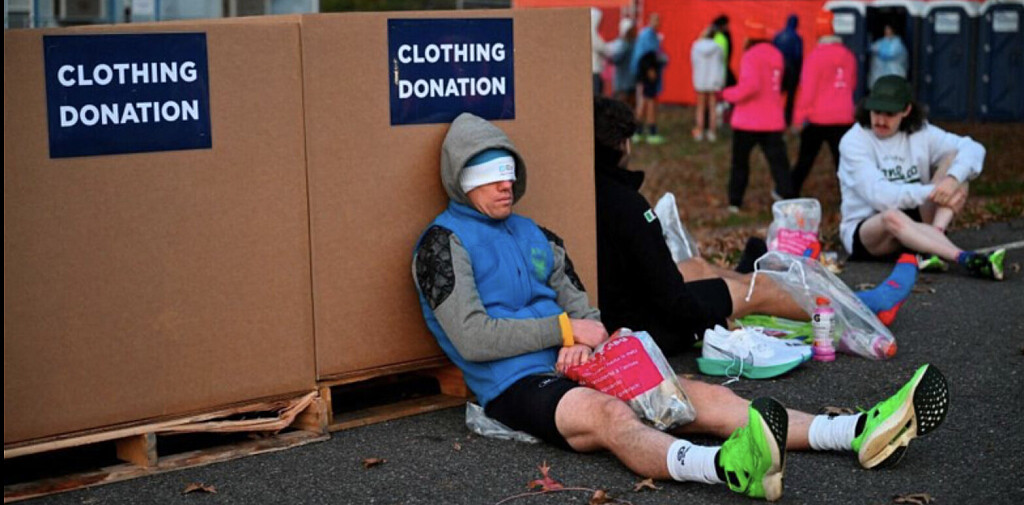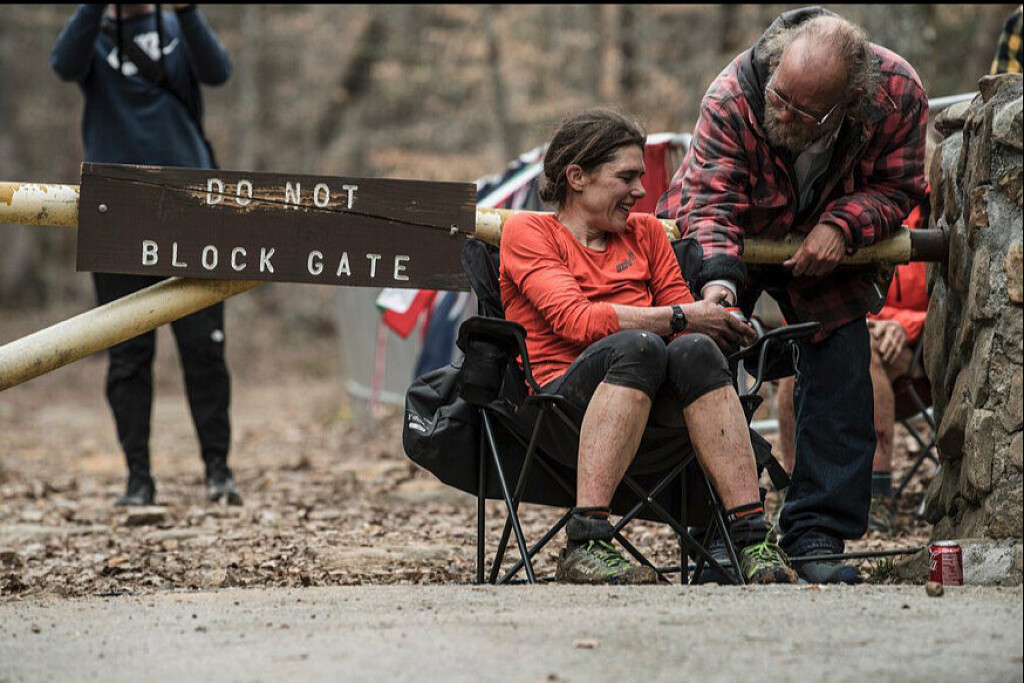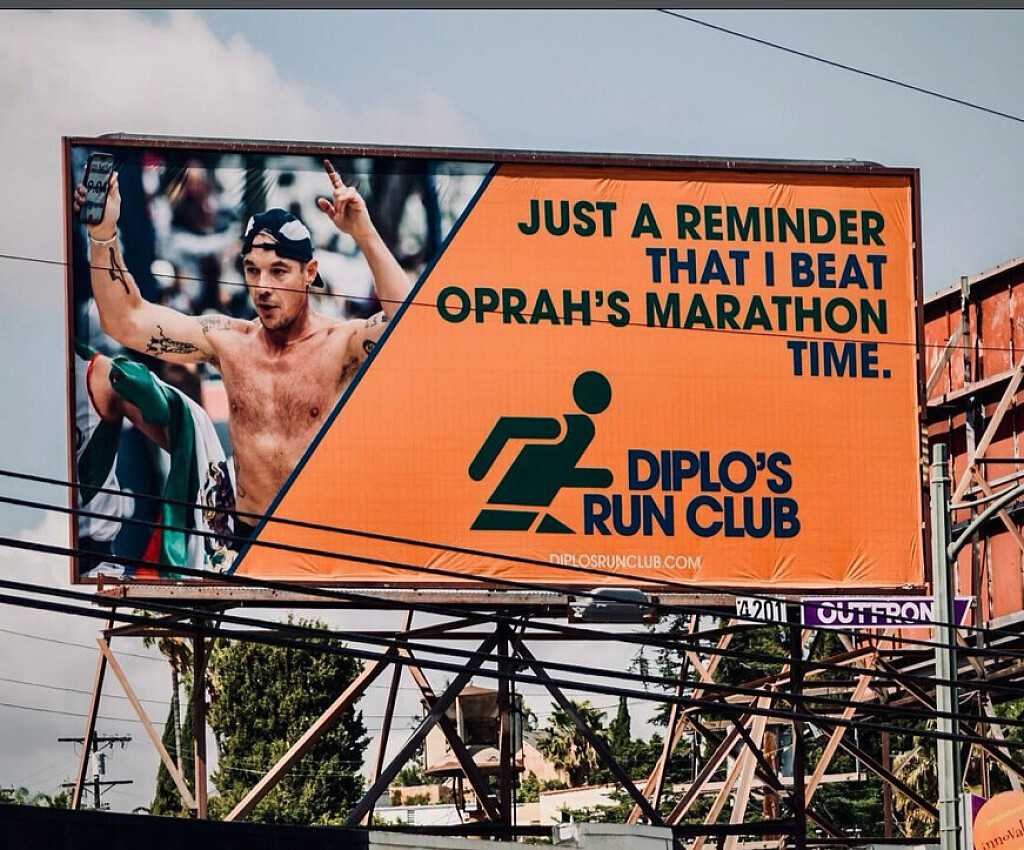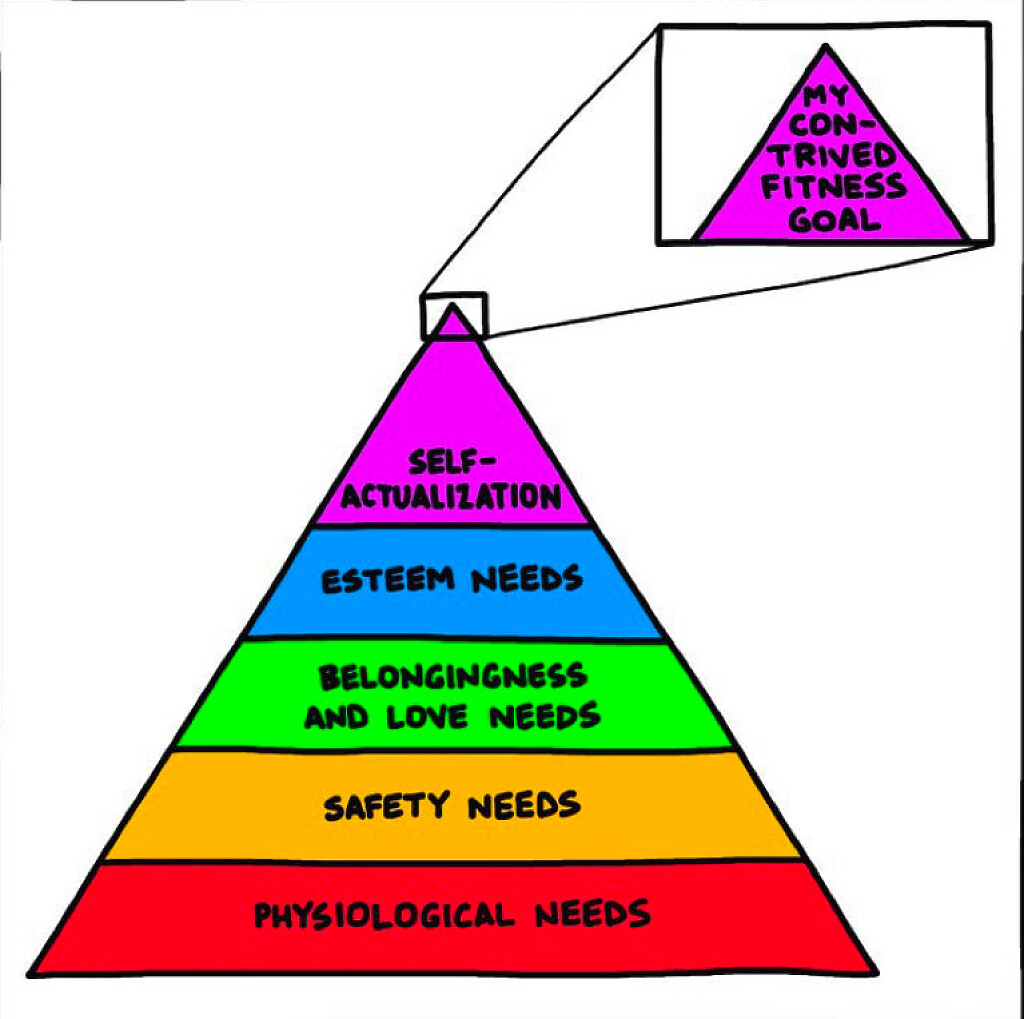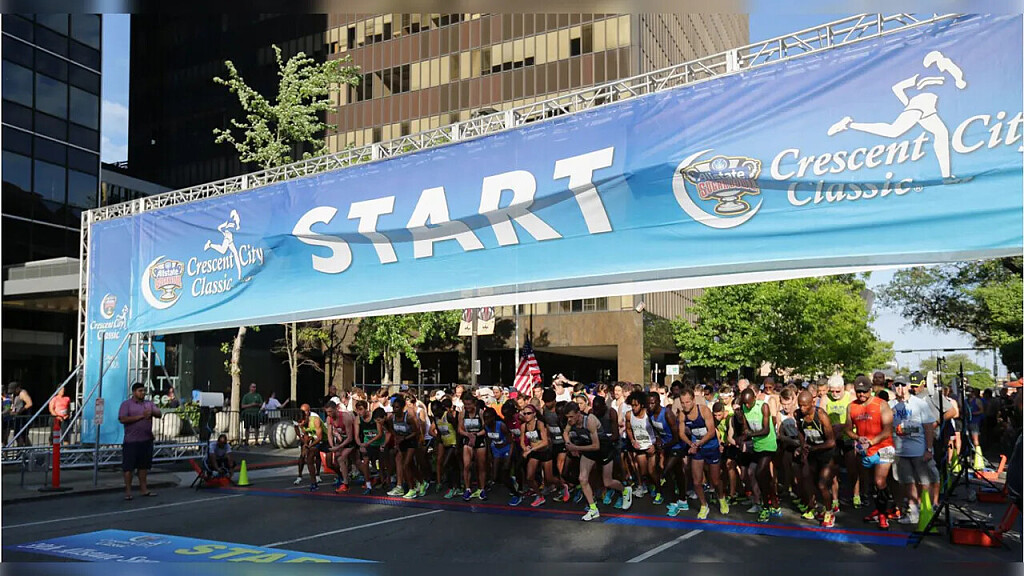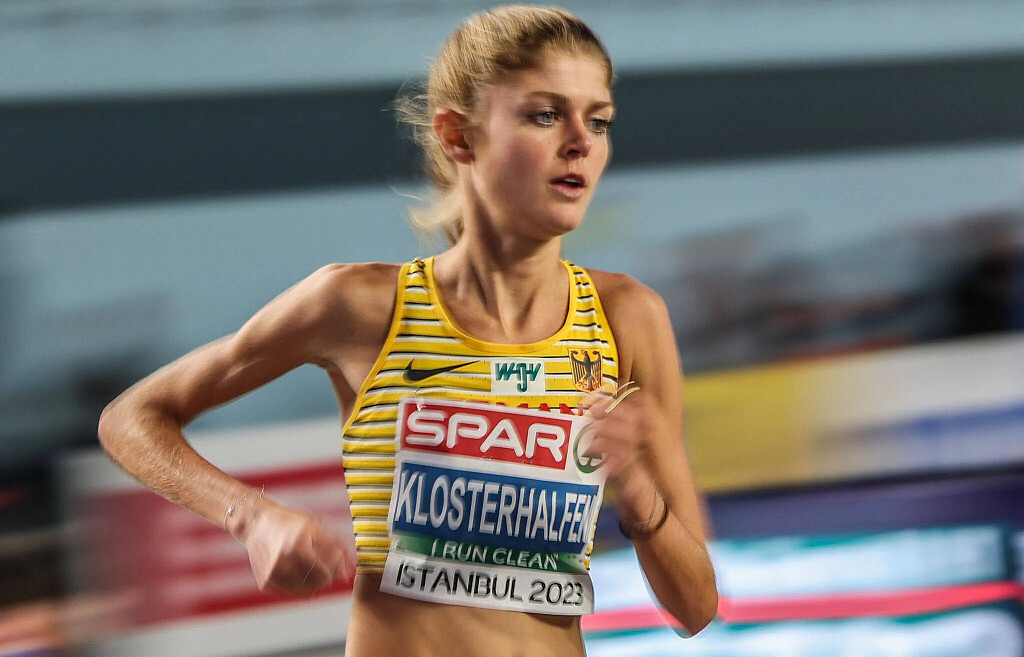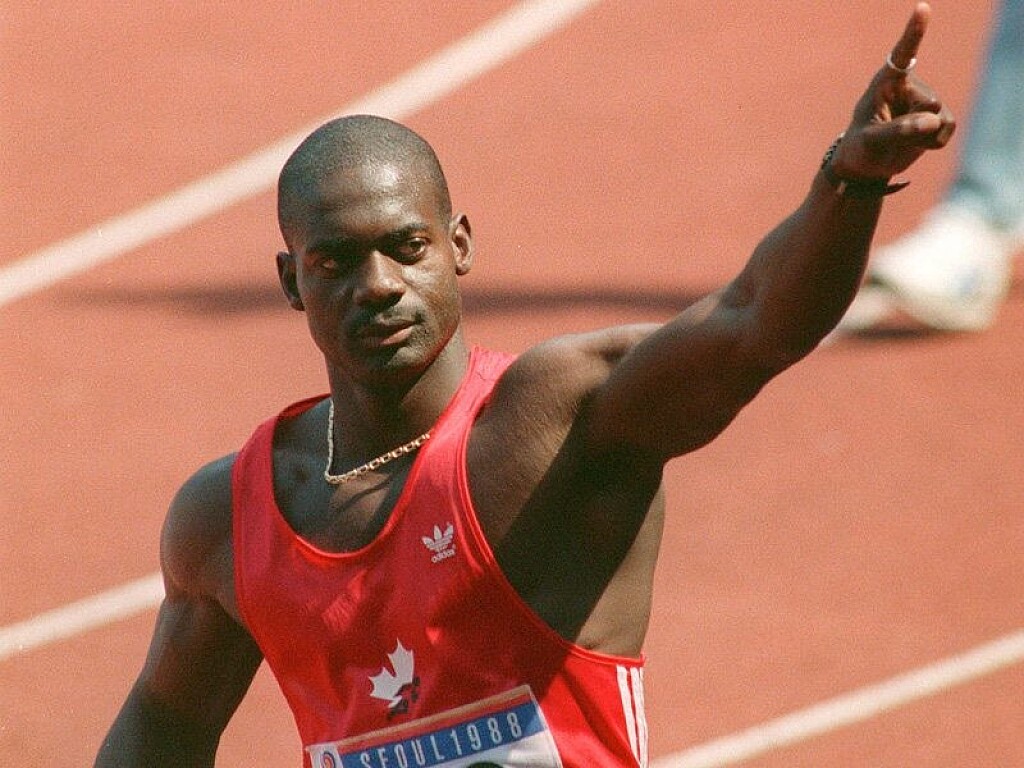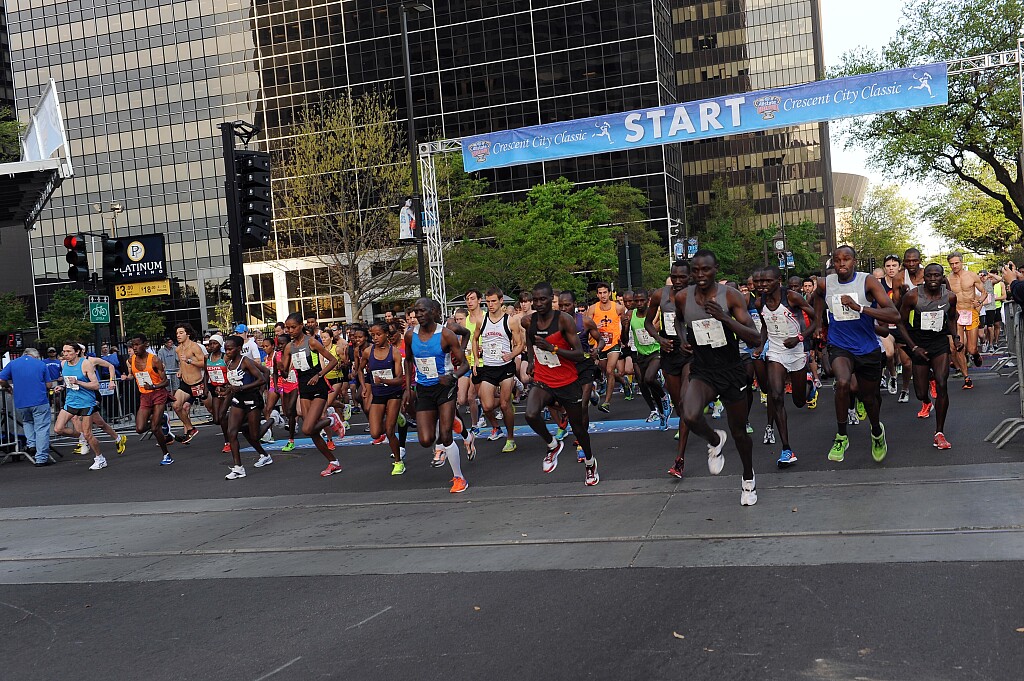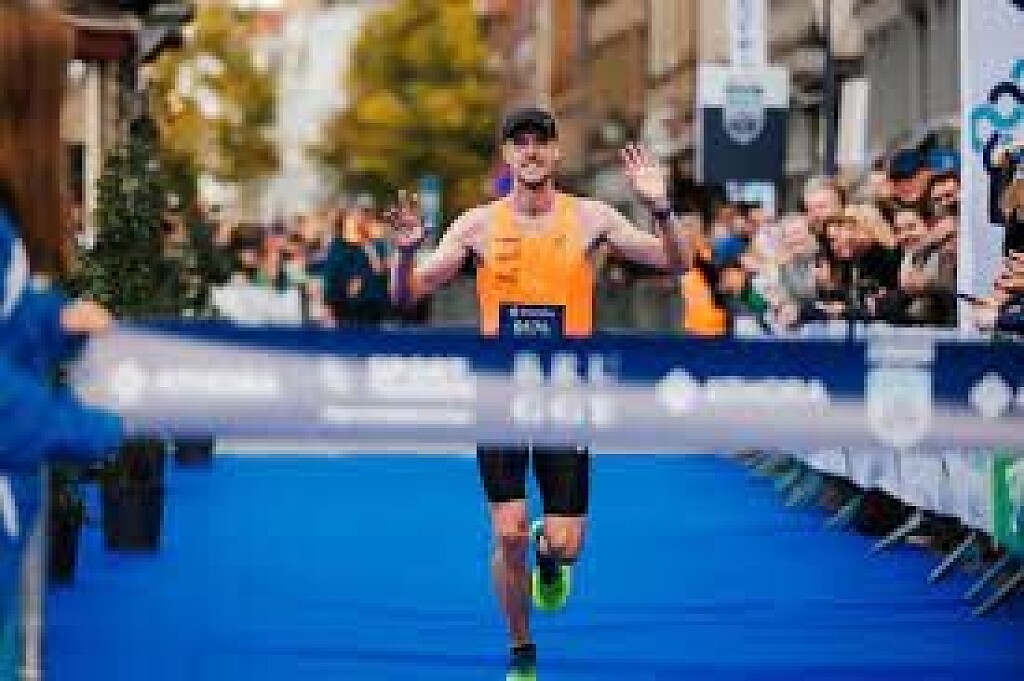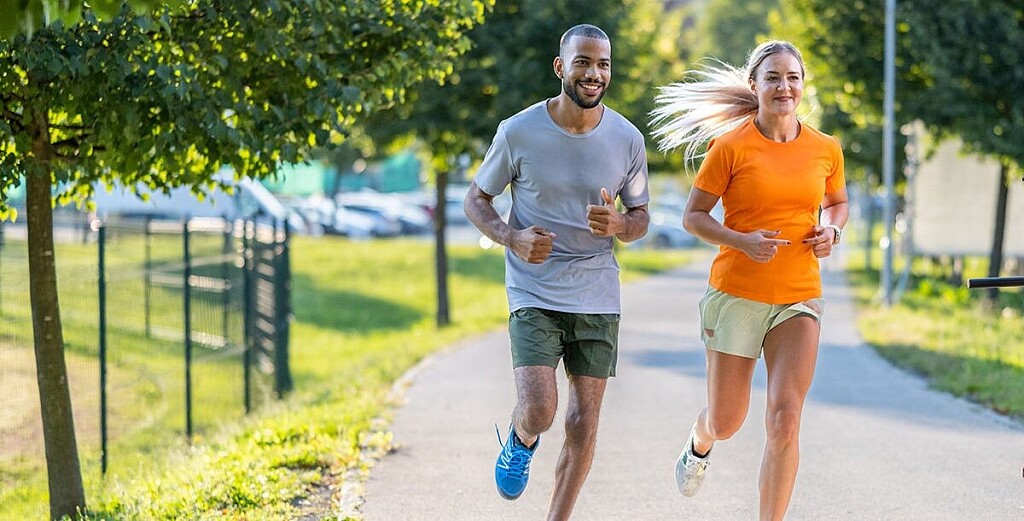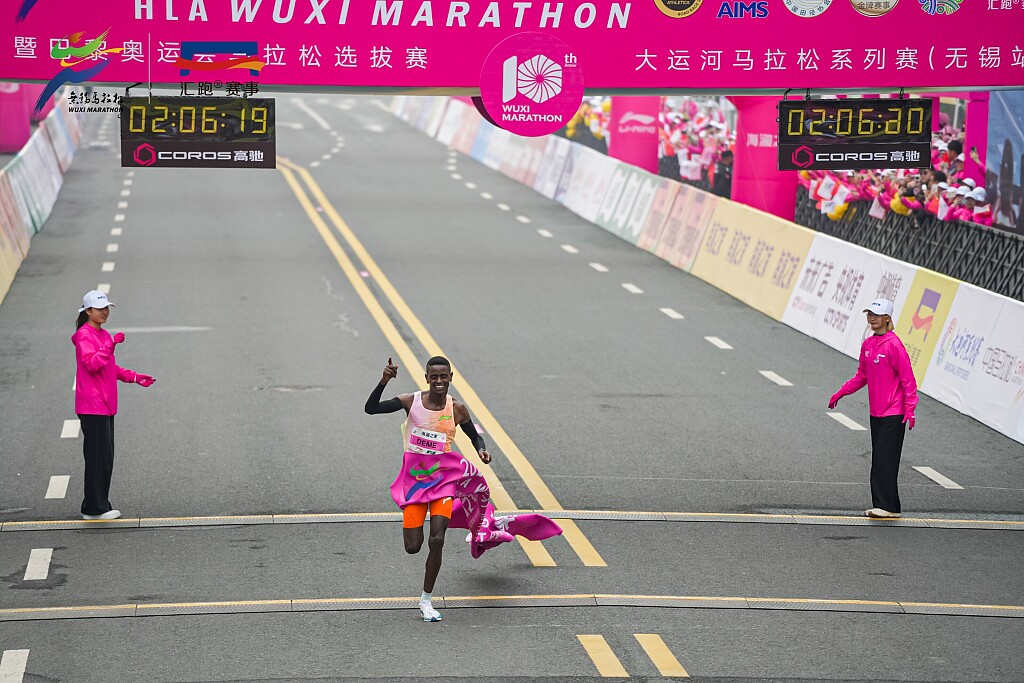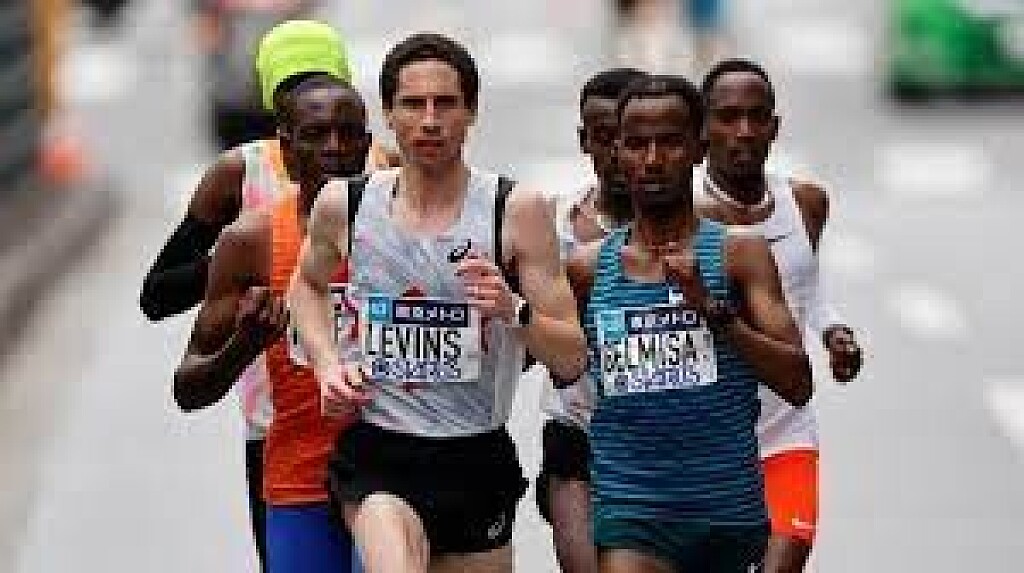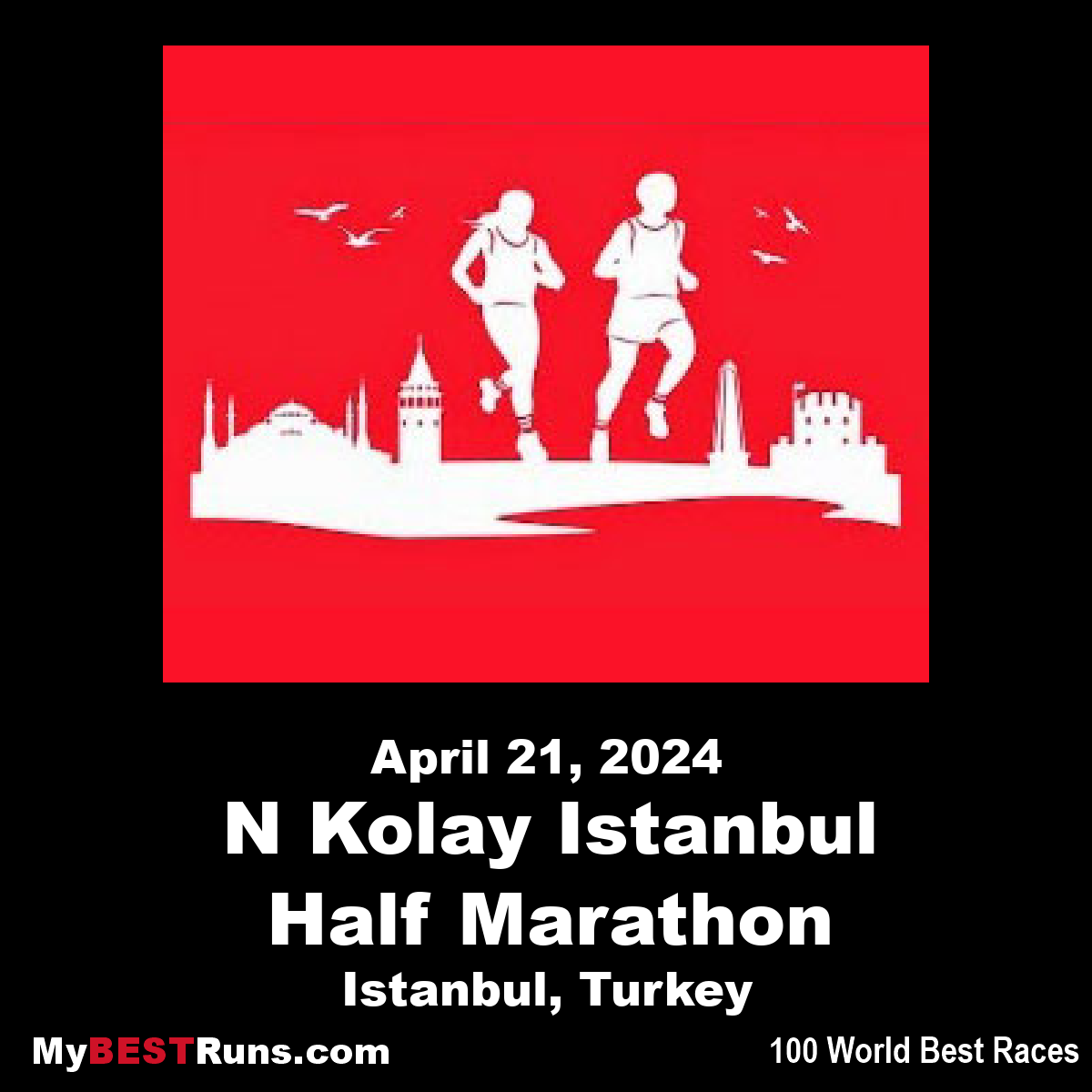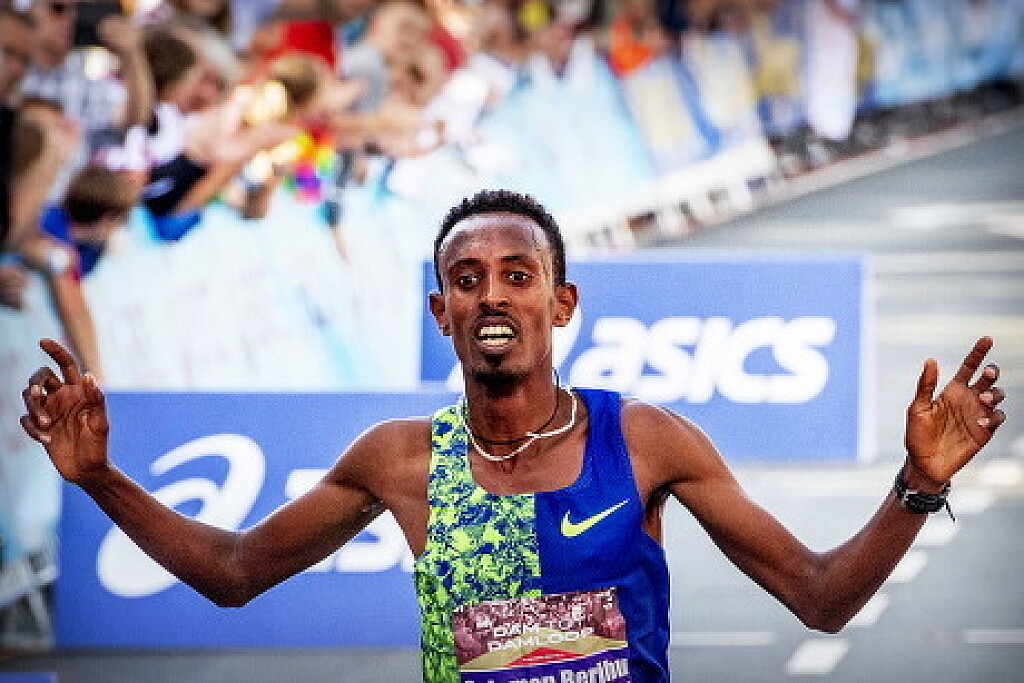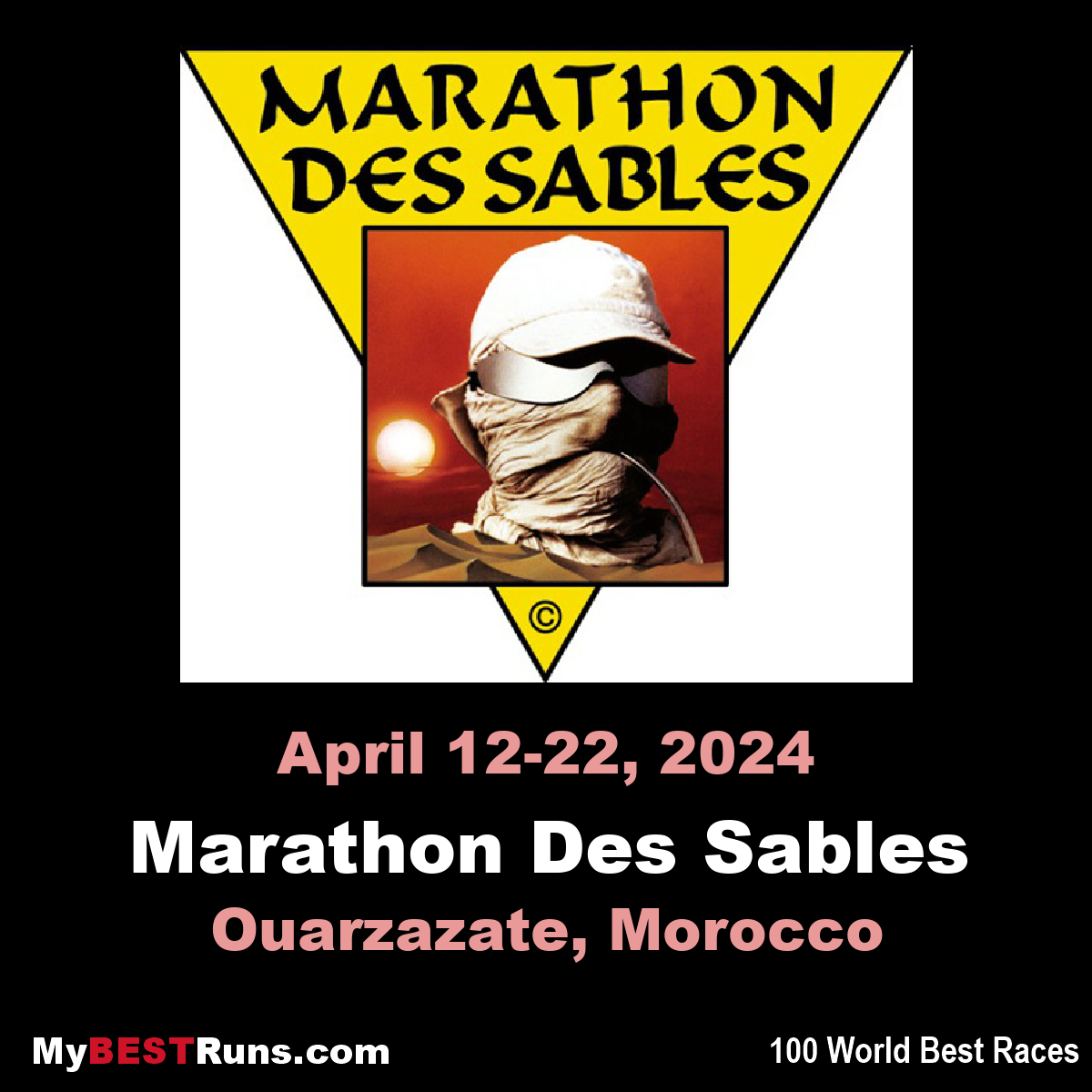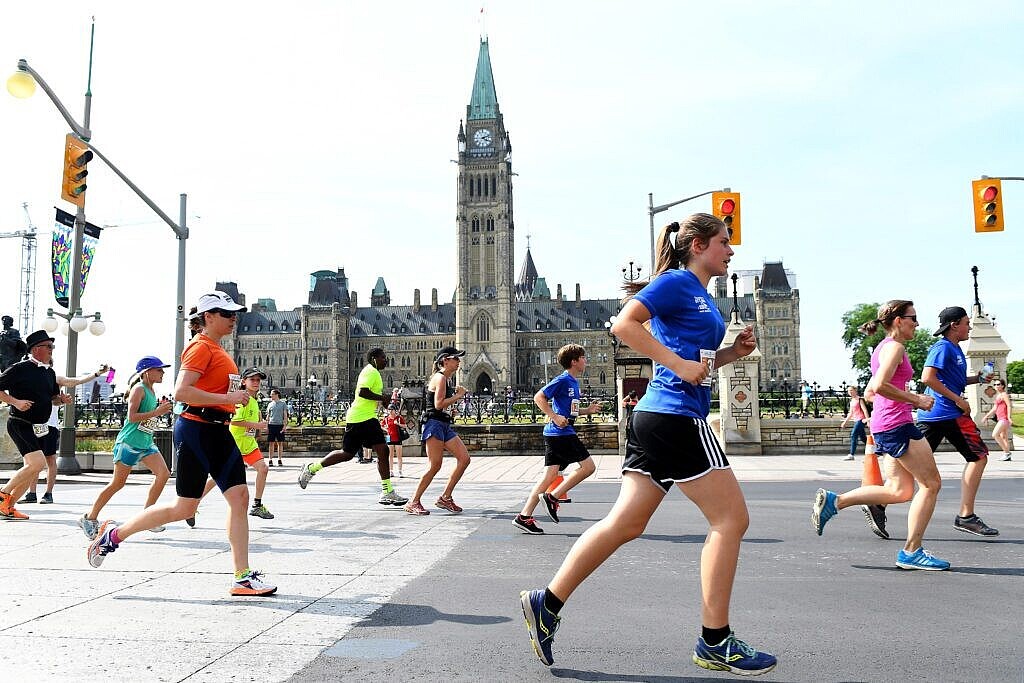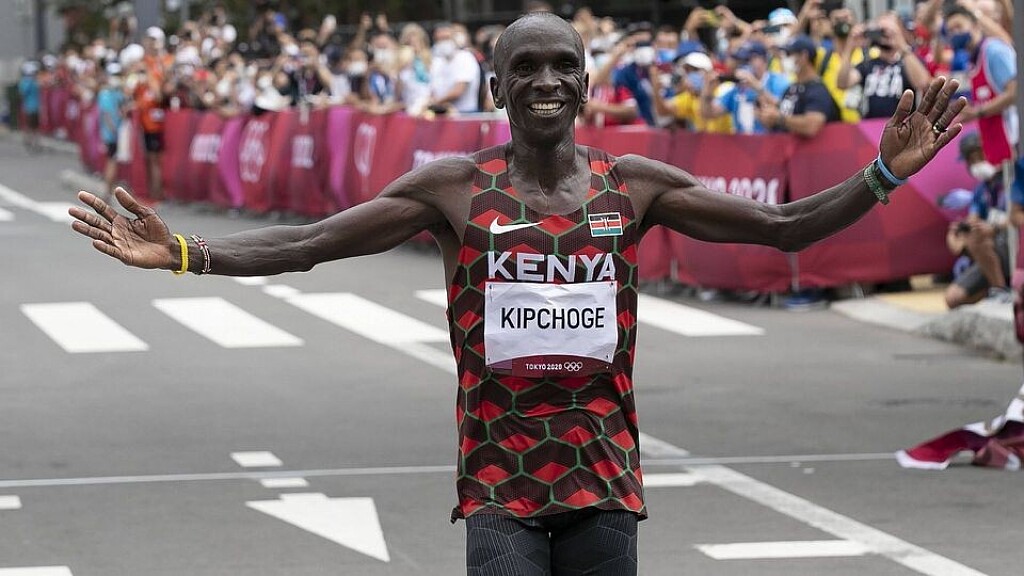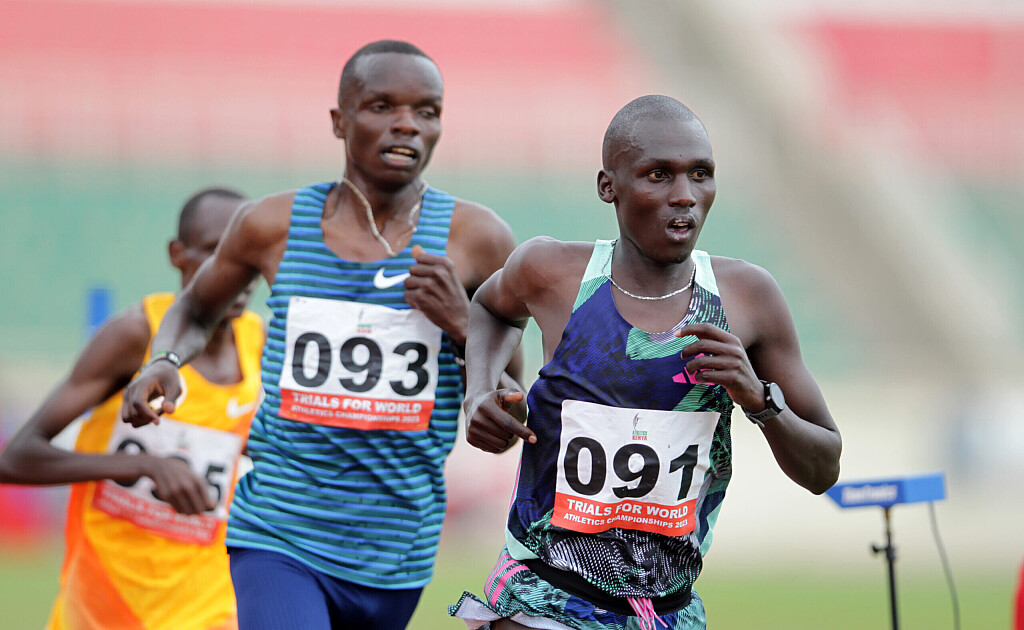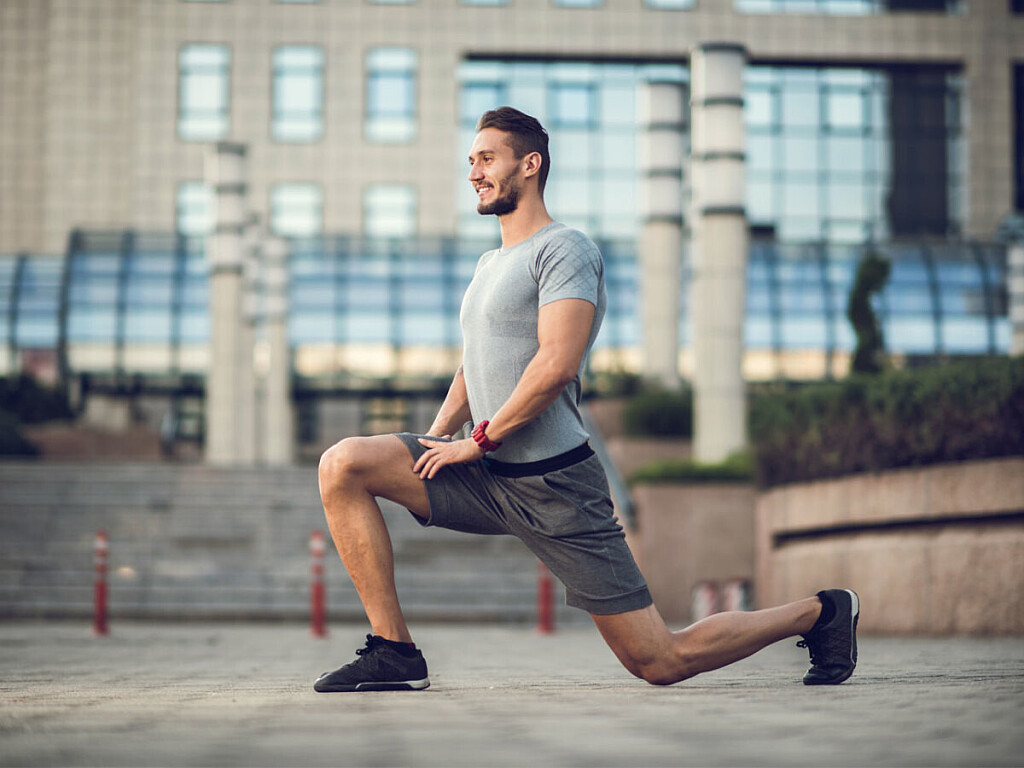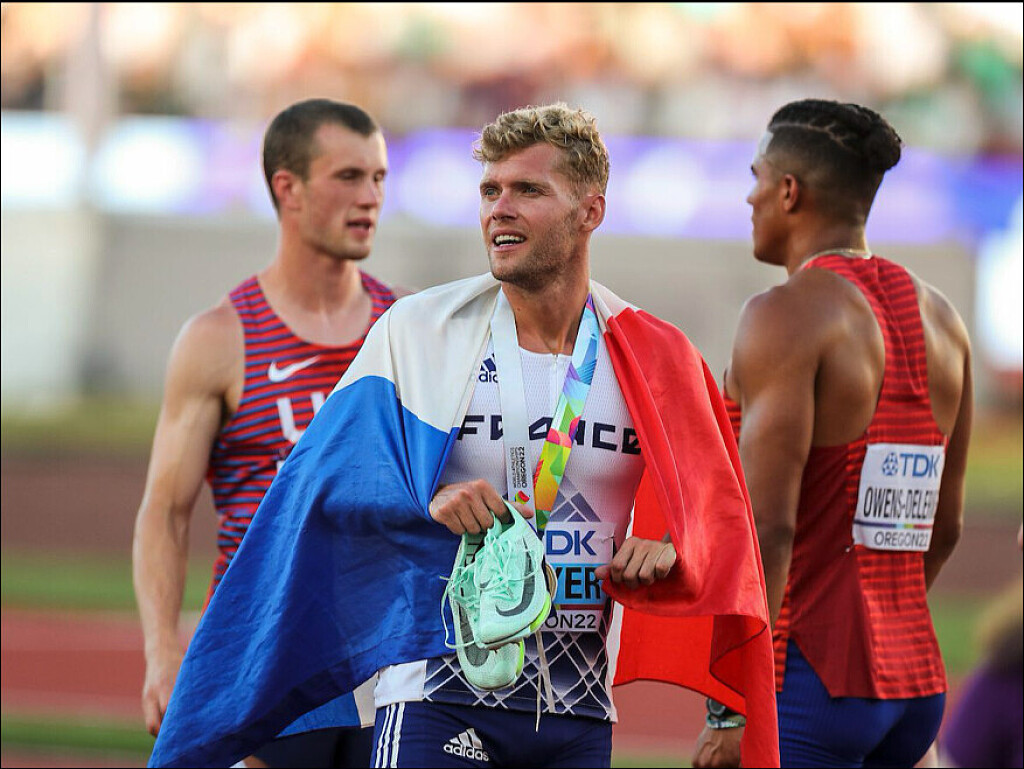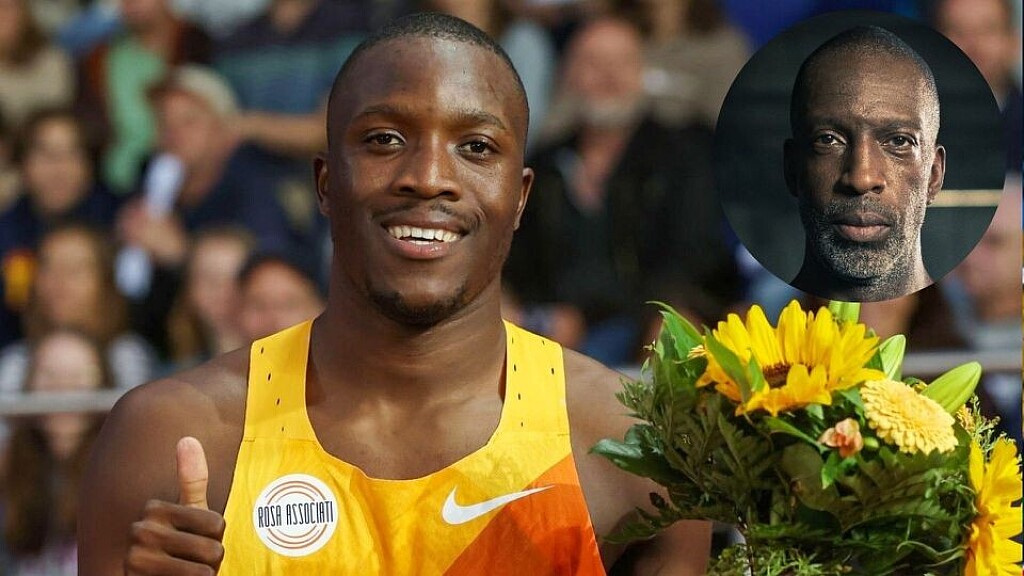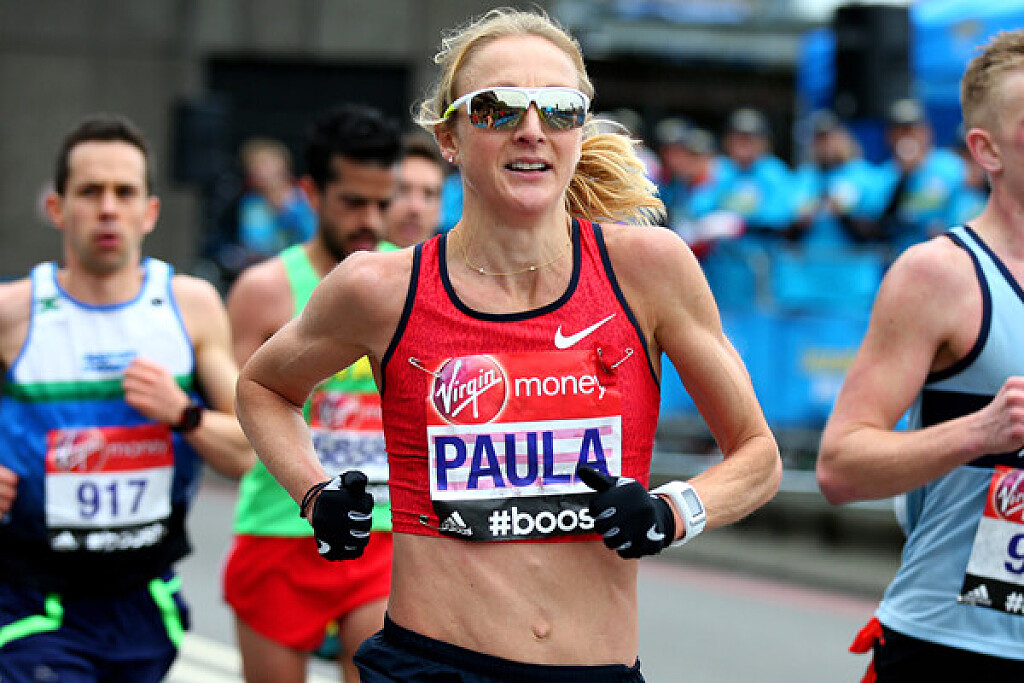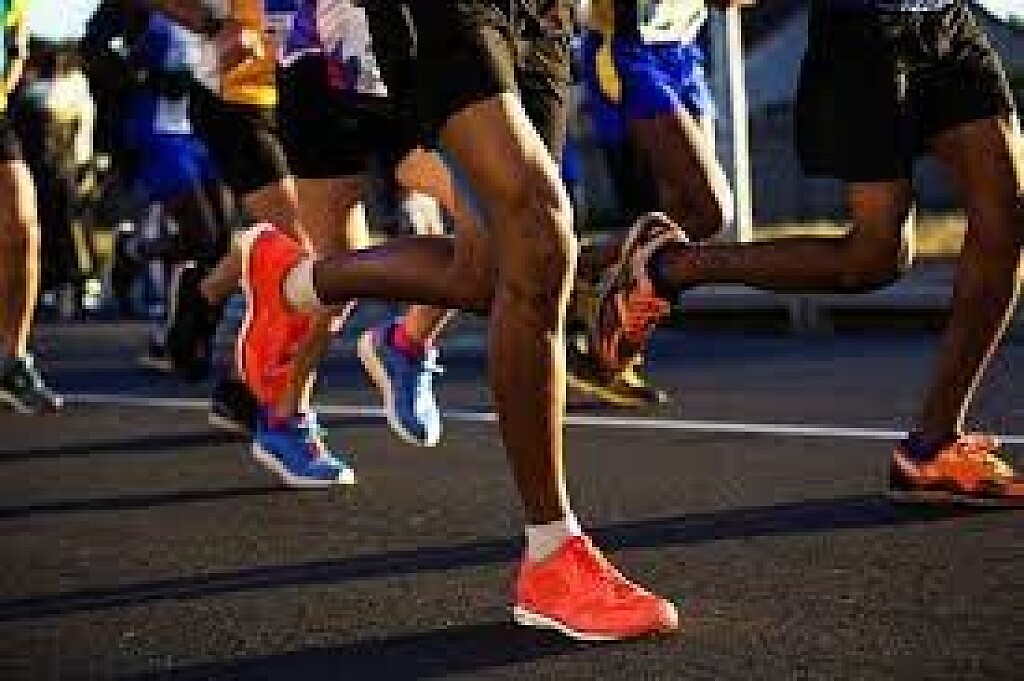Running News Daily
Running News Daily is edited by Bob Anderson in Mountain View, California USA and team in Thika Kenya, La Piedad Mexico, Bend Oregon, Chandler Arizona and Monforte da Beira Portugal. Send your news items to bob@mybestruns.com Advertising opportunities available. Over one million readers and growing. Train the Kenyan Way at KATA Running Retreat Kenya. (Kenyan Athletics Training Academy) in Thika Kenya. Opening in june 2024 KATA Running retreat Portugal. Learn more about Bob Anderson, MBR publisher and KATA director/owner, take a look at A Long Run the movie covering Bob's 50 race challenge.
Index to Daily Posts · Sign Up For Updates · Run The World Feed
Kenya announces Paris 2024 Olympics women's marathon squad
Athletics Kenya has finally unveiled the deep women's field that will don the Kenyan jersey in the women's marathon at the Paris 2024 Olympic Games.
Athletics Kenya has finally unveiled the women’s marathon team to the Paris 2024 Olympic Games through the National Olympic Committee of Kenya.
Defending champion Peres Jepchirchir headlines the strong field as she attempts to win her second successive marathon title at the Olympic Games. Jepchirchir will hope to bounce back from injury woes stronger and she will be joined by a strong team.
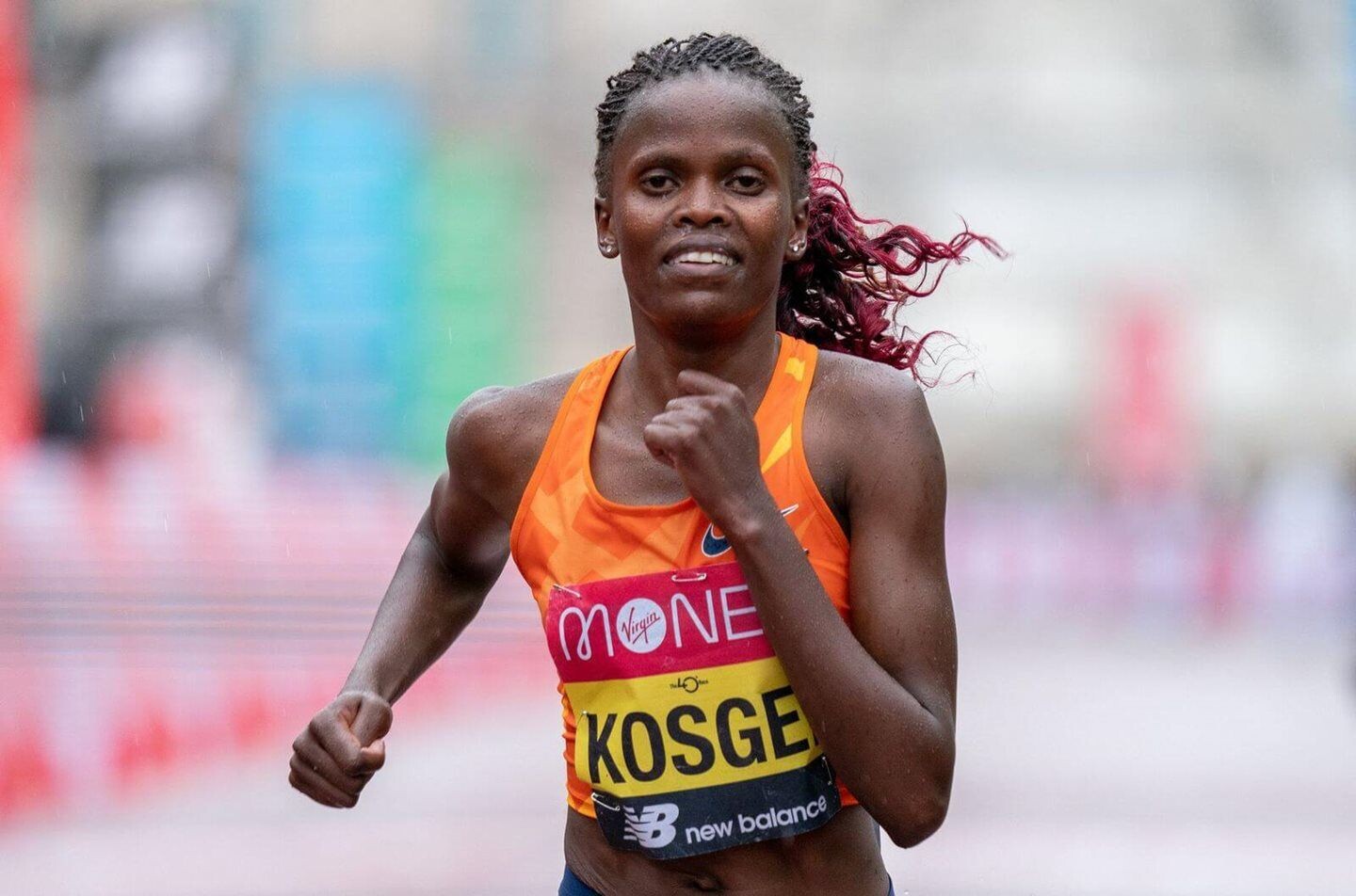
She will build up for the global showpiece at the London Marathon, hoping to improve on her third-place finish last season.
Also included in the team will be reigning New York City and Boston Marathon champion Hellen Obiri who seeks to make history with Team Kenya. Obiri aired her interest to win gold and as she joins Jepchirchir, she is also eyeing the coveted title.

Obiri will be building up for the Olympics at the Boston Marathon where she is the defending champion and she seeks to have a great run in the streets where she claimed her first victory in the marathon.
In an interview with Citius Mag, Obiri exuded confidence ahead of the event, revealing that her body is now used to training for the marathon.
Another strong athlete who adds depth to the field will be former world marathon record holder Brigid Kosgei who was runner-up at the delayed 2020 Tokyo Olympic Games.
Kosgei has been down with injuries but bounced back this season with a win at the Abu Dhabi Marathon and she now heads to the Olympic Games, hungry for the title. Sharon Lokedi, the 2022 New York City Marathon champion will also be among the stars to descend on the course for the Olympic Games as she has made the cut to the team.
Two-time Chicago Marathon champion Ruth Chepng’etich has also not been left behind and she hopes to also claim her first Olympic title. Chepng’etich has been in great form and she will certainly not disappoint when it comes to representing Kenya.
The 2023 Tokyo Marathon champion Rosemary Wanjiru has also been included in the team, thanks to her great form and fighting spirit.
(04/04/2024) Views: 140 ⚡AMPby Abigael Wuafula
Paris 2024 Olympic Games
For this historic event, the City of Light is thinking big! Visitors will be able to watch events at top sporting venues in Paris and the Paris region, as well as at emblematic monuments in the capital visited by several millions of tourists each year. The promise of exceptional moments to experience in an exceptional setting! A great way to...
more...Four tips for transitioning from winter to spring running
Runners across Canada are embracing the arrival of spring. Milder temperatures, longer day and more sunshine are just a few of the things we look forward to as runners in the northern hemisphere. Here are some tips to help you transition from winter so that you don’t miss a stride in your spring training.
1.- Layer up

Most Canadian runners can put away the heavy-duty thermals now that April is here. But dressing for runs in spring can come with its own challenges. Light layers can help you stay warm when you first head out and prevent you from overheating as the temperatures rise with the morning (or vice versa). Here are some great running pieces we’re loving this spring.
2.- Choose the right shoe

While most of us spend our winter runs finding ways to not slip on the ice, spring can mean mud, wet ground and soft terrain. All of these changes can affect the way we run, so it’s important to find shoes that can transition between seasons . Our March favourites feature some great versatile options (think road-to-trail, which can be useful on the mud).
3.- Stay safe on the roads
We’ve got longer days to look forward to, but spring mornings can be dark, damp and overcast. Think about your visibility on the road and bad weather and head out with reflective gear, and even lights, to help you stay visible on early morning and evening runs.
4.- Challenge yourself
You’ve made it through another winter. Why not test your fitness with a spring goal? Many provinces’ 2024 race seasons are kicking off this month. Signing up for a race or challenge is a great way to realize the work you put in this winter and give yourself something to look forward to. If racing isn’t for you, spring is also a great time to check out running clubs welcoming new members. If you’re generally a solo runner, adding some social runs into your week can be an uplifting change.
(04/04/2024) Views: 130 ⚡AMPby Claire Haines
New York City Marathon fights massive new bridge toll
In November, more than 50,000 runners will run the New York City Marathon on an iconic route that includes numerous bridge crossings, including, at the start, the spectacular Verrazzano-Narrows Bridge, which connects Staten Island with Brooklyn. Both upper and lower portions of the bridge have been used for the marathon since 1988.
As The New York Times reports, however, this year, the Metropolitan Transportation Authority (M.T.A.), is demanding that the New York Road Runners (NYRR), who organize the marathon, pay $750,000 for lost toll revenue while the bridge is closed to traffic.

This demand has sparked a standoff, with the M.T.A. initially threatening to confine runners to the bridge’s lower deck, then deciding to allow use of the upper level, albeit contingent on a payment agreement.
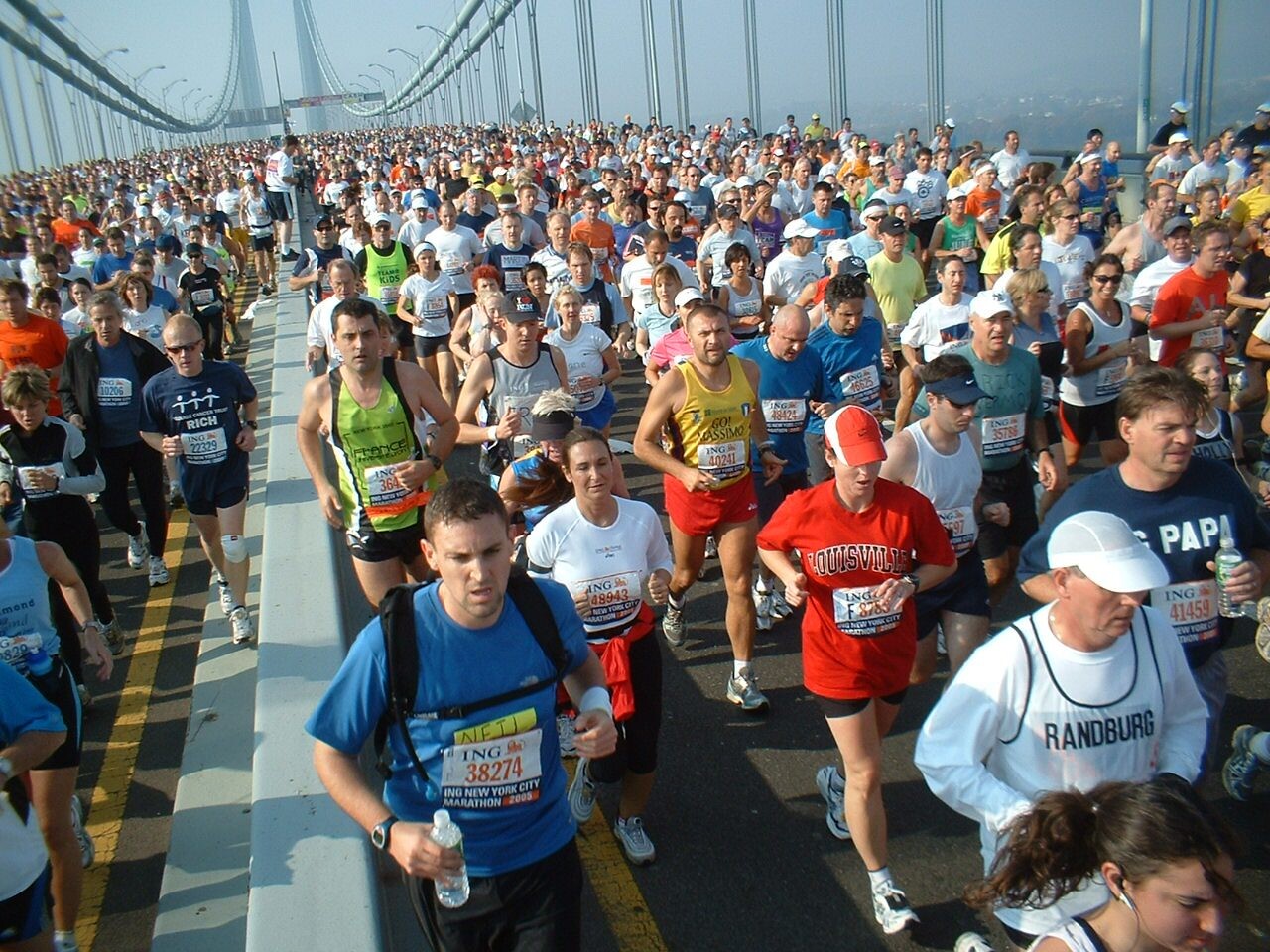
NYRR, highlighting the marathon’s significance as a homegrown institution and an economic boon for the city, has appealed to Governor Kathy Hochul for intervention. It argues that the event’s benefits outweigh the lost toll revenue, citing increased subway ridership on race day as evidence. NYRR began paying the personnel costs of closing the bridge in 2021; last year, the organization says it paid $150,000.
Should the two groups not come to an agreement, NYRR says it may have to extend the length of the race to allow all runners to finish (resulting in longer road and bridge closures and more competitors running in the dark) or reduce the number of participants accepted.
(04/03/2024) Views: 165 ⚡AMPby Keeley Milne
TCS New York City Marathon
The first New York City Marathon, organized in 1970 by Fred Lebow and Vince Chiappetta, was held entirely in Central Park. Of 127 entrants, only 55 men finished; the sole female entrant dropped out due to illness. Winners were given inexpensive wristwatches and recycled baseball and bowling trophies. The entry fee was $1 and the total event budget...
more...Canadian Olympic marathoner Malindi Elmore pulls out of Boston Marathon due to hamstring injury
Canadian Olympic marathoner Malindi Elmore will not be racing at the Boston Marathon on April 15, she announced on Instagram on Tuesday. Elmore, of Kelowna, B.C., has been dealing with hamstring tendinopathy, a condition in which the tendon that connects the hamstring muscles to the pelvis becomes irritated, resulting in pain and limited function.
While Elmore had hoped to feature in a strong field (including reigning champion Hellen Obiri and 2022 New York Marathon champion Sharon Lokedi), she is focused on the Paris 2024 Olympics. “Boston on hold for another year, all eyes towards being FIT and HEALTHY for Paris on August 11,” she wrote.
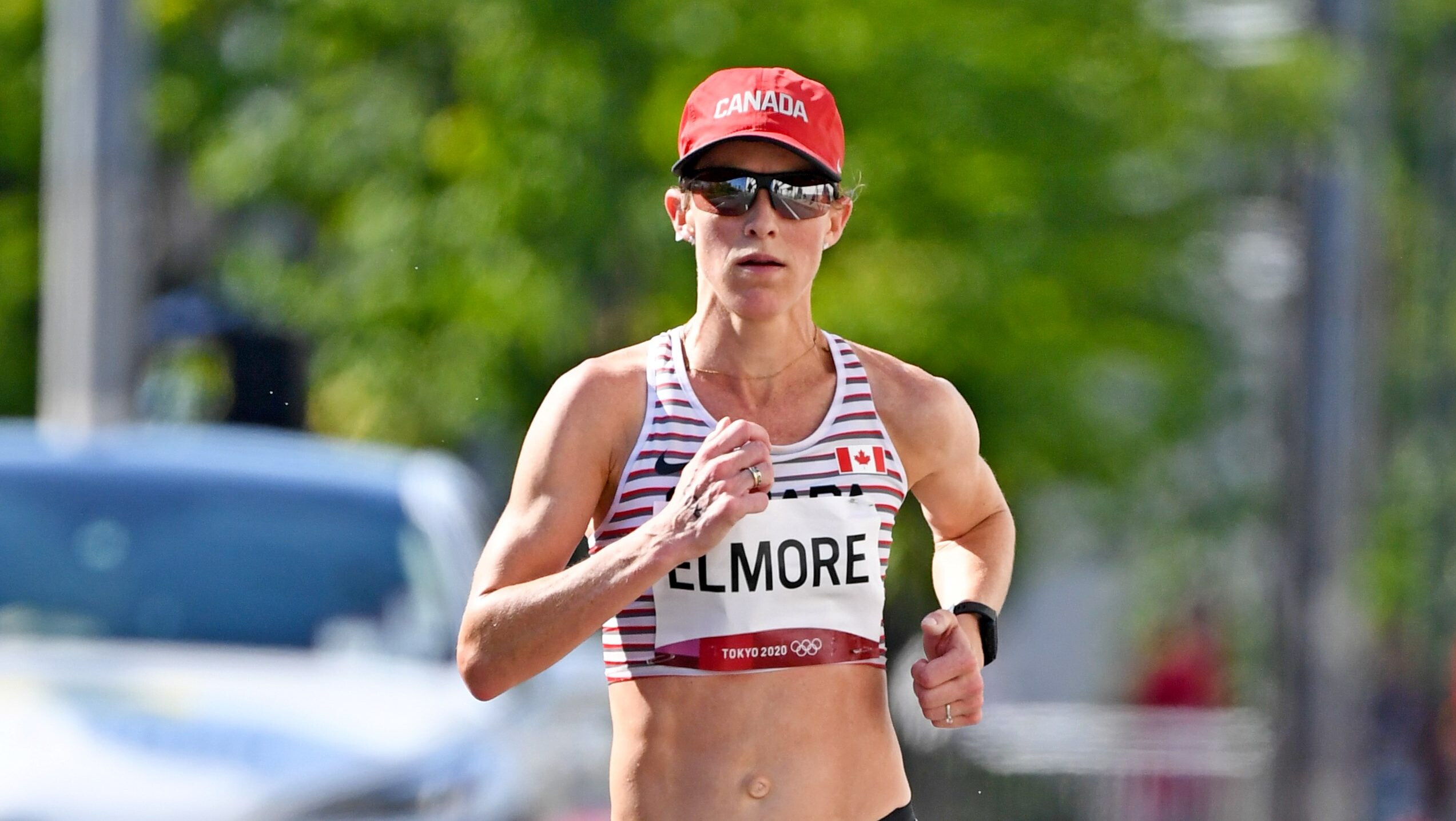
This would have been Elmore’s second time lining up in Boston; in 2022, she ran to an impressive 11th-place finish, posting a time of 2:27:58—the fastest-ever time in Boston by a Canadian woman. She left Boston wanting to return, saying, “It’s a blast to run the crowd-lined streets, where there is always someone cheering you on and shouting your name.”
In February, Elmore (along with national marathon record holder Cam Levins) received a nomination from Athletics Canada and the Canadian Olympic Committee to represent Team Canada in the marathon at the 2024 Paris Olympics. This will be both athletes’ third Olympic appearance for Team Canada.
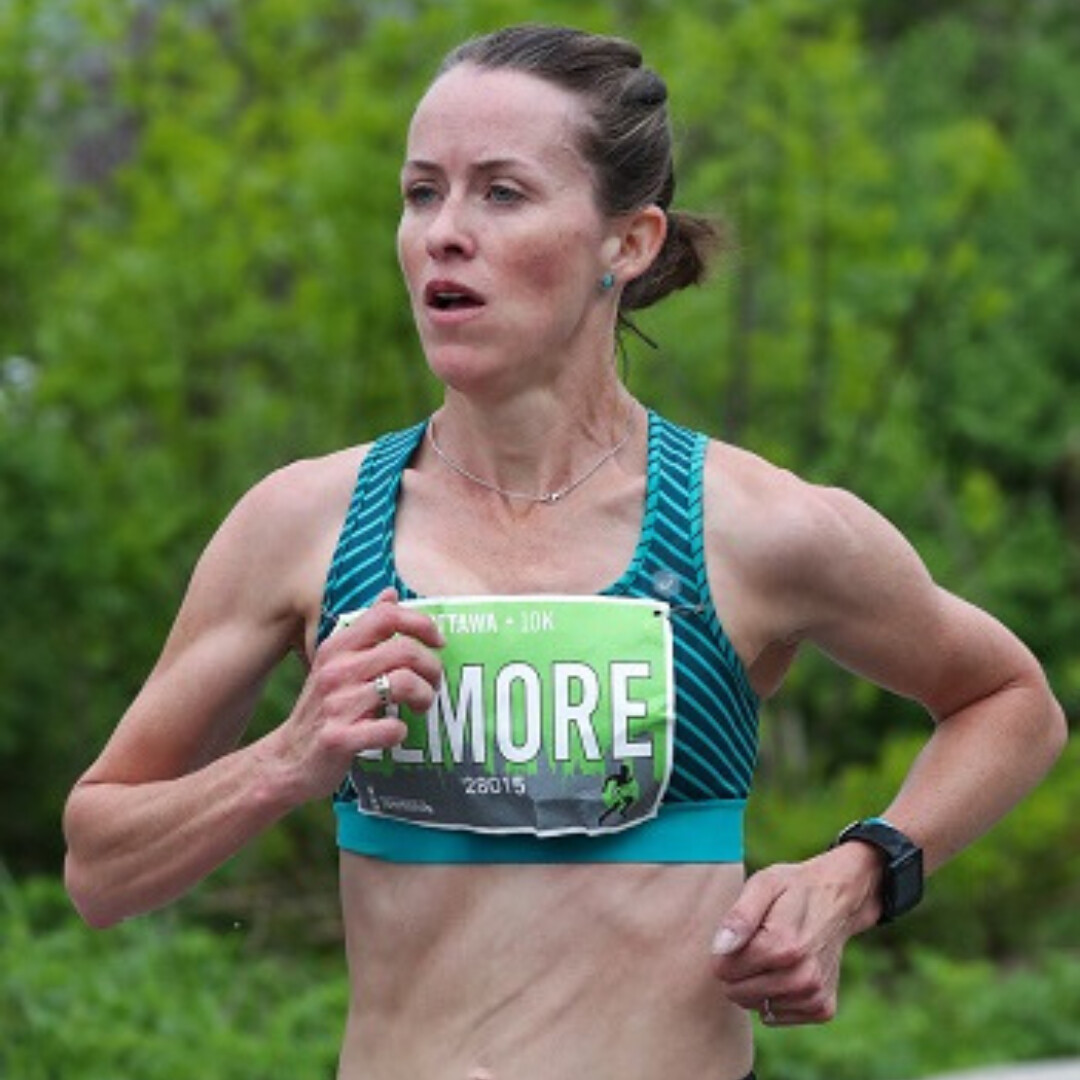
Elmore made her Olympic debut at Athens 2004 in the women’s 1,500 meters. Though she initially retired in 2012, she returned to the sport in 2019 to compete at the Houston Marathon. She ran the Houston Marathon again in 2020 and qualified for the Tokyo Olympics with her Canadian record-setting performance of 2:24:50. In her Olympic return, Elmore placed ninth overall–the second-best finish by a Canadian in the women’s marathon.
While Elmore isn’t able to race this month, she is still training.”After experimenting with more miles, hills and weights this winter to prepare for a hilly and challenging Paris course, my hamstring tendinopathy reared its ugly head again and told me to back off,” she explained on Instagram.”I listened, so here we are, running my favorite easy long runs but holding off intensity and hills until it returns to 100 per cent again. Thankfully (due to my easy paces shuffle) easy running is no problem as I basically have no hamstring extension at this pace so I can still hit my favorite long runs.”
(04/03/2024) Views: 179 ⚡AMPby Claire Haines
Boston Marathon
Among the nation’s oldest athletic clubs, the B.A.A. was established in 1887, and, in 1896, more than half of the U.S. Olympic Team at the first modern games was composed of B.A.A. club members. The Olympic Games provided the inspiration for the first Boston Marathon, which culminated the B.A.A. Games on April 19, 1897. John J. McDermott emerged from a...
more...Manchester Marathon: Seven Tips for marathon week preparation With Steph Kessell
Event week is fast approaching, which means excitement and nerves are running high!
So, what should you do the week before the adidas Manchester Marathon to make sure you succeed and – most importantly – enjoy the challenge?
We spoke to Team GB Olympic marathon runner and professional adidas athlete Steph Kessell, who shared her 7 tips for marathon week preparation.
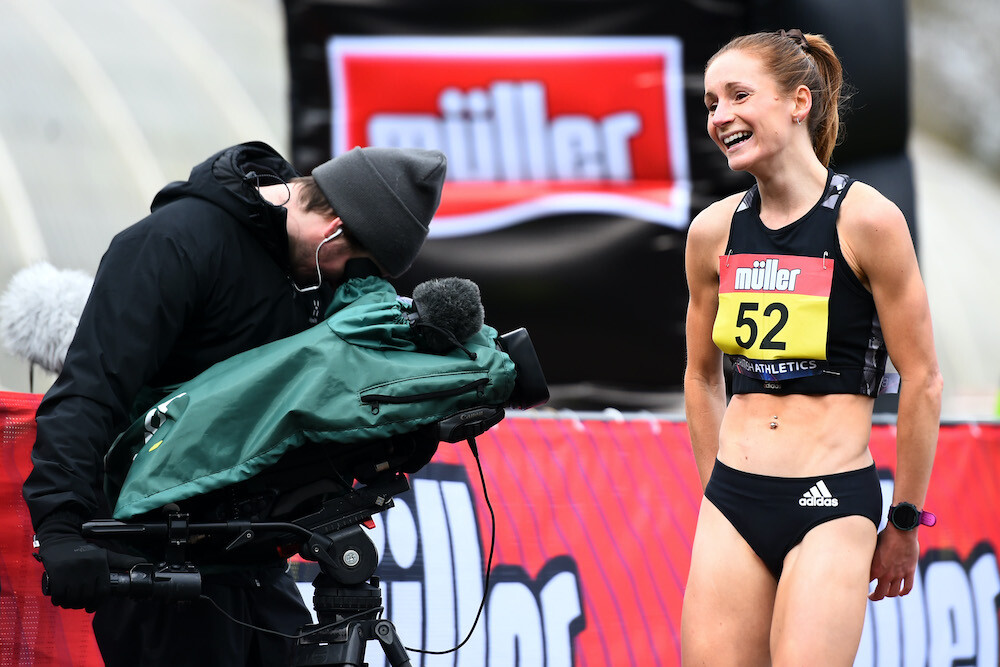
So, grab your notes and don’t miss this great advice from Steph!
1. TAPER
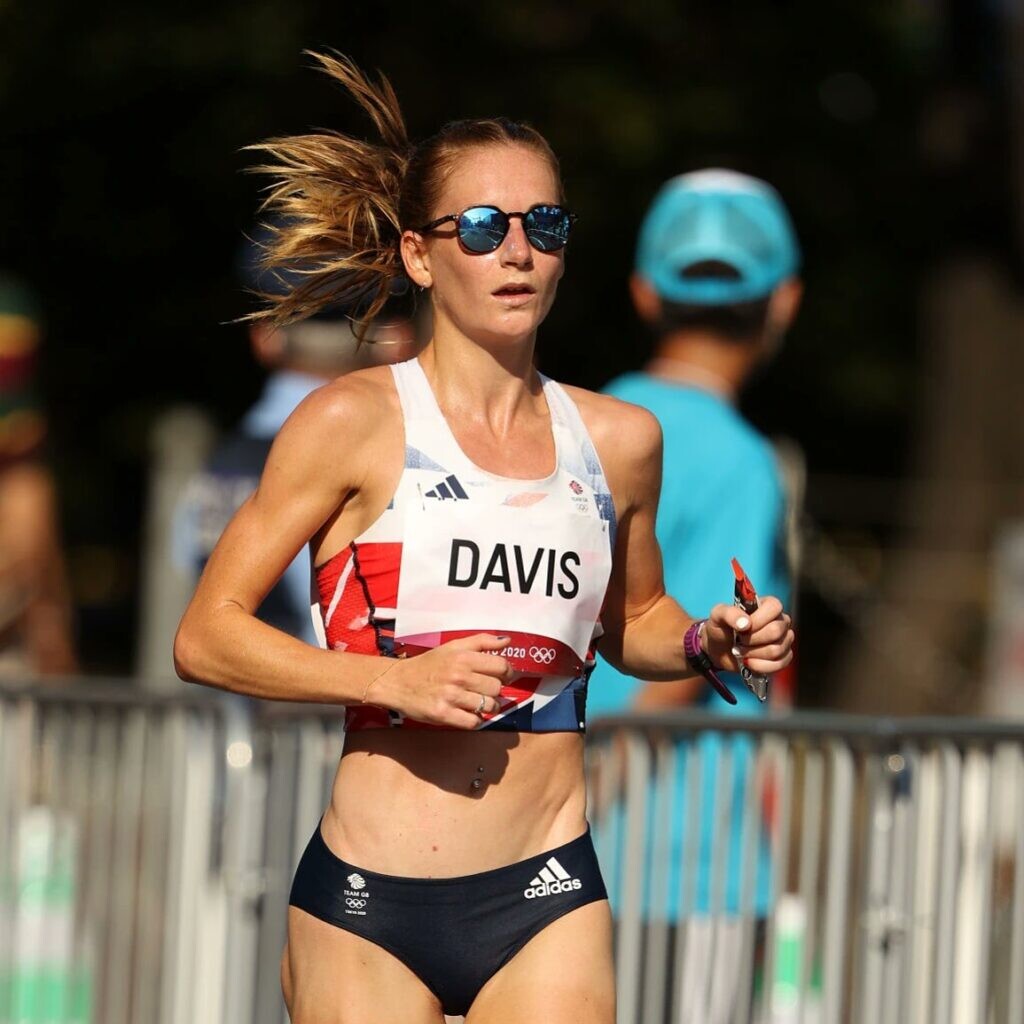
“In the final week, your overall training volume and intensity should have dropped to less than 50% so you can get to the start line of the marathon feeling fresh and raring to go. Your last higher intensity session should be 4-5 days before the marathon and include some marathon paced intervals, but not many of them!
2. SLEEP
“Sleep is the most important recovery aid. Hopefully you have been getting plenty of sleep throughout your training block but during this final week prioritise early nights and aim to get your 8 hours. It is common to not sleep very well the night before the challenge but don’t stress! If you’ve been able to sleep well in the build up then this won’t affect your event. If you can’t sleep, try to stay in bed and relax; this is still good rest and recovery”.
3. HYDRATE
“You want to go into race day feeling hydrated, as dehydration has a negative effect on performance, even if it’s not that warm outside! Carry a water bottle around with you to remind you to drink regularly aiming for at least 1.5 litres a day (NHS guidance). If you have some electrolyte tabs handy then take one daily as well as the evening before the event to ensure you are extra hydrated!”
4. PREP YOUR KIT
“If you haven’t worn your event day kit for a run yet then this is your final chance to test it out. You want to feel comfortable, wear the right amount of layers and avoid chafing. From sports bra, socks, heart rate monitor, race belt or hydration pack, try everything that you plan to wear on the big day, so you can feel confident on the start line.”
5. PLAN YOUR STRATEGY
“At the start of event week write out a plan for the event day. What pace will you start at (or do you plan to join a pacing team to reach your target time?) When will you take on fuel? Where are the water, gels and toilet stops?
When you have planned this out in advance and read over it again and again before the day, then it will help you feel more relaxed, in control and confident. A detailed plan can be a good distraction from the nerves as it gives you something to focus on. Break it down into 5-7 stages and take each part as it comes.”
6. CONSIDER YOUR TRAVEL ROUTE
“Another one that will help ease your nerves! Don’t leave it until the morning of to decide how you are going to travel there. Plan out your route and leave plenty of time to get there. A leisurely start to the day will be more pleasant than a last minute frantic dash trying to find the bag drop and loos!
7. STAY WARM
“Marathons often require an early start which means it can be cold. To combat this, bring a top or jumper you want to donate to charity to keep you warm at the start line. At the adidas Manchester Marathon, you can keep wearing this until the end of the start chute where you will see signs to show you where to donate it as you get close to the start gantry – just make sure that you don’t drop it too early!”.
(04/03/2024) Views: 164 ⚡AMPManchester Marathon
We pride ourselves on welcoming all to take on our 26.2 mile challenge, from some of the world's greatest elite runners, to those who thought completing a marathon would never be possible. Many regular runners find this the ideal event to get a personal best time, whilst everybody finds the incredible Mancunian support throughout the course unforgettable. ...
more...Bethwell Yegon and Chala Regasa head start list in Vienna
Bethwell Yegon returns to the Vienna City Marathon where he was runner-up in unusually warm conditions last year. The Kenyan hopes to go one better this time and win his first marathon on 21st April. He will be challenged by Ethiopia’s Chala Regasa, who is also targeting a first major marathon triumph.
Both athletes have personal bests of slightly over 2:06 and head the competitive men’s field of the Vienna City Marathon. Over a dozen athletes on the current start list have personal records of sub 2:10 and a number of them hope to qualify for the Olympic marathon in Paris this summer.
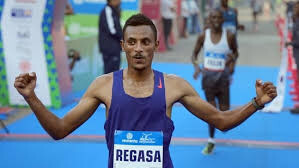
With over 40,000 entries the Vienna City Marathon is Austria’s biggest one-day sporting event and the only road race in the country that features a World Athletics Elite Label. The figure includes entries for shorter races staged parallel to the marathon.
Bethwell Yegon ran a stunning marathon race in Berlin in 2021, when he came from far behind, overtook Ethiopia’s superstar Kenenisa Bekele and almost challenged for victory in the final stages. Yegon finished second and improved his personal best by more than two minutes to 2:06:14. This remains the fastest time of the 31 year-old who trains in Iten, the heart of Kenyan long distance running. “I am happy to return to Vienna and my goal is to fight for victory and take a place on the podium. Hopefully the weather conditions will be fine and there will be a strong group to run with,” said Bethwell Yegon, who clocked 2:06:57 a year ago, which is the fifth fastest time ever run in the history of the Vienna City Marathon.
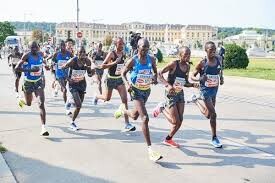
Chala Regasa has already run on Vienna’s roads as well, though in a different role. The 26 year-old Ethiopian was part of the pacemaking team that supported Eliud Kipchoge when he sensationally broke the two hour marathon barrier in 2019. It was a year ago when Regasa finally ran his marathon debut in Rotterdam with a fine 2:06:11 for fifth place. With this time he is currently the fastest runner in the field. Vienna will be his second marathon and his strong half marathon PB of 59:10 suggests that there is some room for improvement. His biggest career win so far came in the New Delhi Half Marathon in 2022, where Regasa clocked 60:30 and beat a strong field.
Felix Kibitok is another runner who features both, a personal best of sub 2:06:30 and a very fast half marathon PB. The Kenyan was fifth in Barcelona in 2022 with 2:06:28 and achieved 59:08 in the Prague Half Marathon back in 2019. On two more occasions Kibitok ran sub one hour half marathon times. Samsom Amare from Eritrea, who won his marathon debut in Abu Dhabi in 2023 with 2:07:10 and was ninth at the World Half Marathon Championships in 2023, plus Kenyans Albert Kangogo (2:07:48) and Leonard Barsoton (2:09:06) could well challenge for a place on the podium as well.
The Vienna City Marathon is one of the last few races during the second half of April giving athletes a chance to qualify for the Olympic Games’ marathon in Paris this summer. The official qualifying time is 2:08:10 and the qualifying window shuts on 30th April. There are a number of athletes who will try to fulfill their Olympic dream in Vienna: Belgium’s Lahsene Bouchikhi has a personal best of 2:08:36 from Valencia last year while Daniel Paulus is the national record holder of Namibia. He clocked 2:08:40 in his debut in Daegu, South Korea, in 2023. Juan Pacheco from Mexico is also expected to try to qualify for Paris. He has a personal record of 2:09:45 while Tiidrek Nurme from Estonia has run 2:10:02.
The Vienna City Marathon will also be hosting the Hungarian national marathon championships for the second time in a row. Around 40 of the best athletes from the neighbouring country will come to Vienna to determine their champions.
(04/03/2024) Views: 171 ⚡AMPby AIMS
Vienna City Marathon
More than 41,000 runners from over 110 nations take part in the Vienna City Marathon, cheered on by hundreds of thousands of spectators. From the start at UN City to the magnificent finish on the Heldenplatz, the excitement will never miss a beat. In recent years the Vienna City Marathon has succeeded in creating a unique position as a marathon...
more...Four ways to be a more consistent runner, according to science
For runners, motivation can be the game-changer between smashing personal bests and falling short. But what exactly fuels our drive when the going gets tough? According to The New York Times, it often comes down to external factors—like a supportive friend, a motivating app or a commitment made to someone else.
Recent research underscores the power of a workout buddy in boosting motivation, especially for those struggling to stay consistent. Whether teaming up with a friend already crushing their fitness goals or mentoring a newcomer, accountability is key. Ready to stay on track with your consistency goals? Here are some snappy strategies to keep you going strong.
1.- Signing up can help (but keep it secret)

For those who thrive on structure, signing up for a race or athletic event can provide the necessary framework to stay on track. However, it’s wise to keep these ambitions close to the chest until you’re well on your way to the finish line. Research suggests that sharing your goals prematurely, particularly on social media, might trick your brain into feeling accomplished without putting in the effort.
2.- Excel with accountability
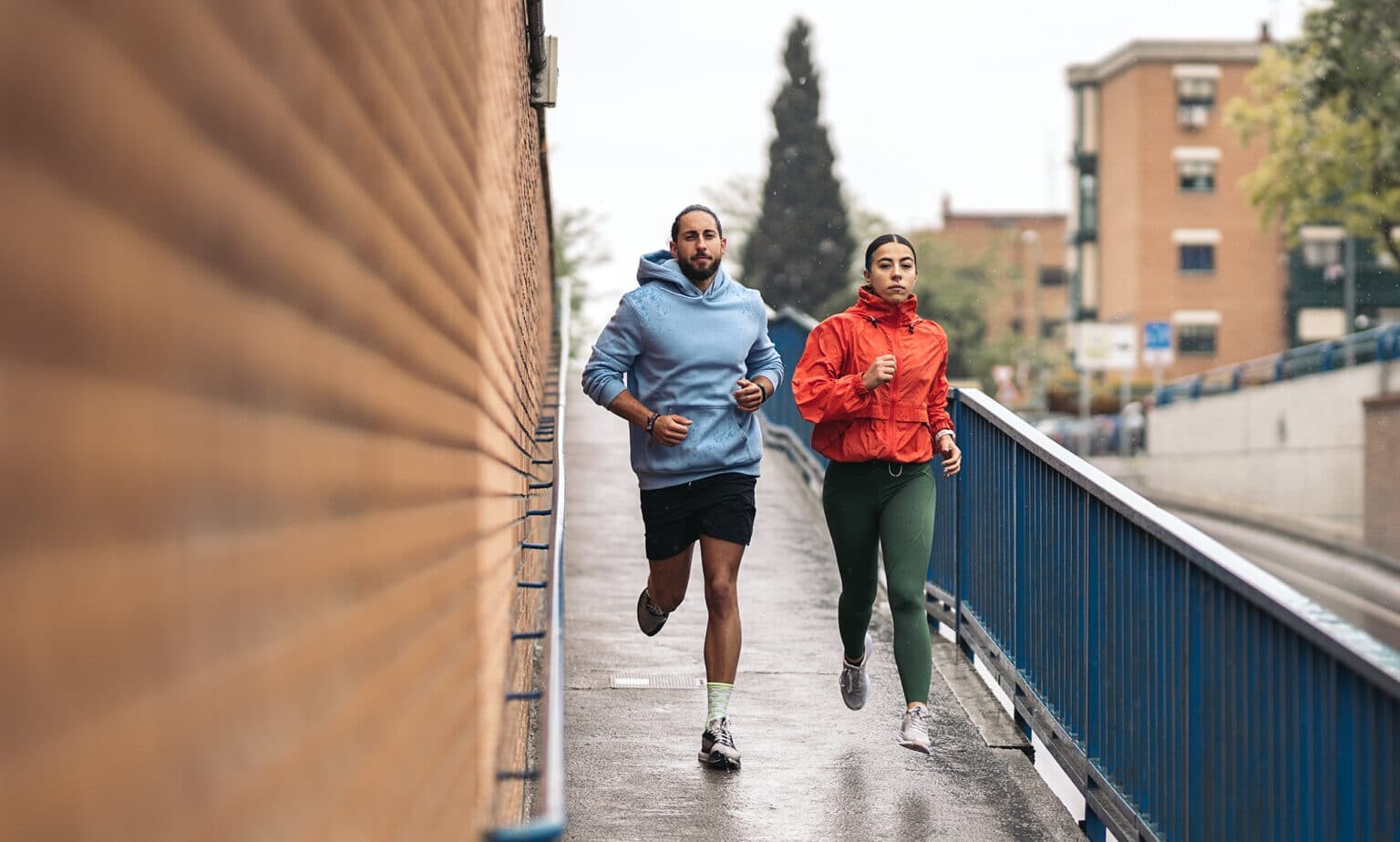
Personal trainers or fitness instructors can also serve as powerful sources of accountability. By committing to attending a scheduled class or session, you’re not just investing in your health but also avoiding the discomfort of flaking out.
Denver-based clinical psychologist Justin Ross specializes in athlete mental health and performance, and says when he coaches newer athletes he experiences the benefit of accountability firsthand: “I’ve got to show up, not just for me but for them as well,” he said.
3.- Paper clips for the win
For individuals who respond well to visual cues, creating a tangible representation of progress—such as a paper-clip chain or rubber band ball—can provide the necessary motivation on those days when motivation is lacking. “On days when you’re really not feeling it,” Ross told The New York Times, these visual reminders “can help provide a little bit of that energy to get you started.”
4.- Money motivates
For those seeking an extra push, some apps offer monetary rewards for meeting fitness goals, turning exercise into a profitable endeavor. By tracking metrics like time or distance through your wearable fitness device, apps like Charity Miles make charitable donations in your name; others offer discounts.
Finding what works for you might require some trial and error. Whether it is finding the right workout partner, setting achievable goals or leveraging external incentives, staying accountable can be the key to unlocking your fitness potential.
(04/02/2024) Views: 174 ⚡AMPby Keeley Milne
Pulse Sports: Kenyan media caught some people with this April Fools' prank
Eliud Kipchoge has not suffered any injury or withdrawn from the Paris 2024 Olympics with the marathon GOAT having put the disappointments of Tokyo behind him.
You might have fallen for our April Fool’s Day story about two-time Olympics champion Eliud Kipchoge withdrawing from the Paris 2024 Games.
Well, the marathon GOAT is very much on the road to Paris as he has not withdrawn or suffered any injury.
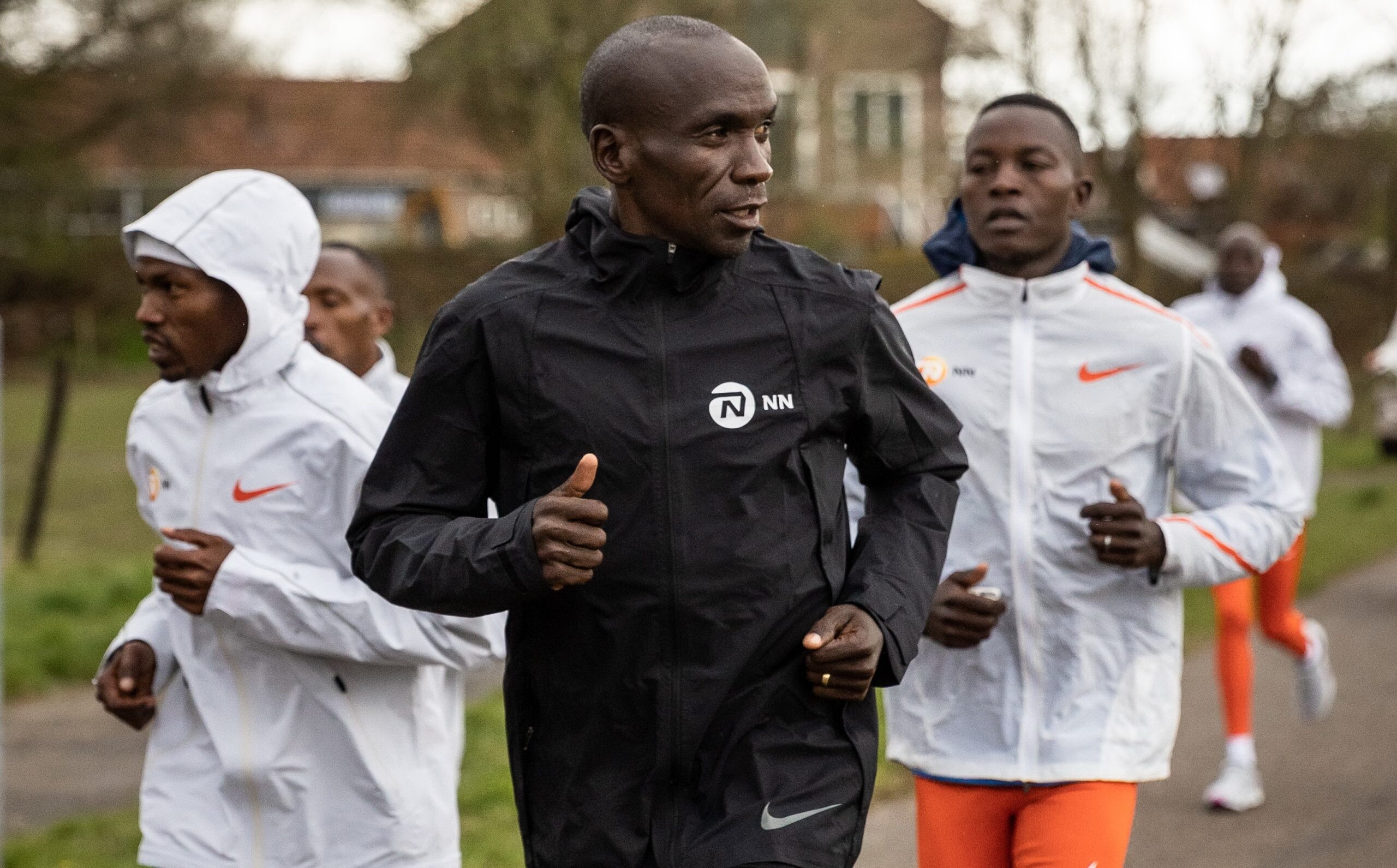
Kipchoge will be heading to Paris with the aim of becoming the first man to win three straight Olympics marathon gold medals and is back in training ahead of the Games.
ipchoge was selected among Team Kenya’s provisional squad for the Olympics alongside with 2024 Tokyo Marathon champion Benson Kipruto, Timothy Kiplagat and Vincent Ngetich, who finished second and third in Tokyo, Bernard Koech, two-time New York Marathon champion Geoffrey Kamworor, Cyprian Kotut, 2022 London Marathon champion Amos Kipruto and Titus Kipruto.
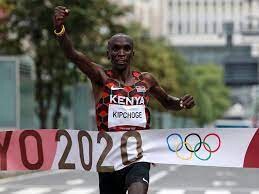
With Athletics Kenya set to add another name to the roster before naming the final three, Kipchoge is hot favourite to be on the list that will head to Paris and he is fully focused on making history in the French capital.
“My aim is to inspire as many people as I can. I am aiming for three gold medals consecutively,” Kipchoge told the LOAF Podcast.
“Back-to-back-to-back. This is in my mind. I will try my best to push myself to win it three times and tell the next generation that longevity is the key and you can make a goal, pursue it and make it happen.”
Kipchoge is coming off a disappointing outing in Tokyo where he managed a 10th-place finish, having started well, something that saw some observers doubt whether he can win Olympics gold.
While he has put the disappointment behind him, he admits the defeat took its toll on him after toiling for so long to ensure he achieved success.
“I have learnt that you can train in a good way, be in a good shape but putting in it practice, something will remain unlocked and disappointments will come in but a coin has two sides but in life, it has three sides, that is thinking big,” he added.
“I did not succeed as far as Tokyo marathon is concerned. I feel disappointed to train for four, five months without getting the real results but it is not the end of life.”
With the marathon being the last event on the Olympics programme on August 11, Kipchoge has four months to prepare for what could be his final appearance at the Games and possibly right the wrongs of Tokyo in Paris.
(04/02/2024) Views: 387 ⚡AMPby Joel Omotto by Pulse Sport
Paris 2024 Olympic Games
For this historic event, the City of Light is thinking big! Visitors will be able to watch events at top sporting venues in Paris and the Paris region, as well as at emblematic monuments in the capital visited by several millions of tourists each year. The promise of exceptional moments to experience in an exceptional setting! A great way to...
more...2 weeks to Boston: tips to prepare
You've started your taper. Here are some things to keep in mind.
April 1 means it’s officially race month for those headed to the Boston Marathon on April 15. If you’ve spent your winter training for the 2024 edition of this storied race, you’re probably starting to think about the final preparations you can make to set yourself up for success on April 15. Here are five tips to consider:
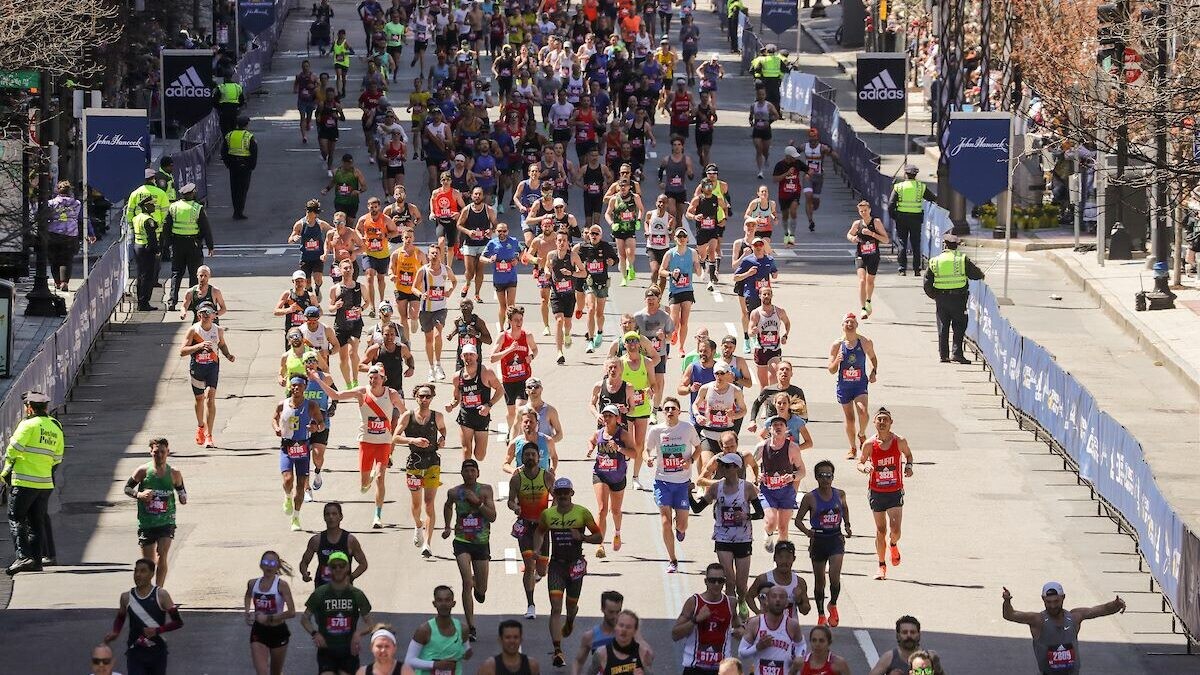
Weather
It’s not too early to start checking the forecast and thinking about how the weather will factor into your race day plans–from what you’ll wear on the bus to Hopkinton to what you’ll run in. Boston in April can bring all types of weather, as we’ve seen on race day many times. As of today, race-day conditions are predicted to be a lovely 15 C, mainly sunny with a low chance of precipitation. While this could change, it appears we can look forward to a near-perfect day for running. However, packing for all conditions is still advised!
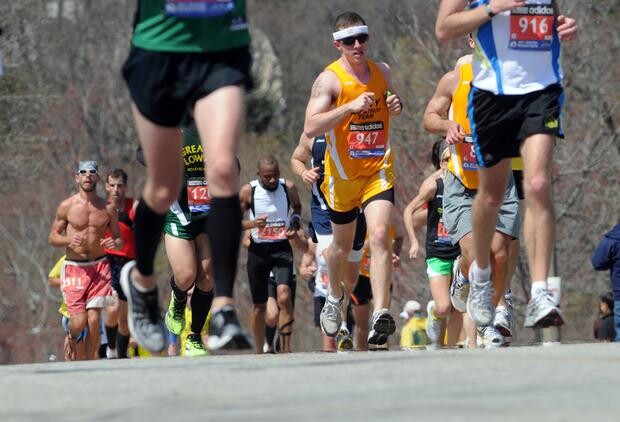
The right mindset
With more time (and energy) on their hands (thank you, taper!), runners often experience feelings of excitement but also stress, doubt and anxiety. This is normal. Reading how the elites handle these emotions can really help. Check out this summary of running mindset tips from some of the greats.
Make a race weekend checklist
Now is the time to locate your registration information, review travel plans, make that pre-race dinner reservation and start to pack. Many runners prefer to travel with their race-day nutrition with them, so ensuring you’ve got the right supplies and some backups will reduce the risk of forgetting anything in the final days.
Prep for the hills
The hard work is done. As runners enter their taper, it’s a good time to start thinking about the unique nature of the Boston course. You’ve probably done lots hill reps in training. As you head into the last two weeks of easier training, now’s a good time to continue practicing some downhill running so the legs get used to what’s coming on April 15.
(04/02/2024) Views: 190 ⚡AMPby Claire Haines
Boston Marathon
Among the nation’s oldest athletic clubs, the B.A.A. was established in 1887, and, in 1896, more than half of the U.S. Olympic Team at the first modern games was composed of B.A.A. club members. The Olympic Games provided the inspiration for the first Boston Marathon, which culminated the B.A.A. Games on April 19, 1897. John J. McDermott emerged from a...
more...American youngster Quincy Wilson reacts after beating Usain Bolt's 400m record
Quincy Wilson has reacted after beating Usain Bolt's and Kirani James' records in the 400m.
American youngster Quincy Wilson has reacted after his scintillating run in the 400m at the Bullis Track sophomore where he was opening his outdoor season.
Wilson stopped the clock in an impressive Personal Best time of 45.19 to cross the finish line first. The time he clocked placed him in the books of records as a 16-year-old where he surpassed the times the fastest man in the world Usain Bolt ran when he was the same age.

Wilson also beat former Olympic champion Kirani James’ record of the times he would run when he was the same age. At 16, Bolt’s Personal Best time was 45.35 while James had a Personal Best time of 45.24.
“I feel great…I feel like I executed the race pretty well but there are a lot of things that I have to work on. Coming up from one week of training since the indoor, I feel pretty good.

“It’s feeling great coming out here and trying to stay healthy until the end of the season because it’s a long season. I just want to stay healthy and be able to keep getting ready for my craft and things like that and just keep working hard towards the goal,” Wilson said.
He added that this season, he will be targeting the Olympic Games in Paris, France where he intends to make an impact.
“I also want to be able to just run a great race and remain thankful for what I’m able to do. I’ve been watching all those races, studying them, and breaking them down from 50m to 100m…I learn how to execute my race from those videos.
“I don’t really know where I’ll be racing next and I just want to go week by week learning different things and just executing so you never know. I just want to accept the challenge and go with it,” he added.
(04/02/2024) Views: 166 ⚡AMPby Abigael Wuafula
Mary Moraa confirms next assignment in the build up to the Paris 2024 Olympics
Commonwealth Games 800m champion Mary Moraa has confirmed her next destination as she builds up steadily for the Paris 2024 Olympic Games.
Reigning World 800m champion Mary Moraa has disclosed her next stop after a fruitful outing at the African Games where she bagged a gold medal in the 400m and propelled Team Kenya to a bronze medal in the 4x400m mixed relay.
Moraa will be eyeing her maiden appearance at the Olympic Games in Paris, France and also looking for a podium finish in the event which has very strong opponents waiting for her to descend on the starting line.
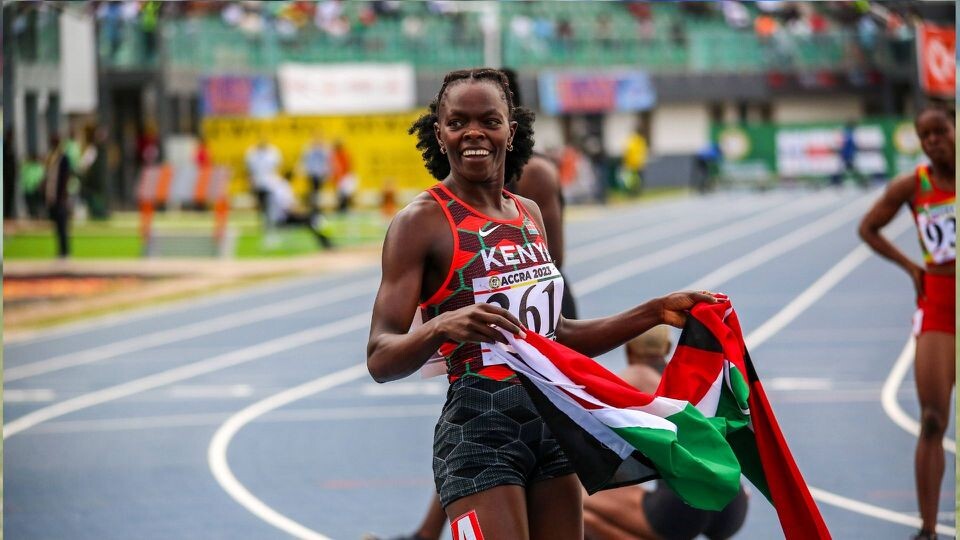
The Commonwealth Games champion has confirmed participation at the Kip Keino Classic, where she intends to showcase fireworks just like last year. This year’s event will be held at the Nyayo National Stadium and the likes of Africa’s fastest man Ferdinand Omanyala and world leader Letsile Tebogo have already confirmed participation.
In a post on her Facebook page, Kisii Express said: “From African Games, I shift my gears to Kip Keino Classic Continental Tour.”
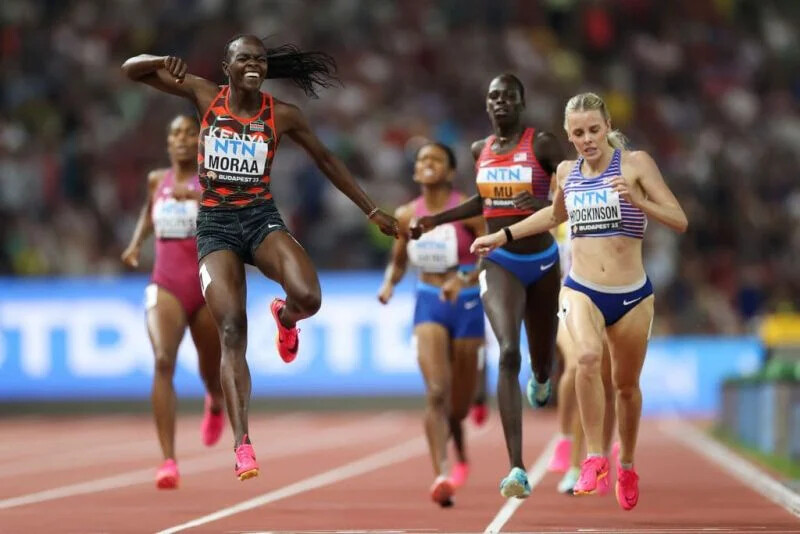
Moraa has been off to a good start to the season and she will hope to enjoy 2024 just like she did in 2023. The Kenyan was only beaten once in the 800m, at the Prefontaine Classic, the Diamond League Meeting final, where she finished fourth.
In the race, Athing Mu won the trophy as Great Britain’s Keely Hodgkinson and Jamaica’s Natoya Goule completed the podium.
This season, she has competed in the 400m unbeaten and her speed seems to be in perfect condition. At the Kip Keino Classic, Moraa will compete in her specialty, the two-lap race.
(04/02/2024) Views: 164 ⚡AMPby Abigael Wuafula
Paris 2024 Olympic Games
For this historic event, the City of Light is thinking big! Visitors will be able to watch events at top sporting venues in Paris and the Paris region, as well as at emblematic monuments in the capital visited by several millions of tourists each year. The promise of exceptional moments to experience in an exceptional setting! A great way to...
more...Kibor turns focus on Ottawa Marathon after ruling Kapsabet race
After winning the inaugural Kapsabet Half Marathon, Marion Kibor's next stop will be the Ottawa Marathon on May 26 in Canada.
Kibor, also the 2023 Paris Half Marathon silver medalist, said the Kapsabet race was part of her build-up ahead of the Ottawa Marathon, where she will seek her maiden win in the 42km distance.
“ I am trying to work on my endurance by racing in some of these events. Last year, I competed in the Amsterdam Marathon and finished eighth. I want to improve on that,” said Kibor.
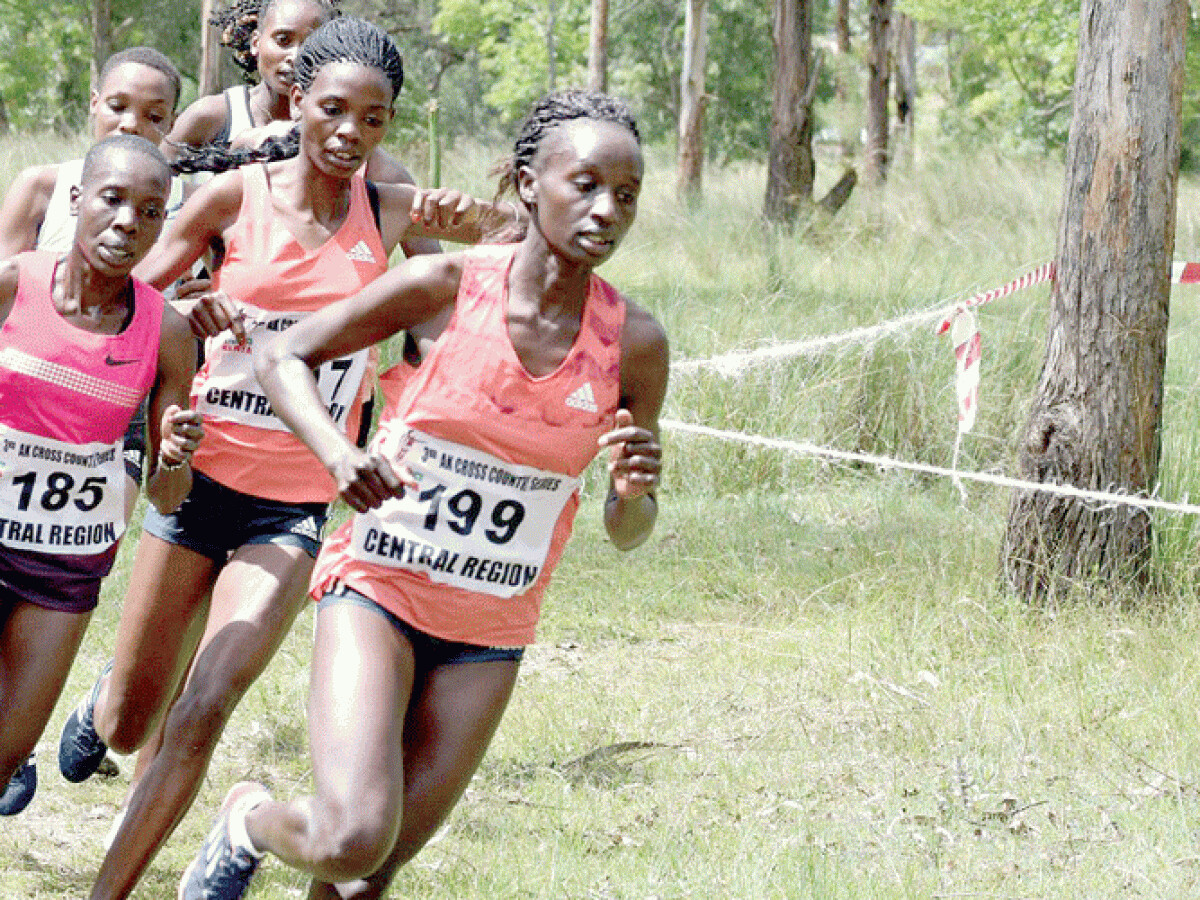
Kibor won the Kapsabet Half Marathon in 71:34.56 ahead of Gladys Songol (73:29.31) and Joan Chepkosgei (74:03.39).
She said she won easily because she trains on the same course. “Since I train here, it was easy for me despite the hilly course posing challenges. I was prepared for this race and the victory did not come as a surprise,” She said.
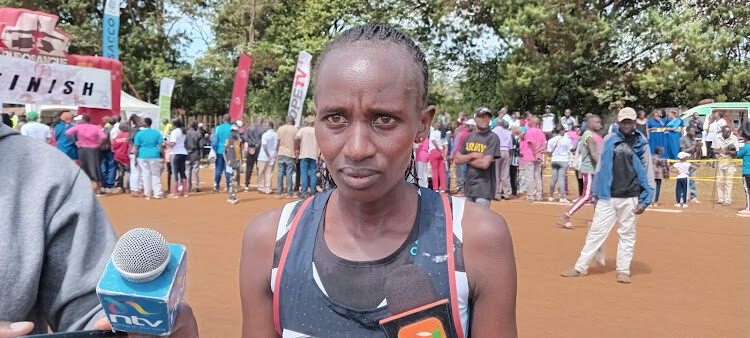
She said such local races are good for the upcoming athletes to build careers. These are the kinds of races they are supposed to use to showcase their talents.
(04/01/2024) Views: 186 ⚡AMPby Emmanuel Sabuni
Ottawa Marathon
As one of two IAAF Gold Label marathon events in Canada, the race attracts Canada’s largest marathon field (7,000 participants) as well as a world-class contingent of elite athletes every year. Featuring the beautiful scenery of Canada’s capital, the top-notch organization of an IAAF event, the atmosphere of hundreds of thousands of spectators, and a fast course perfect both...
more...Robert Kiprop wins Paderborner Osterlauf 10k
Former All-African Games 5000m champion, Robert Kiprop took the top honors at the Paderborner Osterlauf 10k race held on Sunday (31) in Paderborn North Rhine-Westphalia, Germany.
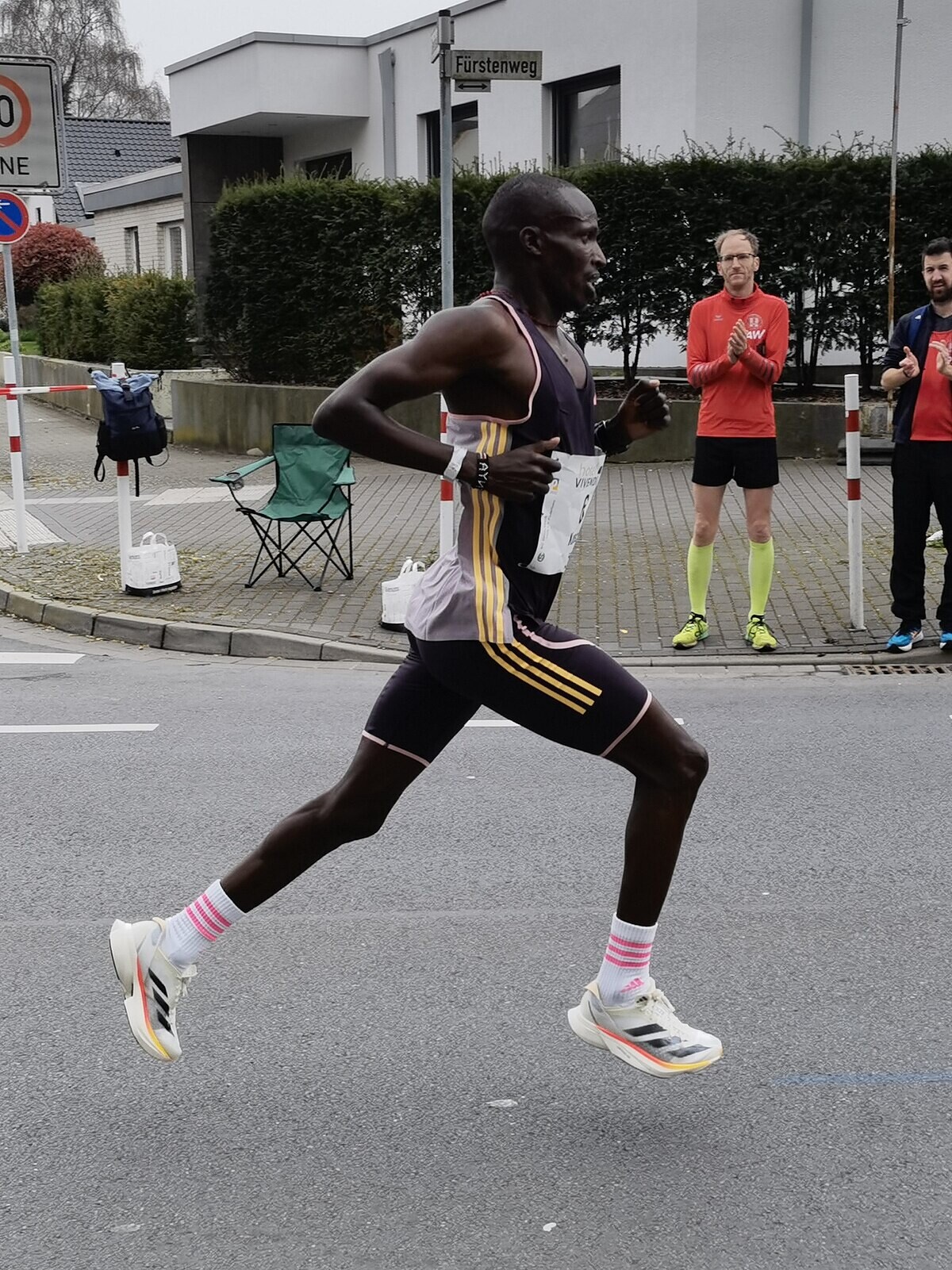
The 27 year-old took the honors in a season best of 27:54 and was followed in second place by Ethiopia’s Kifele Kefyalew in 28:11 with Ireland’s Fearghal Curtin closing the podium three finishes in 28:25.
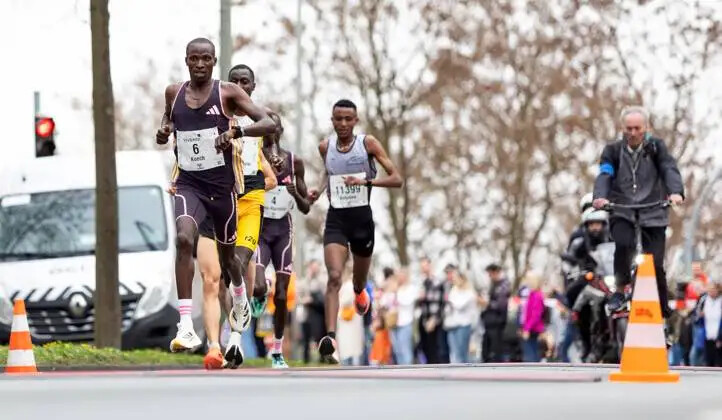
German’s Simon Boch and Vincent Kimutai from Kenya finished in fourth and fifth place tied in 28:37.
LEADING RESULTS
10KM MEN
Robert Kiprop (KEN) 27:54
Kifele Kefyalew (ETH) 28:11
Fearghal Curtin (IRE) 28:25
Simon Boch (GER) 28:37
Vincent Kimutai (KEN) 28:37
Titus Kiprotich (KEN) 29:15
Stephen Mwangi (KEN) 29:16
(04/01/2024) Views: 171 ⚡AMPby James Koech
Paderborner Sterlauf
It is well known that the fascination of running has steadily increased in recent years.But the Paderborn Easter Run has been around for 72 years. It is the oldest street race in Germany, organized by the SC Grün-Weiß Paderborn, enjoys even after so many decades of growing popularity and belongs to many already traditional Easter.There are even runners and helpers...
more...Sawe sets focus on Prague Half Marathon
After what is considered a poor show at the World Athletics Cross Country Championships in Belgrade, Sebastian Sawe will hope to do better when he takes part in the Prague Half Marathon on Saturday, April 6.
He has some days to work harder and be ready for the half-marathon action after finishing seventh in Belgrade on Saturday, March 30, 2024.He has some days to work harder and be ready for the half-marathon action after finishing seventh in Belgrade on Saturday, March 30, 2024.
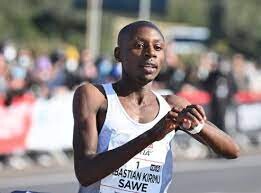
At the World Cross Country, Sawe was one of the favorites, but he faltered as Jacob Kiplimo of Uganda made history by defending the title. However, his seventh place helped Kenya win team gold.
Although, individually, it was not a good performance, Sawe has a chance to right the wrongs in Prague.
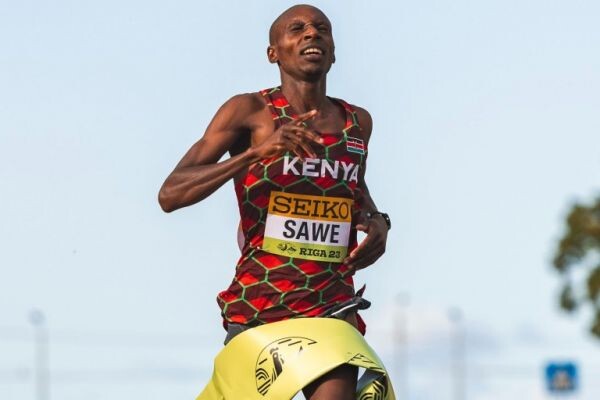
He is the fastest entrant for the Prague action as he enjoys a 58:29 personal best that he achieved at the 2022 Bahrain Royal Night Half Marathon. He will have Geoffrey Kiprotich challenge him as a teammate.
Kiprotich is a sub-one-hour runner on the field with a 59:13 personal best, and Gideon Kiprotich, who holds a 1:00:28 personal best, will also be in action.
Uganda, Kenya's emerging arch-rivals, will be led by Maxwell Rotich, who enjoys a 1:00:06 personal best from last year's Praha Half Marathon.
Although the Ugandan unit is seen as Kenya's main challenger, Ethiopia's Haftamu Abadi Gebresilase (1:00:27) is considered a strong rival too.
In the women's race, Jesca Chelangat and Vivian Melly will carry the flag. Nigistu Haftu of Ethiopia, who holds a personal best of 1:06:17, just 17 seconds shy of Irene Kimais' winning time from last year, will offer Kenyans the needed challenge.
(04/01/2024) Views: 167 ⚡AMPby Kiplagat Sang
Prague Half Marathon
Start the RunCzech season with one of the biggest running events in the Central Europe! Every year the Sportisimo Prague Half Marathon excites spectators with performances of elite athletes breaking records. Enjoy a course with incomparable scenery in the heart of historic Prague that follows along the Vltava river and crisscrosses five beautiful bridges. Take in majestic views of the...
more...Shock as Eliud Kipchoge withdraws from Paris 2024 Olympics
Five-time Berlin Marathon Eliud Kipchoge has released a statement explaining why he will not be defending his marathon title at the Paris 2024 Olympic Games.
In a shocking turn of events, two-time Olympic marathon champion Eliud Kipchoge will not be defending his Olympic title at the Paris 2024 Olympic Games scheduled for later this year.
In a heartfelt message to his fans, Kipchoge announced his withdrawal from the global showpiece. The decision, which has sent shockwaves throughout the sports world, comes as a surprise to many fans and analysts alike.
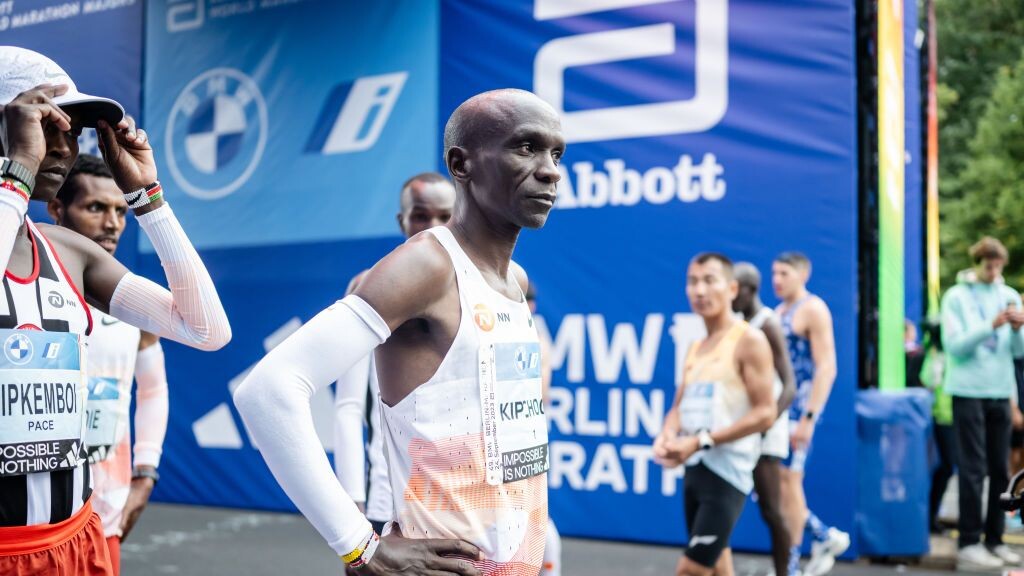
Kipchoge cited personal reasons, noting his desire to focus on other endeavours. The five-time Berlin Marathon champion issued a statement earlier today expressing his gratitude for the support he has received throughout his career, but also his need for a change in direction.
"It is with a heavy heart that I announce my decision to withdraw from the Paris 2024 Olympics. Competing at the Olympics has always been a great thing and I was looking forward to winning my third successive title.
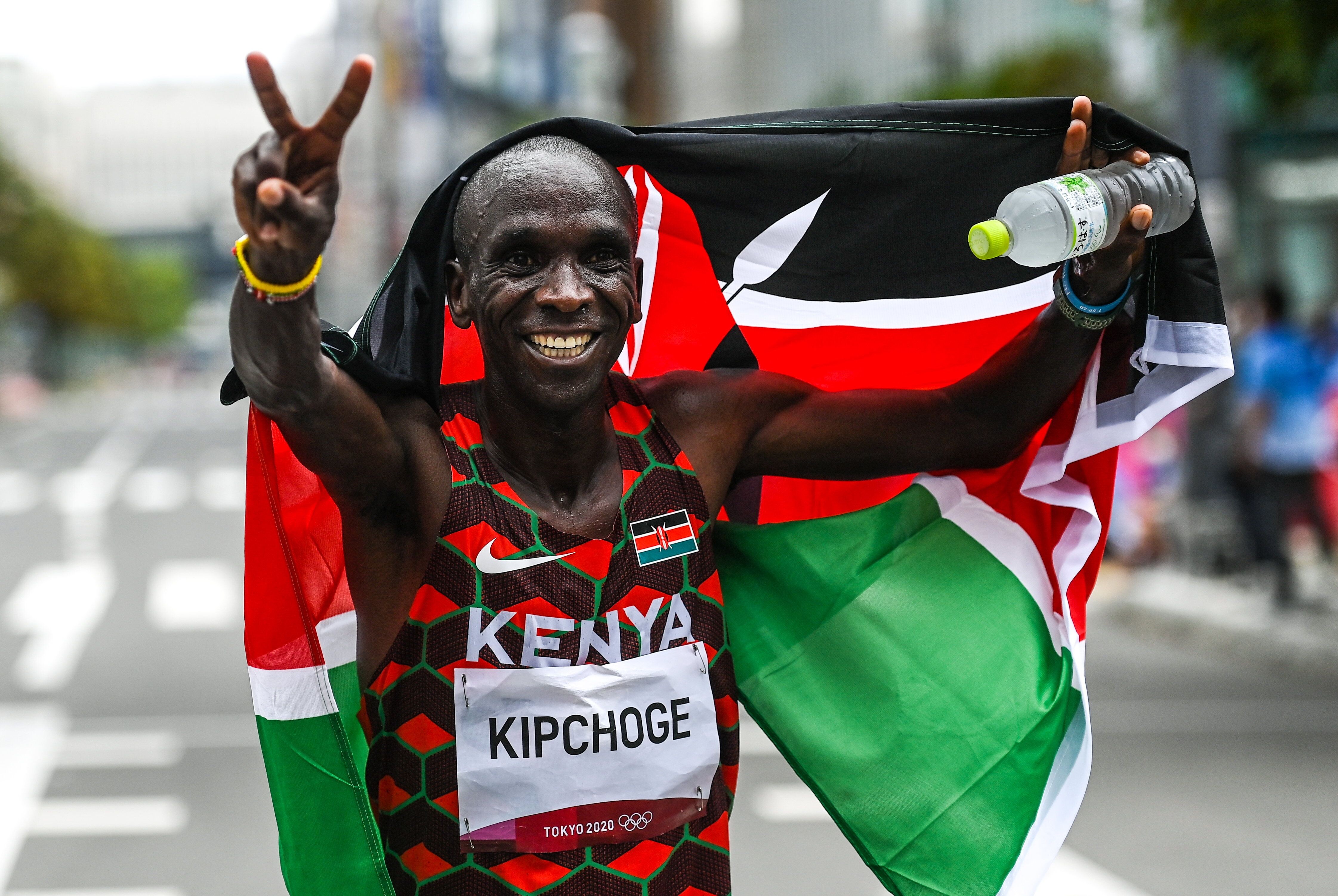
“However, at this juncture in my life, I feel compelled to explore new opportunities and challenges,” a part of the statement from the four-time London Marathon champion read.
Kipchoge has achieved so much on the track and the roads with numerous accolades to his name, including multiple Olympic medals and a world record to his name that was shattered by the late Kelvin Kiptum at last year’s Chicago Marathon.
Kipchoge has long been regarded as one of the greatest marathon runners of all time and his decision has not been taken lightly by his fans who were hoping to see him descend on the start line one more time.
Fans of the sport have taken to social media to express their disappointment at the news, with many expressing their admiration for Kipchoge's accomplishments and wishing him well in his future endeavours.
While Kipchoge's absence will undoubtedly be felt at the Paris 2024 Olympics, the event is expected to showcase a new generation of talented athletes vying for glory on the world stage.
(04/01/2024) Views: 188 ⚡AMPby Pulse Sport
Paris 2024 Olympic Games
For this historic event, the City of Light is thinking big! Visitors will be able to watch events at top sporting venues in Paris and the Paris region, as well as at emblematic monuments in the capital visited by several millions of tourists each year. The promise of exceptional moments to experience in an exceptional setting! A great way to...
more...High School Cross-Country Runner Mistaken for Bigfoot
“It moved so fluently with little arm movement, unlike a human running,” a passing motorcyclist said. “It easily was 10 feet tall.”
Recently, the Bigfoot Field Researchers Organization (BFRO) investigated a sighting of the eponymous cryptid near Ground Mound in Washington state. The sighting, by a group of motorcyclists passing through South Thurston County, involved spotting a figure running on a ridge half a mile ahead of them.

According to the report given to the BFRO, “It was very large and human-shaped. It was one color, tan/brown, moving across very rugged terrain, making a beeline for the tree line.”
The group watched the figure run for 30 seconds before it left their vision.
“It moved so fluently with little arm movement, unlike a human running,” the motorcyclist said. “It easily was 10 feet tall for us to be able to see it from so far away.”
After the story of the biped’s sighting was reported in The Chronicle and shared thousands of times via social media, the paper received an email from a Rochester High School student.
Gunnar Morgan, a cross-country runner, self-identified himself as the creature. “That Sasquatch running was me,” Morgan said in an email to the paper.
In the email, Morgan, who is not 10 feet tall, explained his case of mistaken identity. “My cousin and I are adept cross-country runners and live in the area and run often in that exact wilderness area,” he said. “The reason we appeared larger than usual is because we were running side-by-side, and we run extremely fluidly compared to most people.”
Morgan’s Garmin GPS watch provided data that showed he and his cousin were running along the same ride at the same time the sighting occurred.
“We were running fast and headed for a tree line,” Morgan said. “I can pinpoint exactly where the motorcyclists must’ve spotted us and where we must’ve been … I stand 6-foot-1, and from a distance, we could be mistaken for a larger creature.”
While Washington State tops the nation in what the BFRO deems “credible” bigfoot sightings, with 708, Morgan himself says he has never seen the mythical creature while running in the area but loves the attention it has brought.
“I think this story is all very funny,” Morgan added.
(03/31/2024) Views: 157 ⚡AMPby Runner’s World
Texas 16-Year-Old Breaks Two High School 5K Records
Elizabeth Leachman ran 15:28 for 5,000 meters indoors and 15:25 outdoors—but she’s taking the long view.
Elizabeth Leachman has built an impressive running résumé during her first two years of high school. Last December, the sophomore won the Foot Locker Cross Country Championships in San Diego in 16:50, finishing 14 seconds ahead of the second-place runner.
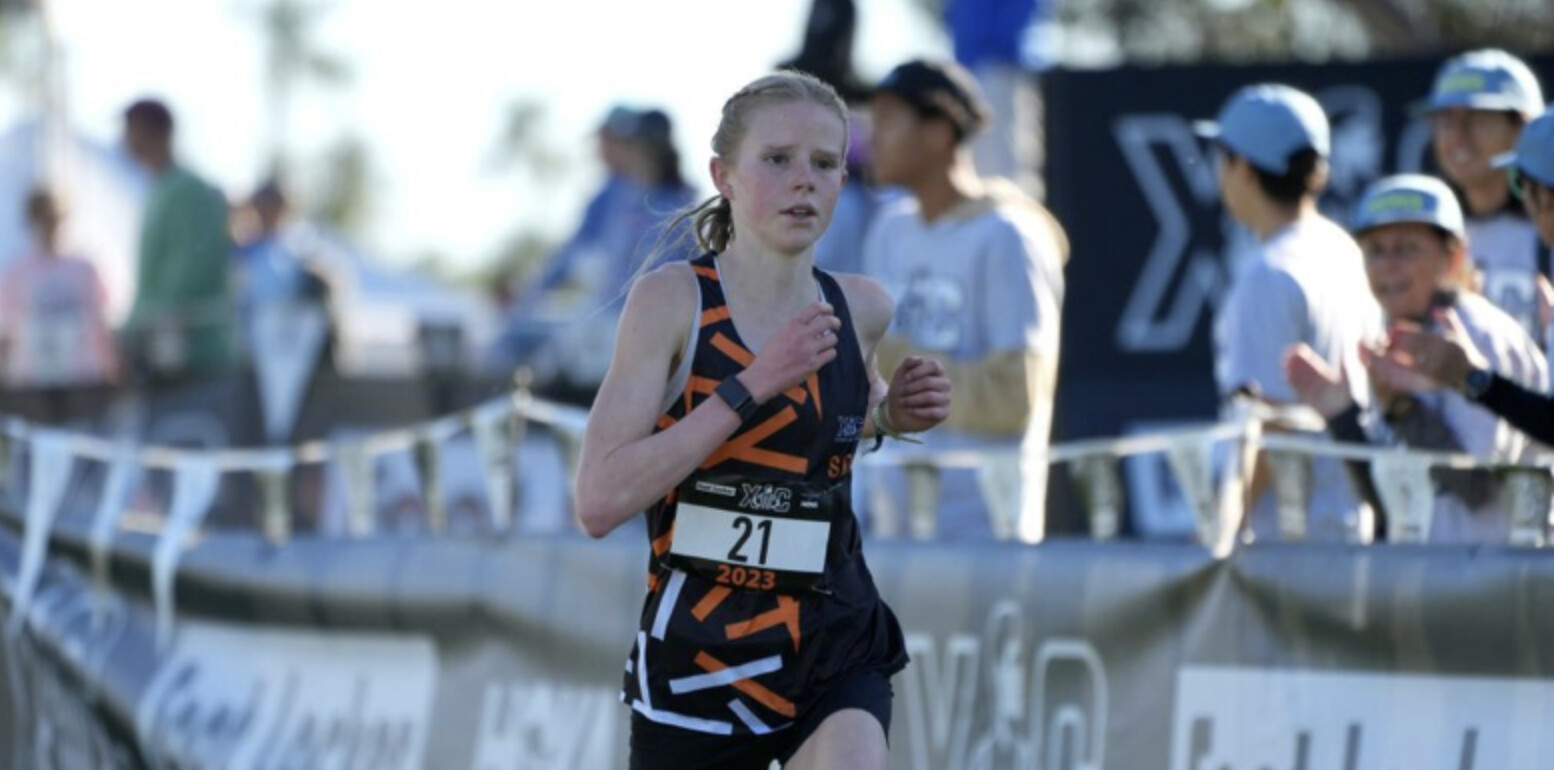
She made headlines on March 10 at the Nike Indoor Nationals meet in New York, when she broke an indoor track record for previously held by Katelyn Tuohy. Leachman, 16, ran 15:28.90 for 5,000 meters, bettering Tuohy’s high school record (15:37.12), set in 2018, by more than 6 seconds. Leachman averaged 4:59 per mile.
Then on March 28, she ran the 5,000 meters at the Texas Relays and took an additional 3 seconds off. Her time, 15:25.27, broke Natalie Cook’s high school record (15:25.93) from 2022.
Her coach, Jenny Breuer, doesn’t care about any of that. She just wants her athlete to run even splits.
Leachman, who goes to Boerne Champion High School, in Boerne, Texas, a suburb of San Antonio, knows her pacing can be a weakness. But she’s working on it.
“That’s definitely been a struggle for me,” she said. “I really like to go out hard and just kind of get after it. But I pay for it at the end, for sure.”
That’s why according to Breuer, the 5,000-meter record wasn’t even the most important race Leachman ran at the Nike indoor meet. Two days earlier, Leachman won the 2-mile in 9:44.16, splitting 5:03 for the first mile and 4:41 for the second.
The 4:41 was (unofficially) a mile PR for her. It also proved to her that she didn’t have to lead. Leachman has had some poor (for her) races after going out too hard, most notably at Nike Cross Nationals last fall, the week before her Foot Locker win, when she rocketed out to a 17-second lead in the early miles before fading to 15th place.
“You can’t keep doing the same thing and expecting a different result, so [for the 2-mile] we really just talked about waiting for the 1200, six laps in, then go,” Breuer said. “She likes to lead. It stresses her out not to lead. I think that gave her a lot of confidence she could race differently and still win.”
Breuer says Leachman is easily the most talented athlete she has had in 28 years of coaching college and high school athletes. But she spends most of her time holding Leachman back.
After she contended with hip bursitis and tendinitis in her hip and hamstring as a freshman, Leachman embarked on a vigorous cross-training regimen, alternating sessions of pool running, the elliptical machine, and the ARC trainer.
Her weekly schedule is similar to that of Parker Valby, the University of Florida star who is a four-time NCAA champion. Leachman’s routine includes only three or four days each week of running, for about 30 miles total. She’ll do a 90-minute session of cross-training on the days she doesn’t run, and on the days she does, she’ll put in an extra 30 minutes of cross-training after the workout.
A typical week, Breuer said, will include a long run, a threshold run or intervals, and a shorter interval workout. The long run is usually 9–11 miles. She tried to have Leachman run by time, but she ended up running too fast and too far, so they went to a mileage limit.
A recent threshold workout was 4 x 1 mile at about 5:10 pace, with a one-minute recovery between miles. The speed day was 4 x 600 meters with a 200-meter float between each. She never does more than a mile for warmup or cooldown, so that workout totaled less than 4 miles.
They’ve also spent a lot of time doing 200s in 36 seconds and 400s in 72. Breuer will sometimes have Leachman do those after the main part of the workout, just to get the feeling of the pace she should not exceed.
“If you have to take the lead, do not go faster than 36 or 72,” Breuer said she instructed Leachman before the 2-mile. “Do not run a 68. Please.”
The coach and the runner sometimes challenge each other. Leachman wants to do more. Breuer wants her to stay healthy and develop over time. “I’m always pulling her back,” Breuer said. “Err on the side of caution.”
For all the unusual ability Leachman has—a powerful aerobic engine, the discipline to work hard at cross-training—there’s one thing that she doesn’t have that most 16-year-olds do: an Instagram account.
That’s been a deliberate choice on the part of Leachman and her parents, who don’t want to see their daughter swept up into the frenzy and pressure that can sometimes descend on young, female runners. (See: Tuohy and Valby.)
“I think if it was fully up to me, I probably would have it,” Leachman said. “But my parents don’t want me to, and I’m okay with it. I haven’t really fought it.”
When she was at Nike Indoor Nationals in New York, it was the first time she had encountered fans who wanted to take pictures with her. It wasn’t too weird, she said. “It was mostly other high school girls and then a couple of younger girls,” she said. “It was sweet. I never expected that.”
The social media moratorium is a way to keep Leachman’s high school experience as typical as possible. She maintains a perfect GPA. She works occasional shifts at a gym after school, staffing the front desk or the babysitting area, where parents drop their kids while they work out. She likes to be with her teammates, helping score points for Boerne Champion, even though she does many of her workouts alone or with the boys’ team during cross-country season.
She follows what’s happening in pro and college running, but not obsessively. She knew Valby ran 14:52 in winning the NCAA indoor title—“insane” Leachman called it—but then she didn’t give it much more thought.
“Because running is important to me, it’s the focus of what I’m doing a lot of the time,” she said. “When I’m away from it, I try not to make my whole life focused around it, so that I can be more balanced in general.”
The adults in Leachman’s life sound a constant drumbeat: You are more than your performances.
“We talk a lot about external expectations, and just because you’re good at running doesn’t mean that it’s everything that defines you,” Breuer said. “That’s what’s really hard, I think, for a 16-year-old to remember sometimes when the spotlight is on. I try to remove that pressure as much as possible and remind her that this is supposed to be fun.”
There is plenty of time for all the extras. Leachman will have to wait to see if her 15:25 gets her entry into the Olympic Trials this summer, but Breuer is playing the long game.
“She has a really good perspective,” Breuer said of Leachman. “Her parents have done a super job. And also, I say, ‘I want you to be an amazing college runner, I want you to be an amazing professional runner, if that’s what you want to do. We don’t want you to peak in high school. That’s not the goal.’”
(03/31/2024) Views: 244 ⚡AMPby Runner’s World
6 Ways to Be a Great Training Partner
These 2024 Olympians know how to help each other while keeping it fun.
Pianist Harold Mabern said that jazz is “competition without animosity.” He might well have been describing the running relationship of Conner Mantz and Clayton Young, who finished first and second, respectively, at the U.S. Olympic Marathon Trials in February.
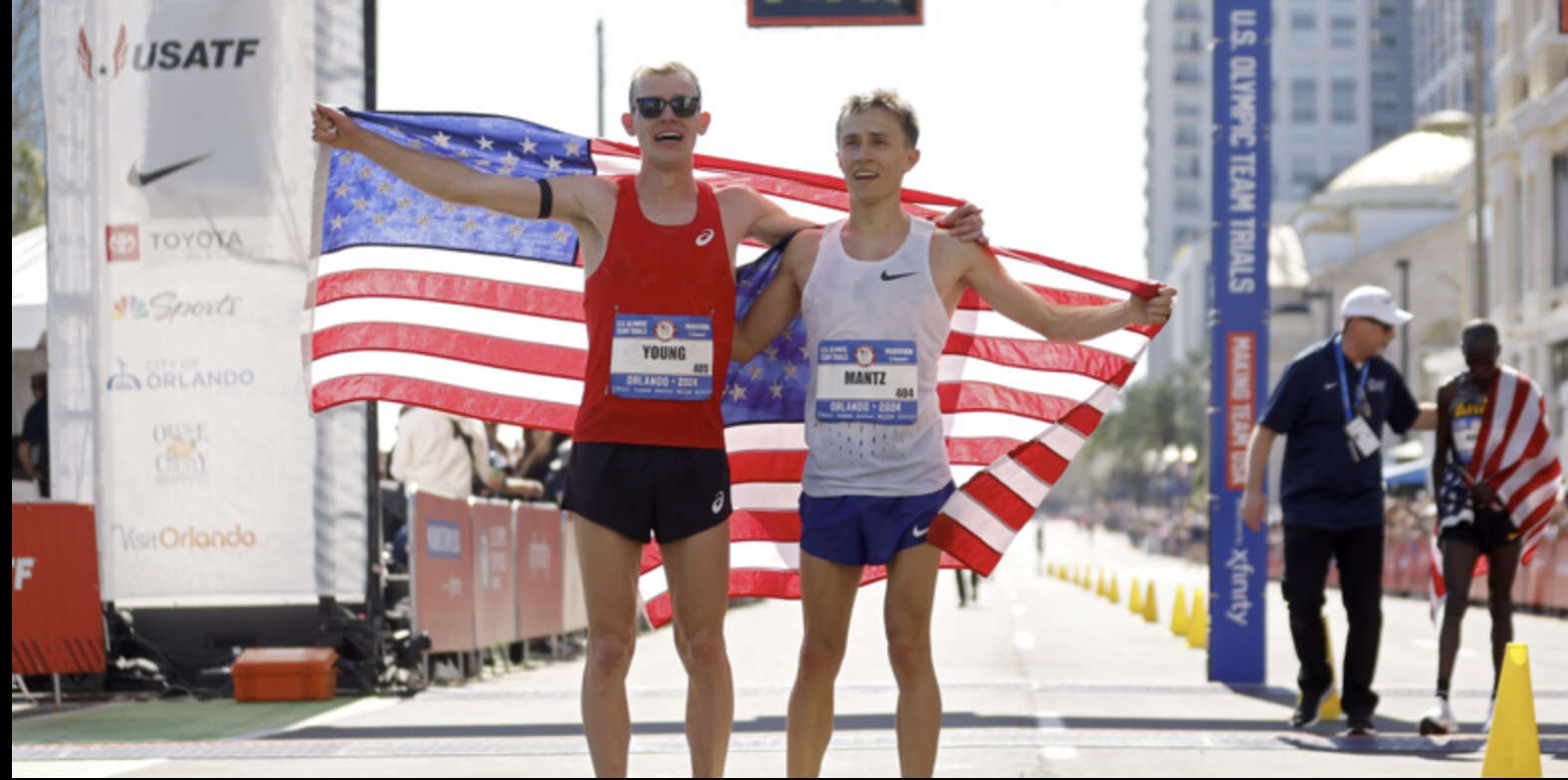
That Mantz and Young are not just two guys who run together, but true training partners, became obvious over the second half of the Trials race. Zach Panning, who wound up finishing sixth, took the lead in the sixth mile and dropped the pace by more than 10 seconds per mile. Mantz and Young tucked in; by the 19th mile, when they were Panning’s only company, they slapped each other’s hands in an apparent celebration of making the team.
When Panning started to slow a few miles later, Mantz and Young pushed on ahead. With two miles to go, Mantz was visibly struggling. Young, looking great by comparison, repeatedly talked to Mantz and stayed with him rather than running the faster pace he looked capable of. In the closing strides, Young eased back as an exhausted Mantz heaved himself over the finish line, one second ahead of his training partner.
Seven years earlier, their first run together was also memorable. Both are members of the Church of Jesus Christ of Latter-Day Saints (LDS), the largest Mormon denomination. Many LDS members go on a one- to two-year mission in their late teens to early 20s. Even for members who are top athletes, the mission is primary; most do little to no training and gain a significant amount of weight.
In 2017, Mantz returned from his mission weighing 150 pounds, compared to his usual 120. A little more than a month later, down to 140, he showed up for his first day of practice with the Brigham Young University team. The group was doing an 8-mile tempo run a little slower than 5:00 per mile. “I held onto the pack for as long as I could,” Mantz recalls. “I almost made it 5 miles until I had to slow down.”
Young, who was in the pack, says, “When Conner stuck with us past halfway, I thought, ‘Oh my gosh, he’s only a month and a half off his mission. Conner is the real deal.’”
They began training together regularly in 2019, the year when Young went pro after winning the NCAA 10,000-meter title. Young remained in Provo to train under BYU coach Ed Eyestone, a two-time Olympic marathoner. While at BYU, where he won two NCAA cross country titles, Mantz mulled going pro. He initially stayed in Provo, but thought that he would soon move and join the Oregon-based Bowerman Track Club or another group. Instead, a few months became several months, then several months became a year. After Mantz ran 2:08:16 at the 2022 Chicago Marathon in his debut, he thought, “Alright, this is working.”
That’s an understatement. Here are six takeaways about being good training partners from Mantz and Young, who will run the Olympic Marathon in Paris on August 10.
Find people with similar goals and outlooks
Since their build-up for the 2023 Chicago Marathon, where both PRed (Mantz 2:07:47, Young 2:08:00), they’ve had near-identical competitive schedules. Mantz and Young typically run together six days a week. They do their main run of the day in the morning. Depending on their schedules, the two, who live a few miles away from each other, sometimes also meet for their shorter afternoon run.
Why don’t they run together seven days a week? Both run their 100-plus-mile weeks while devoting Sundays to their faith. Being an outlier in that regard was one reason that Mantz decided not to join a more formal pro group. “I knew nobody else would be taking Sundays off,” he says, “and that added to the list of reasons to stay here.”
Good training partners help you get more out of yourself
Mantz is a notoriously hard trainer. Young is probably better aware of that than anyone else.
“My best workouts are keeping up with Conner, but Conner’s worst workouts are staying with me,” Young says. “I can’t remember the last time I dropped him in a workout or a long run. That’s one of the beauties about working out with Conner—you really do get pushed to your limit. My workouts with Conner are usually far better than they would be by myself. I just have to make sure I don’t go too hard.”
But pace-pushing Mantz also benefits from having Young to gauge himself by.
“For the most part, I would be way worse on my own,” Mantz says. “I can put a lot of pressure on myself and run too fast early on. I’m all about, ‘Let’s run faster than we did at this point last build-up.’ I see it as I want to get better every day. It’s a little difficult, because I may have gone a little too hard in workouts over the last few years, and so now to even match what I did a year or two ago is quite difficult.”
Compare yourself to you, not your training partners
“There are definitely workouts where Conner is totally trashing me the last interval,” Young says, “and I just have to say, ‘Okay, I did what Coach said and I’m faster in February 2024 than in February 2023. I just really need to compare myself with myself.”
If, like Young, you have a training partner who likes to hammer, do like Young and listen to what your body is saying on that day.
“Typically, Coach will give us some splits he thinks we should start at,” Young says about hard workouts. “But it’s not uncommon for Conner to go faster than those splits, and so I have to do these mental gymnastics of, ‘Do I go with Conner or do I do what Coach said?’ Conner and I are obviously really competitive, and you get a lot of confidence training with one of the best athletes in the marathon, so should I stick with what feels good and with what Coach said, or should I try to close this gap and run with Conner? Sometimes I do, sometimes I don’t.”
Share both the joys and the struggles
As pros, Young and Mantz are unlikely to come up with reasons to blow off runs. But we all need an occasional pick-me-up.
“If I’m not feeling good during a workout, I turn to Clayton and say, ‘You’re leading the next one,’” Mantz says. “And he’s always like, ‘Alright, I’ll help out,’ even if he’s also having a bad day.”
For many of us, meeting our running partners doesn’t just help us get out the door. Doing so is often a dependable source of pleasure. That’s as true for Olympians as it for the regular runners. “I just get excited sometimes thinking about the camaraderie and that I get to run with Clayton today,” Mantz says.
Acknowledge irksome behaviors but keep them in perspective
Some days with your training partners won’t be exciting or fun. You might even find yourself wishing you were running alone. But as with a romantic partner, it’s the overall quality of the relationship that matters.
“There are times I’m like, ‘Conner, why did you go that fast? I thought Coach said to do this,’” Young says. “I can get frustrated. But at the end of the day, it’s making me faster. As long as I recognize that balance and look at the big picture, having Conner with me as a training partner far outweighs the little frustrations that I have every now and then.”
Use your time together to improve your lives
Like a lot of us, Young and Mantz spend a good amount of their running time talking about running—how their most recent workout went, what races they have coming up, how the BYU team and other top runners are doing, what the weather will be like on their next hard day. But, says Young, “we’re kind of unique professional runners in that we have a lot of stuff going on outside of running. So we’ll also talk about family, real estate, investments, taxes.”
Mantz, who at age 27 is three years younger than Young, has used a lot of their run time to discuss marriage. “That’s the biggest benefit of having Clayton as a training partner—asking questions and getting advice on things like adjusting to having somebody in your life at a new level,” he says.
Young, who had knee surgery less than a year before making the Olympic team, says, “We’ve gone through some tough stuff. We’ve been able to lean on each other a lot. Our runs together are often like a therapy session.”
(03/31/2024) Views: 143 ⚡AMPby Runner’s World
Early Morning Race Start? Here’s How to Reset Your Sleep Schedule
Training plans include time and distance on your feet, but rarely do they block out time in bed—maybe it’s time they do.
At first glance, the start times of most marathons—around 9 a.m. or 10 a.m.—seem easy enough. But when you factor in travel and wait time, runners often have to leave their home or hotel rooms before dawn to get to the start. That leaves typical sleep schedules in the dust.

“I had four races last year and all of them required getting up as early as 3:30 a.m.,” Joe English, elite-level master’s multi-sport athlete and former national coach for the Leukemia and Lymphoma Society’s Team-In-Training program, tells Runner’s World. Especially for the bigger races, where there are a lot of logistics involved, it’s necessary to get up and race super early.
So if you need to reset your sleep schedule before a race to accommodate those pre-dawn times, how do you do it and how long will it take?
Why You Should Reset Your Sleep Schedule
“Sleep used to take a back seat to exercise and nutrition, but in the past decade, we’re starting to realize that it’s really a tripod when it comes to athletic success,” James Maas, Ph.D., author of Sleep to Win: Secrets to Unlocking Your Athletic Excellence in Every Sport tells Runner’s World. “I have personally seen runners who adjusted their sleep and nothing else and have greatly improved their running as a result.”
Extensive research confirms this observation. A systematic review published in Sports Medicine in 2023 about sleep and athletic performance, found that while elite athletes feel rested with eight hours of sleep every night, they often sleep less than seven. Long travel and resting in unfamiliar environments often disrupted their sleep, as did the same things that keep many of us awake: social demands, work and family commitments, and lifestyle choices like diet.
The researchers also found, though, that extending sleep by about 45 minutes to two hours, rather than napping, improved both sleep quality and performance, as shown by metrics like strength and power.
To gain the same benefits, here’s how long it takes to reset your sleep schedule in order to wake up early for a race and how to make it happen so you’re ready for a solid performance.
How to Reset Your Sleep Schedule
If there is a race in your schedule that involves travel crossing time zones, both experts say it takes up to four weeks to adjust your sleep schedule, so start planning for that new wake-up time well in advance.
Here’s what you should do to adjust:
1. Set an Alarm—for Bedtime
You may have the best intentions to go to bed at a reasonable hour, but then OME (One More Episode) Syndrome sets in. Set an alarm to tell you it’s time to wind down.
Consider taking 30 minutes to an hour to move from your couch to your bed, giving yourself enough time to take care of that process. “I have an alarm that goes off at 9:15 every night and that’s when I know to start my wind-down time no matter what,” Ryan Hurley, a sleep performance coach and former ultramarathoner and Ironman racer tells Runner’s World.
2. Create a Consistent Routine
Part of good sleep hygiene—creating the ideal environment for getting a good night’s rest—is consistency. “If your focus is on having a regular sleep cycle all the time, an early race is going to have less of an impact, because you’ll be better rested [overall] and therefore more capable of dealing with that bump in the road,” says English. To help keep him consistent, English sets his lights to automatically dim at the same time in the evening to cue his bedtime.
3. Write Tomorrow’s To-Do List
Writing down your to-do list for the next day before you go to bed can help keep nighttime ruminating at bay. “By writing it down, you’re making space for it but you’re not bringing it into the bedroom with you to worry about,” says Hurley.
4. Act as Your Own Sleep Detective
Tracking your sleep can change your rest game in ways you don’t even yet realize, says Hurley. “I always thought that I was getting enough sleep because I was getting seven hours, and the common recommendation is seven to nine hours,” he says. “But it wasn’t until I started tracking my sleep that I realized I wasn’t getting enough REM sleep.”
“I’ve found that people aren’t very good at judging how much sleep they got,” Maas adds.
To assess your rest, ask yourself these questions: Do you tend to feel tired when you’re in a warm room, a dull meeting, have a heavy meal, or after a couple drinks? Do you typically fall asleep within five minutes of hitting your pillow? Do you sleep extra hours on the weekend? Do you need an alarm to wake up? If yes to any of these, you probably need more rest, he says.
5. Get Grateful
Having an “attitude of gratitude” sounds like a nice catch-all phrase we hear a lot these days, but it can actually help turn your mood around. “Every night, I review the good things that happened to me that day, and it helps puts me into a good mindset to fall asleep,” says Hurley.
6. Replicate Start Times
Replicating race conditions—which includes time of day—can help your body adjust by the time you hit the start. “You should do at least some portion of your training at the time of day of your race,” says English. “It helps acclimate you to running under the conditions in which you’ll be racing.”
How to Schedule Your Sleep the Night Before a Race
If adjusting your sleep schedule for four weeks before a race is unrealistic, English emphasizes that it’s likely, with the help of adrenaline, you’ll be able to push through a race on less sleep than usual. It’s more important to be well-rested the two weeks leading up to the race. Then, if you can, squeeze in a nap if you know you won’t get a full night’s rest before the race.
If you don’t sleep well the night before, don’t let it derail you. Instead focus on the training you’ve done to remind you that you’re ready for the race, English suggests.
To make sure you get the best sleep possible in the days leading up to the start to support your performance, here’s what to do:
Stay Awake Until Bedtime
If you have a 3 a.m. wake-up call, simple math would deduce that you should go to bed much earlier that night. Not so, says English. “The number one thing runners would tell me the night before the big race is ‘I’m going to go to bed at 4 p.m.,’ and I tell them that is a recipe for a disaster, because you’re going to confuse your body into thinking you’re taking a nap, and will wake up after two to three hours,” he says. “My advice instead is to go to bed at a reasonable hour, but not more than an hour or two earlier than normal.”
Go With the Flow
Whether it’s a 24-hour relay, a time zone change, or simply a super-early start time that you couldn’t prepare for, there will be some races that basically happen in your middle of the night. “I remember once I was at the Disney World Marathon which has a really early start, and I was on the bus at 3 a.m., which was midnight my time, and here I was just about to start running,” recalls English. Times like that, there’s only so much you can do, he says. “Just do what you can, and know that your training will carry you through.”
Make Time for a Well-Timed Nap
When you can’t get a full night’s rest, count on the power of a short-and-sweet nap. “Napping can increase your alertness, reaction time, and coordination,” says Maas, who coined the term “power nap.” The sweet spot for nap timing is less than 30 minutes or more than 90 minutes, according to Maas. “Otherwise, you’ll be groggy,” he says
Don’t Sweat the Alarm
The “will I wake up for the race?” panic is so ubiquitous that Jerry Seinfeld was put in charge of waking up a New York City Marathon runner who famously slept through his Olympic race. But let’s separate fact from fiction: According to English, this scenario likely won’t happen. “I’ve probably helped 5,000 runners reach the starting line of a race and I don’t recall anyone oversleeping,” he says. “If anything, it’s the opposite—they’re up at 2 a.m. because of the adrenaline.”
(03/30/2024) Views: 110 ⚡AMP
by Runner’s World
Why Jasmin Paris is about to become a household name
British ultrarunner Jasmin Paris made history on Thursday when she became the first woman runner to finish the Barkley Marathons, charging to the finish with only 99 seconds to spare before the 60-hour cutoff. But this is not the first time Paris, who runs free of sponsorships and is an environmental advocate, has achieved something remarkable in the trail running world. Here’s what we know about the 40-year-old ultra-trail champion.
Paris is a veterinarian and research scientist from Midlothian, Scotland. In 2019, she jumped to world attention on the ultra scene when she smashed the overall (men’s) course record–by 12 hours–at Britain’s 268-mile Montane Spine Race, finishing in 83 hours, 12 minutes, 23 seconds–while also pumping breastmilk for her infant daughter.
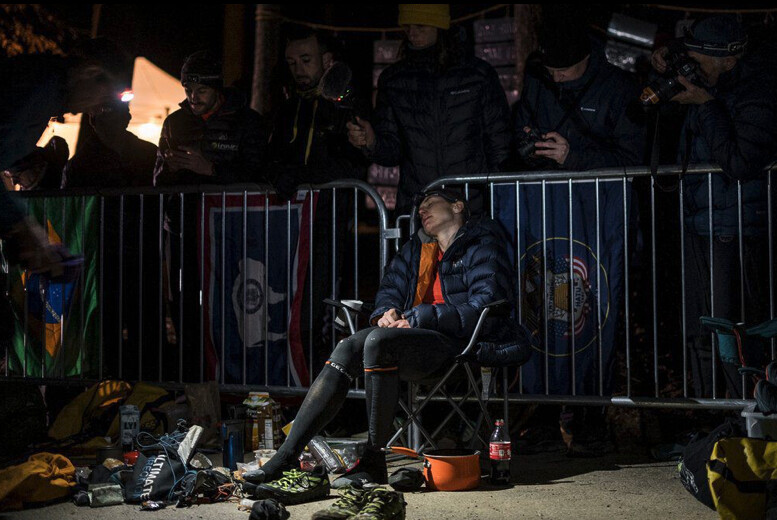

“When it was really difficult I made myself think about my daughter and imagined the different things she does—that kind of kept me distracted and entertained,” she told British Vogue after her Spine Race success.“Some of the time you don’t really think about anything. It’s mindful, you’re just putting one foot in front of the other.”
The Barkley Marathons is five loops of a 20+ mile course in Frozen Head State Park, near Wartburg, Tenn. (distances vary; the race is thought to be well over 100 miles) featuring thousands of metres of elevation gain, with a time limit of 60 hours. It was first run in 1986, and was inspired by the prison escape of James Earl Ray, who was serving time at Brushy Mountain penitentiary for the murder of Martin Luther King, Jr. (He was captured soon after.) Gary Cantrell (a.k.a. Lazarus Lake, or “Laz” to his friends) dreamed up a 100-miler in the vicinity of the prison, which is now abandoned and is a feature of the course. GPS watches are not allowed; each runner is issued a cheap watch set to “Barkley time,” i.e., the 60-hour limit. Runners must collect pages corresponding to their bib number from 13 books hidden on the course (they receive a new bib for each loop); missing pages mean disqualification. There is water available on the course, but no aid stations. Runners may only receive aid from their crew between loops, in camp, where they are on the clock.
Paris was always passionate about the outdoors, but only took up running in university. She began winning local and national fell-running and ultrarunning events, including the Scottish Hill Running Championships, British Fell Running Championships and then the 2016 Extreme Skyrunner World Series. Paris ran a hill race 10 days before giving birth to her daughter.
While Paris says it has been challenging to juggle training as a parent to a young child, she adds that it’s important to maintain a balanced life.”It doesn’t make you a worse parent if you have something else that is just yours; in fact I think that it’s probably inspirational to your child, she told British Vogue.”I hope my daughter will be inspired when she grows up to believe that she can do anything.”
Barkley creator Laz Lake asked Paris to run the race after her victory at the Spine Race—he thought Paris might be the only woman who could possibly finish. In 2o22, she completed three loops (which is dubbed a “fun run”); in 2023, she was eliminated after four loops, falling short of the 48-hour cutoff time to begin the fifth loop. Paris was only the second woman ever to attempt a fourth loop; the first was Sue Johnston of Vermont, in 2001.
Fellow British runner and two-time Barkley Marathons competitor, Damian Hall, made it to loop five for the second year in a row, but was unable to complete the race. He commented on Paris’s remarkable finish to his sponsor, Inov8: “It was still an amazing experience, and incredible to see Jasmin finish and make history. That wiped away most of my personal disappointment. It was the greatest sporting achievement I’ve seen in the flesh.”
“The final minutes were so intense, after all that effort it came down to a sprint uphill, with every fiber of my body screaming at me to stop,” Paris told The New York Times post-race.“I didn’t even know if I’d made it when I touched the gate. I just gave it everything to get there and then collapsed, gasping for air.”
Renowned photographer Howie Stern is a regular at the Barkley Marathons, and captured Jasmin throughout the race.”Thank you Jasmin for putting your heart and soul into the dark world that takes place in a little park in Tennessee, which has captivated and inspired women and men the world over,” he said on Instagram.
(03/30/2024) Views: 147 ⚡AMPby Running Magazine
DJ Diplo creates run club with a cool twist
It seems like everyone and their cousin is part of a different run club in 2024, and it’s hard for one club to distinguish itself from another besides pace, meeting time and location. Grammy award-winning DJ and producer Diplo (Thomas Pentz) found a way to make his new run club a little different, combining a few of his favourite interests—running, music and travel.
The club, which is titled, Diplo’s Run Club, involves a large 5K group run, followed by a music festival that will apparently “ignite your senses.” Instead of just going to a bar or club with your running friends after a run, Diplo says he’s bringing the concert to the run in various U.S. cities. The DJ claims his run club will be more than just an event; it’ll be a celebration, with DJs, live bands, and of course, drinks.

In the past year, the 45-year-old has fallen in love with distance running, completing the Miami Half Marathon and L.A. Marathon, where he celebrated beating Oprah’s personal best, finishing in three hours and 55 minutes. It later came out that he ran the race while on the illicit psychedelic drug, LSD. Diplo is now devoting more time and attention to physical activity with his new run club venture, which will debut this September.
“A 5K may be intimidating to some, but Diplo’s Run Club is for everyone and meant to be a good time for all—both seasoned runners or anyone just starting their running journey,” Diplo posted on Instagram.
His run club will host its inaugural event in San Francisco on Sept. 8, followed by a second event in Seattle on Sept. 14. At both events, a 5K run will be followed by “finish line sets” by Diplo and his friends. Unlike most run clubs, Diplo’s event will not be free. Tickets for Diplo’s Run Club are priced at $69 (around CAD $93), which is a good deal when most of his DJ sets run for double, if not triple the price.
There are no Canadian cities on the schedule yet, but we are sure other influencers or artists will follow suit in monetizing the touring run club idea.
(03/30/2024) Views: 121 ⚡AMPby Running Magazine
How Do Olympic Athletes Sleep?
Not as soundly as you’d expect, actually
We all know that, in theory, we’re supposed to sleep a lot. After all, it boosts performance, protects against injury, accelerates recovery, improves free-throw shooting, and all sorts of other wonderful things. But sometimes there’s a gap between theory and practice. Are champion athletes also champion sleepers? Or is good sleep in the “nice to have” rather than “need to have” category for ascending the heights of athletic prowess?

A new study in the International Journal of Sports Physiology and Performance, from sports scientists at the U.S. Olympic and Paralympic Committee led by Travis Anderson, dives into the real-world sleep habits of more than 1,600 Olympic and Paralympic athletes. In the lead-up to the Tokyo Games in 2021, they filled out a questionnaire called the Pittsburgh Sleep Quality Index. The results offer insights into the typical sleep patterns for male versus female athletes, summer versus winter Olympians, and team versus individual sports. They also suggest that a surprising number of athletes aren’t sleeping as much or as well as they’d like.
In this age of ubiquitous self-tracking, you may wonder why they’re using a questionnaire rather than some form of objective sleep tracking. The simple answer is logistics: proper sleep studies are complicated and invasive. Even wearable tech devices would have been difficult to administer to 1,600 athletes scattered around the country, and their accuracy is questionable anyway. Moreover, imposing sleep tracking on athletes is a delicate proposition, and there’s a risk it can create anxiety and interfere with the sleep it’s supposed to measure. A few years ago, Charles Samuels, the sleep doctor who works with Canada’s Olympic teams, told me that the best way to assess how someone is sleeping is to ask them, “How are you sleeping?”
The biggest result is that roughly 40 percent of the athletes were rated as having poor sleep based on their PSQI scores. The scores take into account factors like how long you typically sleep, how long it takes you to drift off, how often your sleep is disturbed, whether you take sleep medications, and so on. The results are in line with a recent study of Dutch Olympic athletes, which found that 41 percent were poor sleepers. Similarly, an Australian study in 2021 pegged 52 percent of Olympians as poor sleepers.
One of the goals of the study was to provide normative values—that is, to offer some context on what’s normal for hard-training athletes, as opposed to for the general population on whom the PSQI was first tested. The PSQI is scored out of 21, with higher scores indicating a greater number or greater severity of sleep problems. You’re classified as a poor sleeper if you score 5 or more. The average among U.S. Olympics was 4.3; a quarter scored above 6; 10 percent scored above 8; and 5 percent scored above 10. The highest single value was 16. (The lowest was zero, and boy do I envy those people!)
There are plenty of reasons athletes might have trouble sleeping. If you have a 6:00 A.M. training session, you’re going to have trouble getting all the sleep you might like. If you’re traveling frequently across time zones to get to races or training camps, that will cost you. If your legs are aching from hard training, or your mind is racing before or after a competition, you won’t sleep well. The survey results don’t tell us exactly what’s happening, but they suggest that someone who scores 5 or 6 on the PSQI, while officially classified as a “poor sleeper,” is pretty typical for a serious athlete.
The main difference between this study and previous ones is that it has way more athletes, which makes it possible to slice and dice the data into subcategories. Most notably, despite typically going to bed a few minutes earlier, women had worse sleep quality: an average of 4.7 on the PSQI compared to 3.9 for men. That’s a pattern that has shown up in some but not all previous studies. Among the specific differences were that women were less likely to report falling asleep right away after going to bed, and more likely to report using sleep medications. One theory is that the variation in sex hormones across the menstrual cycle might interfere with sleep, but this study doesn’t tell us anything about the mechanisms, and the authors point out that it’s not really clear whether the small differences observed have any practical relevance.
The only difference between summer and winter athletes was that the winter athletes went to bed later and got up later, perhaps because there’s less light in the morning during the winter. There were no differences between Olympic and Paralympic athletes, even though factors like disrupted circadian rhythms in visually impaired athletes might lead us to expect more problems for the Paralympians. Team-sport athletes got up earlier and had poorer sleep than individual-sport athletes, but that pattern clashes with some previous studies. Overall, I’d guess that all these sub-patterns are confounded by the huge variety of sports in the sample. Runners are probably like runners, regardless of sex or Paralympic classification; they’re not like platform divers.
One way of interpreting all this data is that sleep is a great untapped frontier. If 40 percent of athletes are poor sleepers, just imagine your edge if you can master it. The other interpretation is that sleep can’t be that important, if all these Olympians can’t get it right. I’ll take a middle position, as is my wont. I think sleep is important for performance (not to mention for not feeling like crap all day). But I don’t think it’s one of those quantities that rewards relentless self-optimization. “If you get what you need,” Charles Samuels told me, “that’s as good as it gets.” Take your sleep habits seriously, but remember that if you still have some problems, you’re in very good—Olympic-level, to be precise—company.
(03/30/2024) Views: 143 ⚡AMPby Outside Online
Running 300,000 Vertical Feet In a Year: Noble Goal or a Fool’s Errand?
Arbitrary goals are nonsensical. They also can be the source of great joy.In the pursuit of any goal, we all face a moment of questioning ourselves, sometimes out loud.The first week of last December, I had that moment, a question as I power-hiked up an icy trail, listening to my own labored breath:The answer, of course, was: No, it was not necessary. I had a cold, or enough remnants of a cold that I should have been at home resting instead of semi-vigorously exercising outside.
But I had a goal. Or, rather, I had committed to a goal, with a deadline: 300,000 feet of uphill human-powered movement, in the year 2023. Before I started hiking uphill that day, I had logged 289,476 feet of climbing via running, hiking, ski touring, and cycling. I had 10,524 feet left to climb, and 24 more days to do it. And I wanted to get done early so I could stop worrying about it. So I kept tromping uphill.
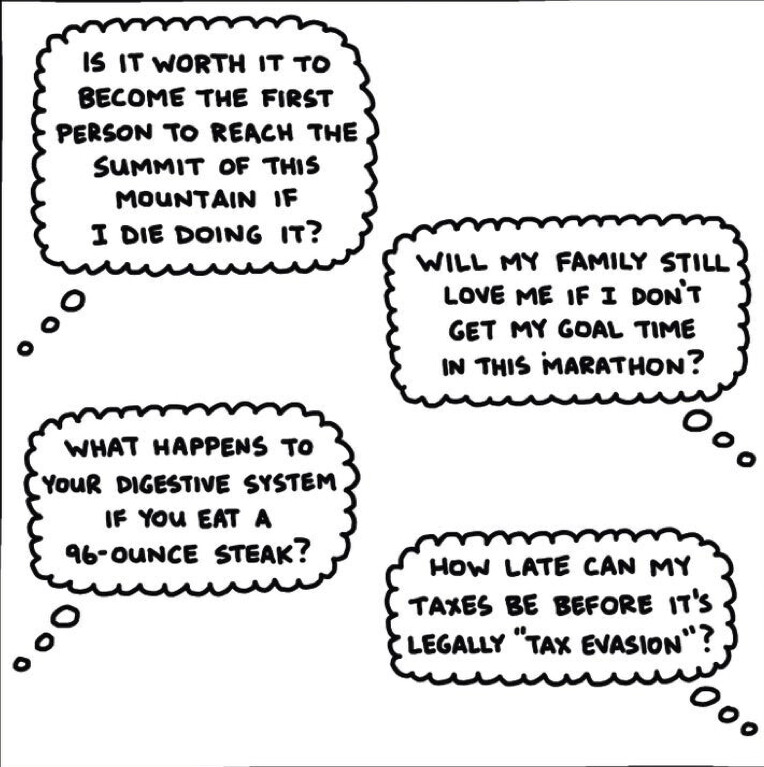
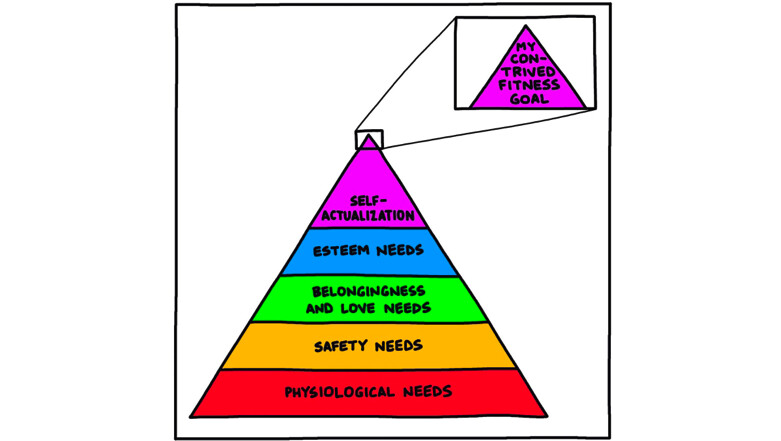
Even though I’d have a hard time convincing anyone it was “necessary,” in the sense of Maslow’s Hierarchy of Needs.Every year, human beings such as myself and yourself take part in an ancient ritual going back at least dozens of years: We decide how we are going to become a different person than we were the year before.
Sometimes we become completely different people, finally going to therapy, or deleting all of our social media accounts, or deciding to adopt the extensive and possibly unsustainable morning routine of a person who is an influencer on LinkedIn. Sometimes we just become a slightly different person, by committing to being on time, drinking more water, or meditating for one minute every day.
This probably sounds familiar. You may know it as a “new year’s resolution,” which is a common manifestation of this sort of idea, and also helpful in selling gym memberships. New year’s resolutions work for some people, but I have never had much success with them. Usually I think more along the lines of “what can I do that would make this year interesting/different from previous years?” Which I think is a good place to start, as opposed to “What’s wrong with me that I can attempt to fix or improve this year?” (If you’re asking yourself that same question, let me just say that you’re probably doing great, and at least a few people probably love you just the way you are. But yeah, we could all drink more water and eat more vegetables.)A few years back, a friend of mine mentioned he was going to try to log half a million vertical feet biking and hiking, and I don’t remember if he ended up getting it done, but I think he was probably inspired by a guy named Greg Hill who climbed and skied two million vertical feet in a year in 2010, and Greg Hill was probably inspired by himself, Greg Hill, skiing one million vertical feet in a year in 2005. I’m no Greg Hill. But what about 200,000 feet of ascent in a year? Certainly more doable by a middle-aged dad with a day job? That’s a little under 4,000 feet per week.
So I decided on that. I did a few backcountry ski laps at our local hill, just under 2,000 feet per lap, and hiked/ran up steep trails a couple times a week, trying to log a few hundred feet here or there. If Jay was awake and we had time between naps, I’d put him in the baby carrier backpack and chug up a trail for a few minutes or an hour, the dad version of a weighted training vest. I signed up for a steep 50K trail race, the Tiger Claw, which would get me almost 9,000 feet of climbing in one day, a big chunk.
Then in mid-May, my young friend Torrey, who has not been to my house recently to see my daily life trying to be a present and helpful dad, husband, self-employed artist and writer, said, “200,000 feet? I think you could do 300,000 easy.”
I thanked him for the encouragement by replying, “Fuck you,” and then we argued for a few minutes about who would buy dinner.
And then of course I started doing the math, which really amounted to a big question, How do I want to live my life this year, which is really a series of smaller questions:We’re lucky, as human beings, to have the time and resources to come up with ideas we refer to as “dreams,” and then spend time and resources pursuing those.
Some people put a lot of time and resources into one dream, like thru-hiking the Pacific Crest Trail, or climbing a big mountain halfway across the world, or completing an Ironman triathlon.Since I am a coward, I often tend to shy away from big goals with a high chance of failure, and instead choose to pursue goals with longer timelines, in order to have some flexibility. A bad week of weather can derail a big mountain summit attempt, and an injury can derail a plan to qualify for the Boston Marathon (I guess so could gastrointestinal distress on race day), but an annual goal of a bunch of vertical feet can withstand some bad weather or minor injuries during the year. Or, in my case, catching every communicable disease Jay brought home from daycare in his first six months of attendance, which included something like six colds, and norovirus or something similarly explosive and miserable.
Even with a week off here and there, I kept chugging along. I started a Strava club called 100 Grand, because I thought other people might think it was fun to try to log 100,000 feet of climbing, or 200,000 feet, or 500,000 feet, or whatever, depending on where they lived and how much time they had to devote to it. I know not everyone lives in a mountainous area, or even a hilly place, but I also knew about this group of people in Iowa and Illinois who race to see who can log 25,000 feet of vert the fastest (and in the smallest amount of horizontal distance) every December. I mean, look at this spreadsheet:Almost 2,000 people signed up for the 100 Grand Strava club, despite it launching in the middle of the year, and I’m not sure how much it motivated people, but I’m going to do it again in 2024. As soon as I finish mailing out stickers to everyone who clocked 100K or more in 2023.
As I rolled over 200,000 feet in September, and then 250,000 feet (in early October), I started to reflect on how the 300,000-foot number had changed my year of running. I have never been one to pay attention to my per-mile pace, but it went completely out the window this year, since a typical run for me looked like this:Mt. Sentinel is essentially a straight line two miles from my house and roughly 2000 vertical feet higher than my front door*, so I defaulted to it often this year. I stood on the summit 47 times, often enough that it started to feel quite ridiculous, but also a sort of home. Which is probably how my dad feels about certain holes on his home golf course, or how my brother feels about his favorite fishing spots.Every time I got home from a run, I’d check my yearly total on Strava as it ticked upward—except on the rare days I did a flat run, when I was short on time or had to run Jay to or from day care in the jogging stroller.
Eventually, I had a little less than 2,000 feet to go. Unless something crazy happened, I’d just need to get to the summit of Mt. Sentinel one more time and I could stop obsessing about it. My friend Forest had offered to go with me, but also said he understood if I wanted to go up alone. I decided to keep this one to myself, microspikes on my shoes for the icy sections, trekking poles as insurance to keep myself upright.
The last climb up the steep trail on the south ridge seemed like it was taking forever, and I watched several paragliders take off from near the top, a surprise sunny December day. I jogged through the snowy forest between the south and north summits, and then started the steep hike up the final 100 feet to the top. A figure in an orange jacket was starting down from the summit, headed my way.
The person stopped on the trail when they saw me, and without being able to see quite that far, I knew it was Forest. He started clapping, and then went back to the summit with me. He asked if I wanted to have the top to myself, to process it a little bit, and I said Nah, it’s just the last few feet of my dumb goal for the year. Which was true.
The closer I got to finishing, the more ridiculous it felt, and as much as I’d like to have had some epiphany about life, I know sometimes you just need a new motivation to get out the door and experience something, even if you end up on the same mountaintop *checks notes* 47 times. But as ridiculous as it was, I still followed through with it, which has some sort of meaning, maybe.
You don’t need to go far these days to find inspirational quotes about pursuing your goals, and I think everyone is looking for something different. The older I get, the more I think about a line from the late, great, philosopher and restaurateur Kenny Shopsin, in the 2004 documentary I Like Killing Flies:
(03/30/2024) Views: 176 ⚡AMPby Outside Online
What you should know before running the Crescent City Classic
New Orleans is just one day away from the start of the 46th Crescent City Classic, and the annual running event is expecting 15,000 participants on this year's start line.
The Classic attracts people of all ages – and fitness levels, with organizers saying more than 60 percent of participants choose to walk rather than run.
World-renowned sports performance specialists – and WWL health and fitness experts – Mackie Shilstone and son, Spencer, say "getting the body right" before pounding the pavement is paramount for success at the Crescent City Classic – or any run for that matter.
Here are a few pre-race tips to help runners go the extra mile:
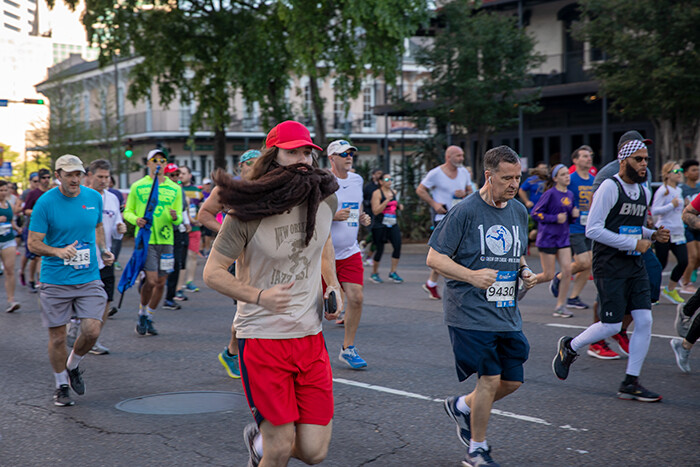
Meet a runner's best friend – shoes
According to Mackie, the single most important thing a runner can do is purchase the right running shoes. Whether you supinate, pronate or stand somewhere in the middle (neutral), the selection of proper footwear can make all the difference in running success and safety.
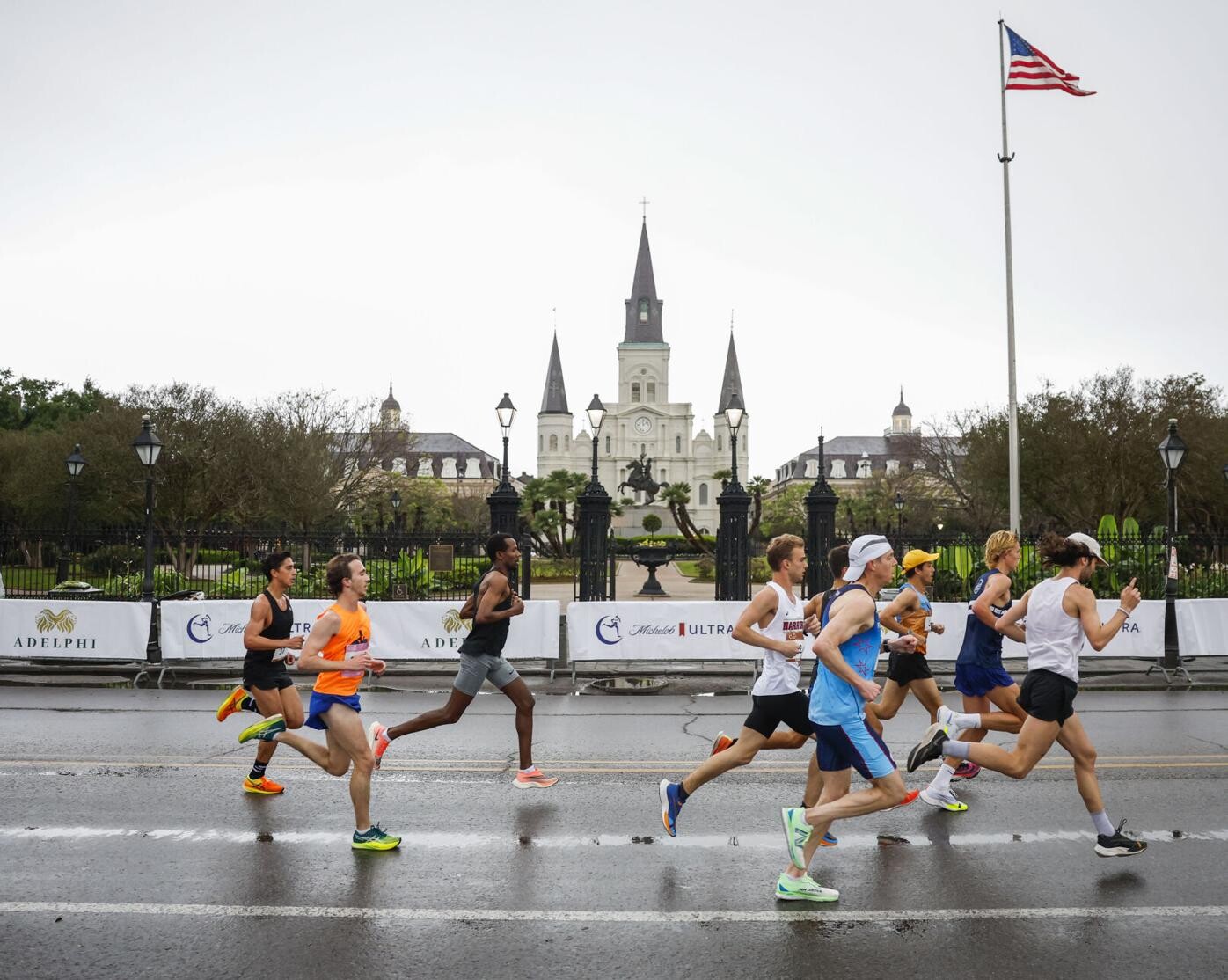
Mackie says, 70 percent of runners make first impact to the ground with their heel. So heavier runners will require a heavier heel counter because when the foot strikes the ground, the body weight is magnified by 5-7 times – five times in a moderately fit person, and seven times in an out-of-shape person.
"If you don't have the right running shoes where you have a thumbnail difference between your big toe and the end of the shoe, if you don't have the right lateral mechanics," explains Mackie. "Many people will go out and try and do this and have not prepared. So preparation in getting the right running shoe, that's for you."
Podiatrist-prescribed custom orthotics can also provide a substantial – and now affordable – solution.
And he says never, ever wait until race day to break in a new pair of kicks.
Roberts, who also leads a run club for the Louisiana Running + Walking Company, once again supports Mackie's suggestion on breaking in new shoes.
"I always recommend at least getting a few runs in even the week prior if it's a new pair of shoes," said Roberts. "But don't pull them right out of the box on the day of, especially if it's a completely different change [of shoe]. So, if you're going into it with a new speed shoe thinking you want to try something faster...don't recommend it.
Fueling the body is high-performance
Sodium is important because exercise lasting 60 minutes or longer is going to require the replacement of electrolytes. Anything longer than 90 minutes will require the intake of carbohydrates.
"Fueling the body is high-performance," said Mackie. "Mis-fueling the body is tantamount to disaster."
Mackie says most sports drinks do not provide enough sodium, which is needed to effectively use the glycogen in your liver and muscles and circulatory system.
"I'm not telling anyone on a hypertensive-type diet (less than 1,500mg per day) to go out there and increase your sodium," said Mackie. "[But] the requirement for sodium sits up there around 2200 milligrams."
Mackie also warns against the intake of fiber before a long run – or race – like the Crescent City Classic.
"You don't want any fiber in the diet," explained Mackie. "You don't want to have to go in and unfortunately have to use the toilet because your nature calls."
Truth about carb-loading for the Crescent City Classic
Mackie claims carb-loading for events such as the Crescent City Classic can be recipe for disaster. He explained that a moderately fit runner – someone running between 15-30 miles per week – can expect to finish a 10k in approximately 50 to 70 minutes. This means heavy carb-loading the night before can be excessive and counterproductive.
"Carb-loading simply means everybody's going out and eating a lot of pasta," explained Mackie Shilstone. "But let's let's go back to basics. Let's go back to human physiology. We're talking about 10k (6.2 miles). We're talking about the liver and muscle and circulatory system of the average person out there is 2,000 calories. You burn 100 calories for every 10 minutes of exercise."
Former Tulane runner and local running coach Aislinn Roberts agrees with Mackie.
“Don't go crazy on those carbs," the Willow School alum told WWL. "I know everyone starts thinking about it, but if you do go crazy, you might upset that stomach. So, it's kind of important to make sure that you're not going overboard with all that.”
'Movement is medicine' | Benefits of stretching for health
Warming up before exercise is an essential part of your pre-workout or run routine.
As a specialist in corrective exercise and performance enhancement, Spencer Shilstone says static and dynamic stretches not only optimize athletic performance, but also provide greater overall health benefits for everyone – including those in a sedentary lifestyle.
"Stretching is very important to activate your body," explained Spencer. "Movement is medicine and whether you're just sitting at a desk for a really long time, you're getting your hip flexors very tight. So, you could be going for a race or you could be getting up from the desk. It's important to stretch out and mobilize your body.
(03/29/2024) Views: 187 ⚡AMPby Aaron S. Lee
Crescent City Classic 10k
The Crescent City Classic isannual 10-kilometer race held in New Orleans, Louisiana,United States. Mac DeVaughn founded the Classic and held the first race in 1979. The race was originally held in the Fall, but the race is now held the Saturday before Easter. The Classic is New Orleans’ (and the region’s) premier 10k road race, and one of the oldest...
more...Malaysia rejects offer to host 2026 Commonwealth Games
Malaysia has rejected an offer to hold the 2026 Commonwealth Games due to time constraints, costs and an insufficient offer of funding, its government said on Friday, in a major setback for a quadrennial multi-sport event that has struggled to find hosts.
Malaysia was asked to step in after the Australian state of Victoria withdrew, citing ballooning costs, with the Commonwealth Games Federation (CGF) offering 100 million pounds ($126 million) in supporting funds.
Malaysia ruling itself out raises the possibility that the Games may not take place for the first time since being cancelled in 1942 and 1946 due to the Second World War.

Malaysia could not commit to hosting the contest at such short notice with cost concerns and little time to assess the potential economic impact, officials said.
"If we had a longer time, we would definitely do it, but because there's such a short time, we definitely can't do it," government spokesperson and Communications Minister Fahmi Fadzil told a regular briefing.

"When we assessed the viability of hosting the Games, the length of time needed and the cost was seen to be particularly prohibitive."
The CGF expressed disappointment at Malaysia's decision, but said its search for a host was continuing.
"The confidential process to determine a host is continuing with other interested Commonwealth Games Associations," a CGF spokesperson said, without elaborating.
RELEVANCE QUESTIONED
The Games are typically contested by about 70 countries and territories of the former British empire and medals tables have in recent editions been dominated by Australia, England, Canada, India, New Zealand and South Africa.
Victoria's withdrawal had already placed the future of the event in doubt and raised questions about whether a Games with colonial origins was still relevant in the modern era, and over its place in an already packed global sporting calendar.
TV rights, the main income driver for international sports events, are tiny for the Commonwealth Games compared to other large-scale competitions, meaning national and local governments can face budget deficits if hosting.
Malaysia's youth and sports ministry said the 100 million pounds funding it was offered would not be enough to cover the costs of hosting the Games.
"Additionally, the economic impact could not be identified in this short timeframe," the ministry said.
The Games has struggled to find a willing host in recent years and five of the last six editions have been held in Australia or Britain.
The English city of Birmingham, which had been due to host in 2026, stepped in to save the 2022 event after South Africa were stripped of hosting rights over a lack of progress in preparations.
Birmingham's move led to the CGF scrambling to find another host for 2026 and Victoria had been the only viable candidate after several other cities withdrew from the bidding process over cost issues.
The proposal had received a mixed response in Malaysia, which hosted the 1998 edition, over the lack of preparation time and costs.
The Malaysian Olympic Council had initially proposed holding a downsized Games, with limited spending on athletes' accommodation and smaller opening and closing ceremonies.
(03/29/2024) Views: 151 ⚡AMPby Reuters
The Commonwealth Games
The Commonwealth Games are coming to Victoria - bringing an action packed sports program to our regional cities and delivering a long-term legacy for our future. From 17 to 29 March 2026, Geelong, Bendigo, Ballarat, Gippsland and Shepparton will be on the world stage, attracting millions of viewers and creating thousands of jobs. The multi-city model will...
more...Konstanze Klosterhalfen will run in the Paderborn Easter Run
The traditional Paderborn Easter Run is celebrating its 76th edition on Saturday. Konstanze Klosterhalfen has signed up at short notice and will almost meet the assembled German marathon elite over 10 kilometers.
Among the men, Simon Boch is chasing the first 27s. Station two of the 2024 R5K tour awaits the U20 and U23 talents over 5 kilometers.

What a line-up at the Paderborn Easter Run: With the marathon aces Katharina Steinruck (Eintracht Frankfurt), Fabienne Königstein (MTG Mannheim) and Deborah and Rabea Schöneborn (both SCC Berlin), the 10-kilometer race was on Holy Saturday (March 30th). already well staffed. Konstanze Klosterhalfen (TSV Bayer 04 Leverkusen), currently the best German runner on this route and the 5,000-meter European champion in Munich 2022, has now announced her participation.
Konstanze Klosterhalfen has her eye on the Olympic standard of 30:40 minutes for the 10,000 meters on the track and wants to show that this mark is already within her reach on the road. Her current best time on the road, set on March 16th when she won in Laredo (Spain), is 31:07 minutes. However, the 27-year-old is only number two on the star list behind the Kenyan Purity Gitonga (PB 30:57 minutes) - although she was significantly slower in her recent triumph in Dresden in 31:40 minutes.
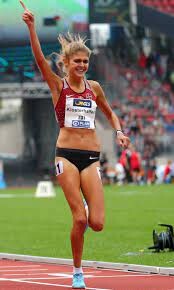
The fastest German runner in the elite field over 10 kilometers is Simon Boch (LG Telis Finanz Regensburg). He narrowly missed his first time of 27 minutes three times in 28:01 and 28:02 minutes respectively. In the wake of the favored Kenyans Vincent Kimutai Towett (PB 27:42 min) and Victor Kiptoo Kimutai (PB 27:52 min), the mark in Paderborn could finally be due. With Velten Schneider (VfL Sindelfingen), the fourth place in the DM also mixes with the road runners over the obstacles. His best time of 29:01 minutes from last year shows that he is in good hands there.
SECOND STOP ON THE R5K TOUR 2024
The prospect of a race under the eyes of the German running elite is certainly a special motivation for the young talents. They will start their five-kilometer lap in Paderborn at 11:00 a.m. in the second race of the R5K Tour 2024 , before the aces led by running star “Koko” Klosterhalfen start their ten kilometers on the super-fast Paderborn course at 12:20 p.m .
There are also well-known names on the start list at the second stop of the R5K tour 2024 to Dresden ( we reported ): Tristan Kaufhold (SSC Hanau-Rodenbach) and Linda Meier (LAV Stadtwerke Tübingen), two running talents, are starting in Paderborn, who will be in the 2023 The opening season of the R5K tour celebrated overall victories in the U20. While the Hessian can defend his title in the U20 this year, the Tübingen native has moved up to the U23. There she will meet again Sonja Lindemann from LG Wedel Pinneberg, with whom she had a duel for the U20 overall victory in the R5K tour in 2023.
MIDDLE DISTANCE RUNNERS VERSUS LONG DISTANCE RUNNERS
The female U20 and U23 are strong in this year's R5K tour for young running talent in Germany. At the start of the second race of the racing series initiated by German Road Races (GRR) together with the German Athletics Association (DLV), there are two other runners, Vanessa Mikitenko (SSC Hanau-Rodenbach) and Carolina Schäfer (TG Schwalbach), alongside Linda Meier In 2023, they competed for Germany at the U20 European Championships in Jerusalem.
This also applies to U20 European Championship participant Jan Dillemuth (Königsteiner LV), who is competing in the U23 in Paderborn: “The meeting of middle distance runners like him with runners who otherwise concentrate on long distances is also what makes the five kilometers so appealing race as part of the R5K tour,” says Christian Stork, head of organization for the Paderborn Easter Run. And so it will be particularly exciting to see how last year's winner Tristan Kaufhold will present himself, who, as the German U20 champion over 10 kilometers, improved the German best time for under 20 year olds to 29:40 minutes.
(03/29/2024) Views: 146 ⚡AMPby Christian Ermet
Paderborner Sterlauf
It is well known that the fascination of running has steadily increased in recent years.But the Paderborn Easter Run has been around for 72 years. It is the oldest street race in Germany, organized by the SC Grün-Weiß Paderborn, enjoys even after so many decades of growing popularity and belongs to many already traditional Easter.There are even runners and helpers...
more...Best squats for runners to maximize lower body strength
Want to level up your endurance and structural tolerance? Simple squats can help. Recent studies have shown that adding strength exercises to a running program can improve running economy and boost anaerobic and neuromuscular properties, and being a structurally stronger runner will help you avoid injuries while boosting endurance, helping you feel good all the way to the finish line.
Squats are a fun and simple exercise, and easy to incorporate into your daily routine—you don’t need a gym or fancy equipment, and can “stop and squat” while you’re making dinner or watching TV. Amplify your squat routine with any of these variations, which are perfectly suited for runners.

Body weight squat
Get started with a basic bodyweight squat, a foundational strength move. Your quads, glutes and hamstrings will do the major work here, while your core stabilizes you throughout.
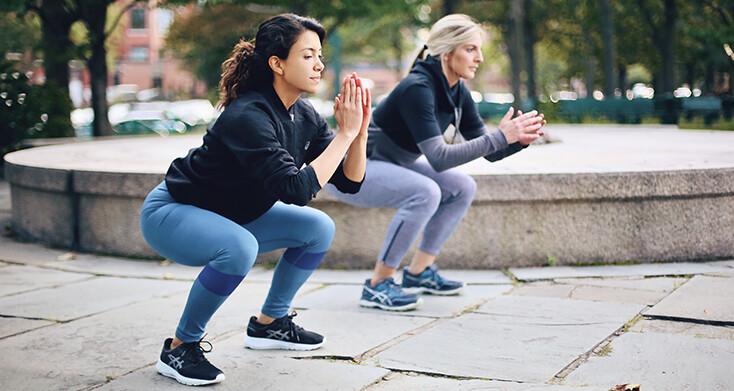
Stand with your feet hip-width apart. Brace your core, and keeping your chest out, push your hips back and down, as if you are trying to sit in a chair. Make sure your knees don’t cave in; keep them over your baby toes, or as close as possible.
Lower your body until your thighs are parallel to the floor. Angle the upper body forward and reach your arms out in front of you to aid balance. Engage your core and squeeze your glutes to return to a standing position. Pracitse inhaling as you lower and exhaling as you stand up. You should be able to complete three sets of 15 reps with ease before adding weight for resistance.
Single-leg squat
Unilateral exercises improve your balance and strength, and are also useful if you find one leg is much stronger than the other. If you’re new to these, it’s helpful to use a sturdy table or wall for balance.
Stand next to a stable surface and lift your outside foot off the ground, bending your knee at a 90-degree angle. Hike your outside hip.
Begin to squat on your inside leg. Try to reach parallel, using the stable surface for support if needed. Make sure your knee doesn’t cave in.
Once you’ve dropped as far as you can go, push back up through your entire foot and return to start. Don’t worry if you’re only able to lower yourself a small amount—as you gain strength and flexibility, you’ll notice that you can squat more deeply.
Repeat 10 times, then switch legs.
Sumo squat
Sumo squats involve a wide stance with toes pointed outward, and target the inner thighs, glutes and hamstrings. They also improve hip mobility, and engage the core.
Begin with feet wider than shoulder-width apart, toes pointing outward.
Squat down while keeping the chest up and knees tracking over the toes. (Be careful not to let your knees cave in.)
Return to the starting position, squeezing the glutes at the top of the movement.
Aim for three sets of five to 10 squats to start, and increase the number of squats as you gain strength. Once you feel comfortable, you can increase the resistance by holding a weight, kettlebell or a medicine ball at chest level.
Jump squat
These are a high-intensity variation that involves performing a standard squat and then exploding upward into a jump. They primarily target the quadriceps, hamstrings, glutes and calves, and improve explosive power, agility and cardiovascular fitness.
Stand with feet shoulder-width apart and knees slightly bent.
Bend your knees and sink into a full squat position, being careful not to let your knees collapse inward.
Engage through the quads, glutes, and hamstrings and propel the body up and off the floor, extending through the legs. With the legs fully extended, the feet will be a few inches (or more) off the floor.
Descend and control your landing by going through your foot (toes, ball, arches, heel) and sink into the squat position again, keeping your knees over your outer toes.
After landing, immediately head into the next squat. Try five to 10 jump squats to start.
Jump squats can be challenging if you’re new to them, and it may be easier to try them on a grassy field or on another surface that has some “give” to it (like a running track). Make sure you’re jumping smoothly and with control.
Squats are an intense workout and may add to lower body soreness and fatigue. Try planning a squat workout on a harder running or speedwork day—it sounds extra challenging, but it means that your body will have a chance to fully recover when you take a rest day or easy running day.
(03/29/2024) Views: 151 ⚡AMPby Keeley Milne
Ben Johnson thinks doping is worse than 30 years ago
Jamaican-born Canadian sprinter Ben Johnson made his name in track and field by winning the 100m dash at the 1988 Olympics in Seoul, which was dubbed the dirtiest race in history. Days after the race, Johnson’s urine sample came back positive for the steroid stanozolol, and he was stripped of his Olympic gold and issued a three-year ban. Though Johnson competed during a dirty time in track and field, the former world champion thinks the sport today is dirtier than it was 30 years ago.
In a March 27 interview with Radio Jamaica, Johnson said he believes not much has changed from his era to now, and that he is not surprised to see so many doping violations in athletics. “If it weren’t for the more powerful nations being beaten at their own game, doping wouldn’t be a big issue,” said Johnson.
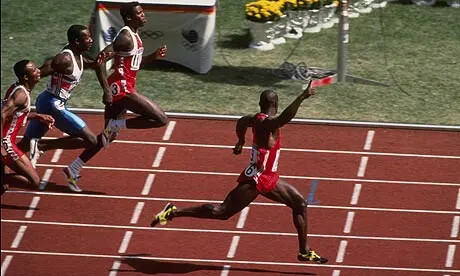
Johnson, now 62, was banned for life from athletics by the IAAF (now World Athletics) in 1993 after another positive doping test, this time for excess testosterone. Johnson believes countries like Jamaica are punching above their weight with its sprint rivalry against the U.S. “In my days, the Americans did not like someone from a small island beating them,” he said. “The opportunity to do well and make a living in track and field is hard. Americans blame others, but they also dope themselves.”
The 1988 Olympic 100m final was dubbed the dirtiest race ever, as six of the eight finalists had a positive doping test at some point in their careers. The bronze medallist, American Calvin Smith, was the only sprinter among the top five who never had a positive test.
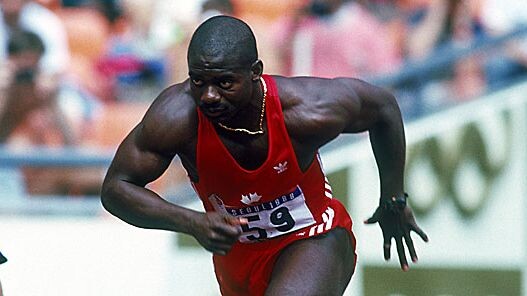
Johnson went on to say that he does not follow track and field as much as he used to, but still sees the times athletes are running on social media and sanctions posted by the Athletics Integrity Unit (AIU).
(03/29/2024) Views: 153 ⚡AMPby Marley Dickinson
Why 10k is the perfect distance, according to these running experts
The Greek messenger Pheidippedes has a lot to answer for. Had his journey of glory been over the far more user-friendly distance of 10k rather than the 40k it was, there’d likely be so many more runners.
Back in 490BC he ran from the coastal town of Marathon back to Athens to report a Greek victory over Persia, and then promptly collapsed and died (in his defence, he had run 240km beforehand, so was understandably exhausted).
From his memorable final 40k – the distance from Marathon to Athens – the modern-day 42.2k (26 miles, 385 yards) marathon developed, and has become the go-to event for tens of thousands of runners worldwide.
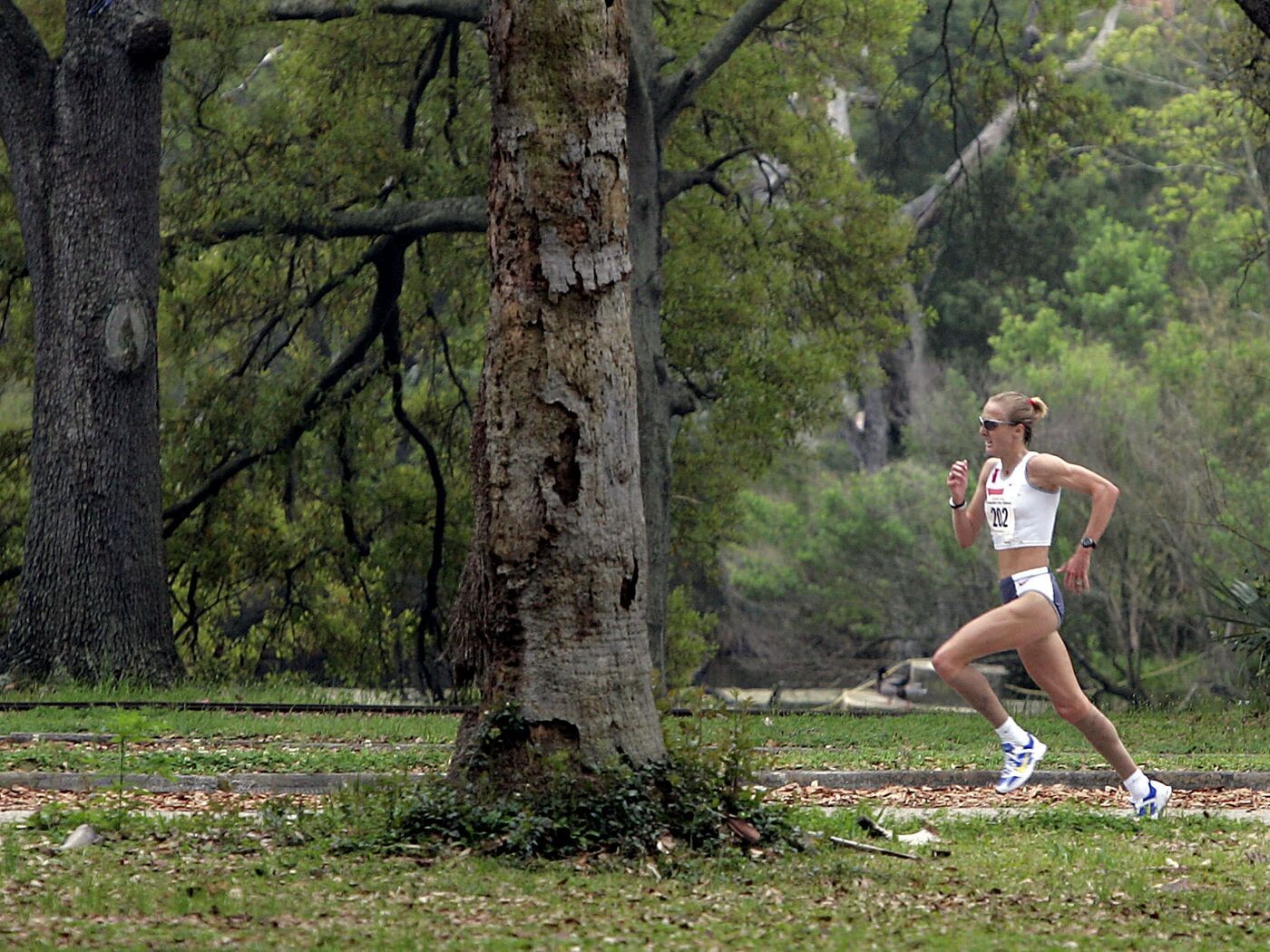
What makes 10k so perfect – by Saga Exceptional’s resident running expert
I’ve been running for more than 50 years and can confirm that taking part in marathons comes at a high price.
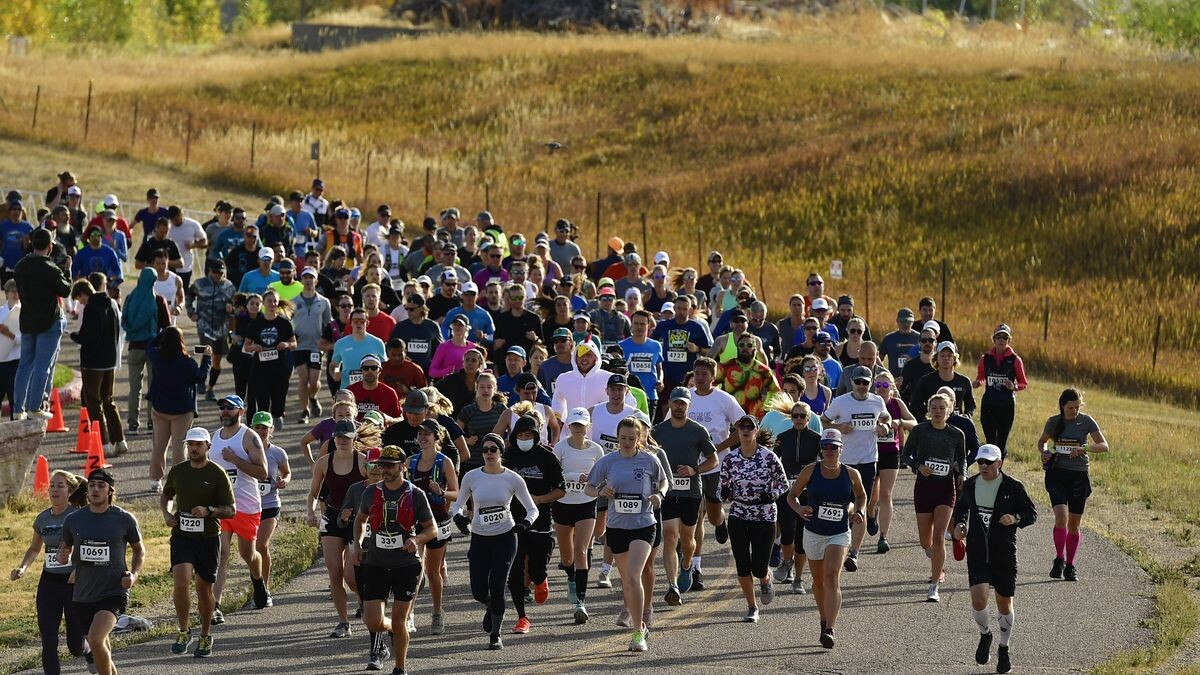
Running that kind of distance can take a heavy toll on your body, as well as time – which is where 10k events come in. The distance offers all the glory and kudos of the marathon – as well as the camaraderie, buzz and general excitement – but none of the significant muscle damage. And many experts believe that 10k can be the perfect distance for older runners.
Marathon races such as London, Berlin and New York grab all the headlines and yes, on the surface they do appear exciting, tempting even. You find yourself watching the London Marathon on TV and saying: ‘That’ll be me next year.’ But, as any finisher will tell you, there’s a cost.
As a runner, I’ve completed many 10k races – all the way from the incredible Borobudor race in Indonesia, which finishes at the foot of an ancient temple, to a more apparently mundane sounding (but it isn’t) Southend 10k, which finishes by the mile-long pier.
As such, I can say with no word of exaggeration, that a 10k can match a marathon in many departments – and even outdo it in others. I once ran the Crescent City Classic in New Orleans and then the spent the rest of the day running around the city taking in all the sights. Try doing that after a marathon!
There are some fabulous 10k races around. The Asics London 10k on July 9, for example, takes in all the classic sights from Big Ben to Piccadilly Circus. They deliver everything a big city marathon can offer. Or you can choose a local event, of which there are hundreds up and down the country every weekend. Everybody is welcome, the atmosphere is always great, and should you get the bug, well, there’s always another one next week. Plus, your body won’t mind.
(03/28/2024) Views: 179 ⚡AMPby Paul Larkins
Crescent City Classic 10k
The Crescent City Classic isannual 10-kilometer race held in New Orleans, Louisiana,United States. Mac DeVaughn founded the Classic and held the first race in 1979. The race was originally held in the Fall, but the race is now held the Saturday before Easter. The Classic is New Orleans’ (and the region’s) premier 10k road race, and one of the oldest...
more...Organizers cancel 2024 Providence Marathon
The Providence Marathon & Half Marathon, scheduled for May 5, has been canceled "due to unforeseen challenges, including the Washington Bridge closure," according to a Providence Marathon spokesperson.
Organizers informed Providence Mayor Brett Smiley's office of the cancellation Thursday morning. The marathon is sponsored by The Providence Journal.
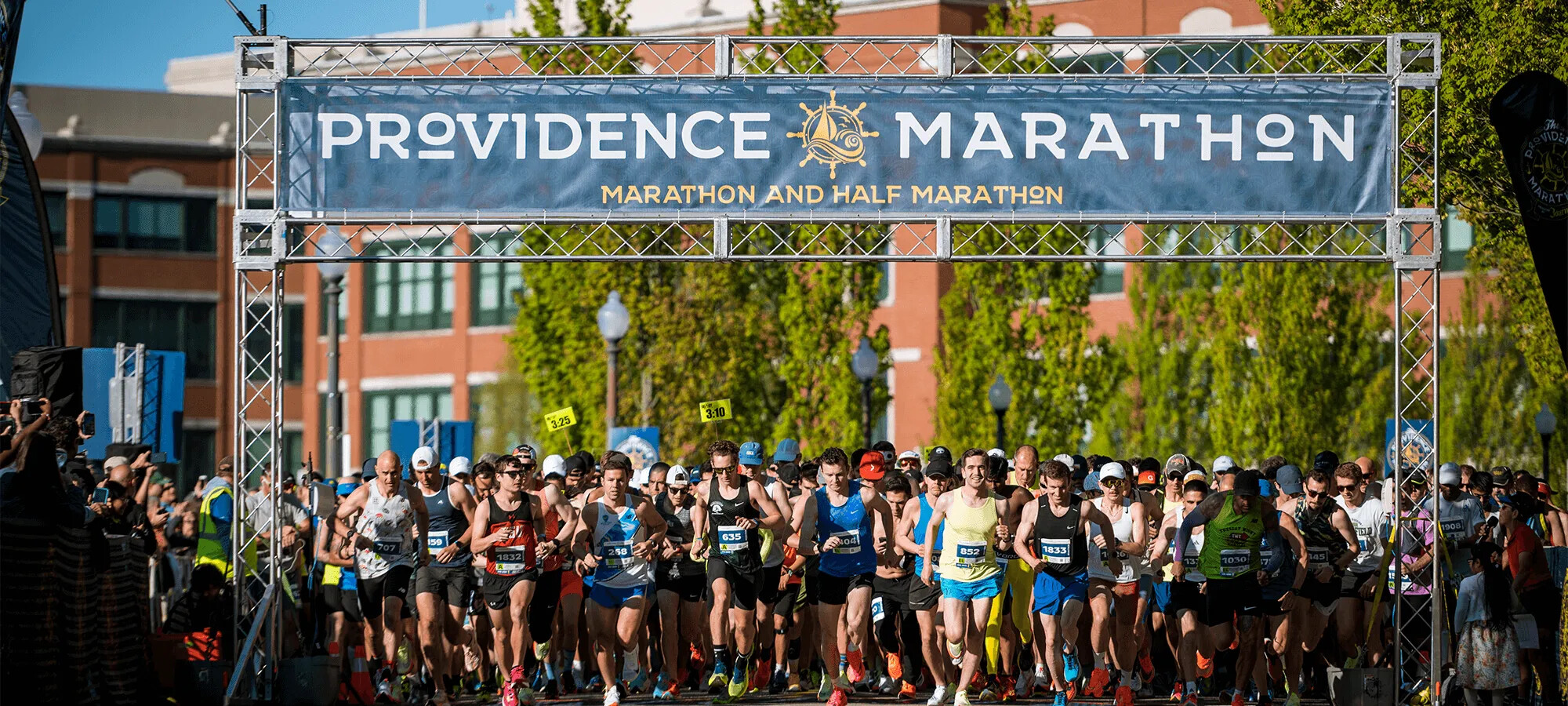
“Despite our best efforts working with local leaders, the 2024 Providence Marathon & Half Marathon has been canceled due to unforeseen challenges, including the Washington Bridge closure," a marathon spokesperson said in a statement. "The safety and security of participants is our priority, and while we were unable to secure an adequate route this year, we hope to see everyone in 2025.”
Smiley spokesman Josh Estrella issued the following statement: "While the City is disappointed that there will not be a full or half marathon this year, we look forward to working with organizers in future years to develop a route that responds to the new challenges presented by the Washington Bridge closure to ensure a safe race for runners, neighbors and businesses."
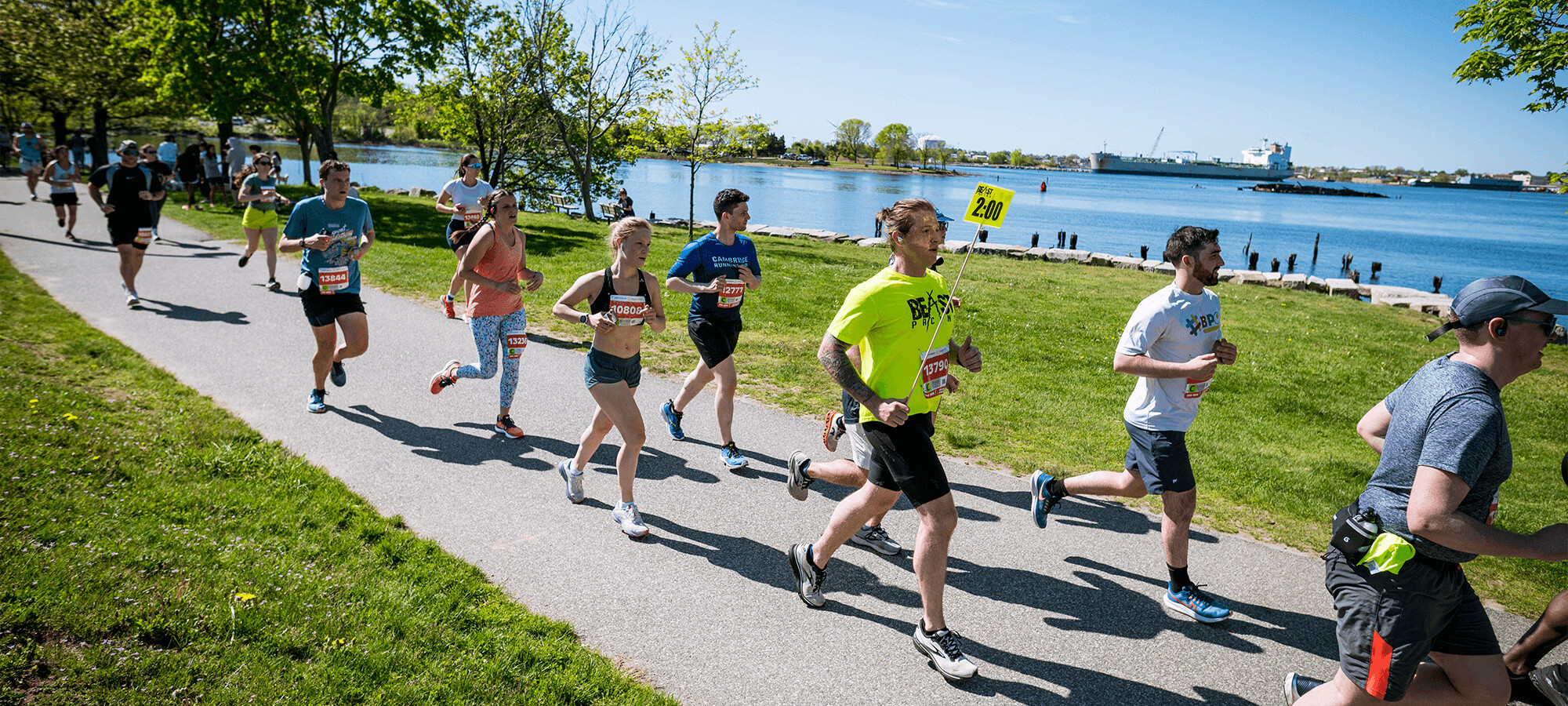
How many ran the race last year?
The race drew nearly 6,000 runners last year and is a qualifier for the Boston Marathon. It raised more than $56,000 for the charity Make-A-Wish Massachusetts and Rhode Island, according to its website.
Runners who have already signed up for the race were notified of the cancellation via email and offered several options, including deferring their registration until next year, transferring their registration to another Ventures Endurance event or getting a refund.
(03/28/2024) Views: 173 ⚡AMPby Jack Perry
Providence Marathon
This exciting race day in Down City will host a marathon, half marathon, 5k and kids fun run. The Marathon will start at 7:30 a.m. Sunday in Downtown Providence, Rhode Island. The Half Marathon will start at 8:00 a.m. from the same location. The 5k will follow at 8:15 am and the kids race with take off at 8:20 all...
more...Here’s how “gratitude miles” can make you a happier, healthier runner
If you’re feeling low on motivation and pounding the pavement has lost its lustre, adding “gratitude miles” to your routine may be the revitalizing refresher you’re looking for. Mark White, founder of the Run Grateful initiative, explains that connecting running to gratitude can heighten your running experience and inspire connections with yourself, others and your surroundings.
“In its simplest form, we invite you to take a moment before you set off on your walk/run and focus on something you are grateful for, a person, a memory an experience,” the Run Grateful website says. Here’s what you need to know to make gratitude running part of your regime.
Run Grateful: the beginnings

“We are on a mission to help everyone experience at least one grateful mile in their lifetime, because we believe it won’t stop at one! If we are fortunate enough to have mobility, we must use it as a superpower,” Run Grateful founder Mark White writes on the initiative’s website.
In 2002, White was attending a drug rehab program and was introduced to gratitude work. “Mindfulness, meditation, gratitude and more was now a valuable part of my life that even influenced those around me,” he explains. Years later, White was supporting a friend in a 24-hour treadmill challenge that involved running one mile per hour. “I decided to attach each mile to gratitude, sharing about uplifting experiences, people in my life and more,” White says. “The day was overwhelming, inspiring and consequently RUN GRATEFUL was born!”

While the Run Grateful initiative offers socials for runners to connect at and seminars on gratitude running, you can easily incorporate their concepts into your training on your own.
3 steps to more mindful running:
While the basics of Run Grateful involve simply focusing on gratitude for any distance—be it a mile, a kilometre or your entire run, they also encourage delving deeper and boosting your gratitude sessions by adding mindfulness to your running. The initiative focuses on three things that can be incorporated into a variety of daily activities. “At Run Grateful we believe that if we can MOVE, CONNECT + REFLECT daily we give ourselves the best opportunity to navigate life, being open to what comes and have a framework to support our next steps,” the website explains.
Move
“Physically and mentally, how are we moving forward in life and have we got the momentum we need to progress?” White asks. Whether your focus of the day is an easy run, a strength training session or a tough mental challenge, make sure it is propelling you toward your goals in some way.
Connect
“Are we connecting with ourselves, with others and our surroundings?” White asks. Connecting also involves looking at your relationships and making sure you have healthy, supportive connections. Think about, and appreciate, who and what you are connected to in both your running and your life.
Reflect
Take a moment to look at your choices, and determine whether you are giving yourself the best possible opportunities in running and in life. Running reflection can be a powerful key to embracing a gratitude practice. “Do we take time to review past events? How can we improve and learn to take that into the next day?” White asks.
Adding some inspiration and zest back into your running routine can be as simple as focusing on the things that bring you joy as you run, and you may feel inspired to make mindful moments a permanent part of your training.
(03/28/2024) Views: 155 ⚡AMPby Keeley Milne
Why Noah Lyles prefers having gold medals to a world record
Noah Lyles has opened up on why he prefers winning many gold medals as compared to breaking world records.
Triple World champion Noah Lyles has admitted that he prefers having gold medals to world records despite being vocal about going for Usain Bolt’s 200m world record.
Lyles noted that having medals is a lifetime thing and they will be your forever unless one gets banned but world records usually come and go.
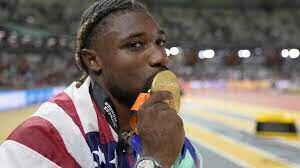
The two-time World champion explained that times are always shattered from time to time and they are not something he would prefer.
“I would rather have a gold medal because medals last forever as long as you don’t get banned but records will always be broken,” Lyles told the Letsrun.com podcast.
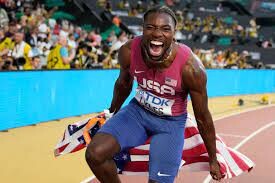
Follow the Pulse Sports X (Twitter) handle for more news.
Meanwhile, Lyles’ coach Lance Brauman also noted that he prefers gold medals to world records and explained that he also hopes Lyles thinks the same way.
“Once you’re an Olympic champion, you’re always an Olympic champion. World records are great, but it’s not what this sport should be about. The sport is a competition, the sport’s running against the other guys in the race,” said Brauman.
Concerning breaking the world record, Brauman believes that his 60m exploits in the indoor season open up the possibility of breaking Usain Bolt’s 19.19 world record in the 200m.
“Maybe he can run the world record, 19.15, 19.12, somewhere in that range, based on the same math, if I’m using it correctly.
“Will he do that? That’s hard to say. When you start talking that fast, there’s a lot of intangibles that you can’t control.
“Weather, time of year, environment, how tired are you from running three races before you get to that, which is five when you get to the final one,” the tactician noted.
(03/28/2024) Views: 159 ⚡AMPby Abigael Wuafula
'I’ve found my spot in Iten'- Belgian marathoner training in Kenya ahead of Paris 2024 Olympics
A Belgian long-distance runner has opened up about how training in Kenya has changed his mindset ahead of the Paris 2024 Olympic Games.
Koen Naert, a Belgian long-distance runner loves training in Kenya and he also has a favorite spot he loves training at as he gears up for the Olympic Games in Paris, France later this year.
The 34-year-old already qualified for the Olympic Games, clocking a stunning personal best of 2:06:56 at last year’s Rotterdam Marathon.
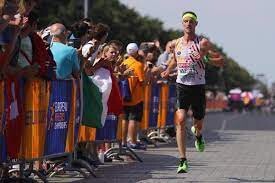
The Belgian is targeting a top-eighth finish after finishing 22nd at the 2016 Rio Olympics and then improved that with a 10th-place finish at the delayed 2020 Tokyo Olympics.
To achieve the goal, Naert has been burning the midnight oil in Kenya, and in an interview with Athletics Weekly, he explained how it feels training in his new-found spot in Iten.
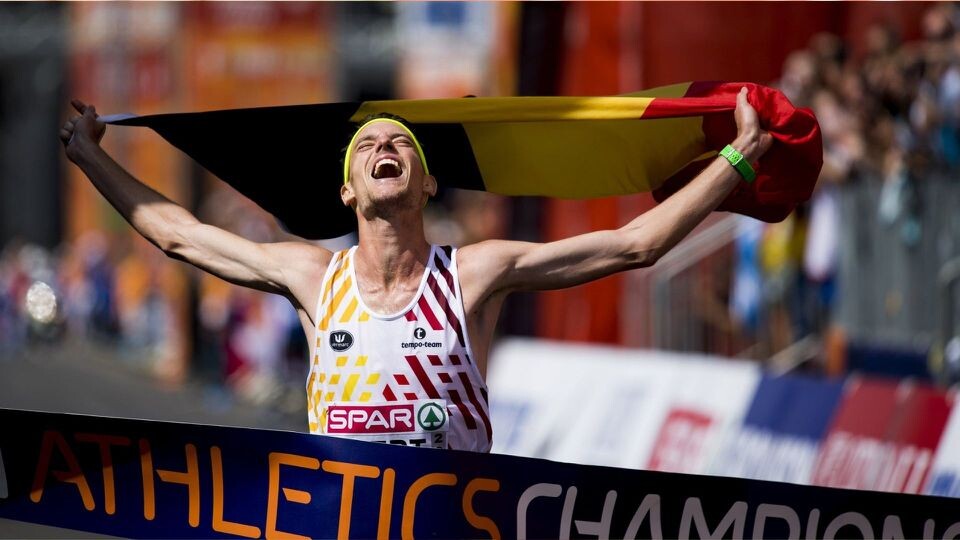
He explained that being in Kenya has helped him work on different aspects of his training since he is away from family and has time to work.
“It depends on the build-up. I think right now I’m doing 100km of running and a 50/60km alternative on the Elliptical Machine. In between my marathon blocks, I’ll do a lot of alternative training like aqua jogging but during the marathon block itself – the 12 weeks preceding my marathon – I’ll run 200km a week. Sometimes even 240km or 250km.
“I meditate at least twice a day and when I’m on camp at altitude I do a lot more sessions of meditation. That’s one advantage of being in Kenya. I also like to train in the US and have been to train with Deena Kastor’s group on occasion.
“Since 2021 however, I’ve found my spot in Iten. I waited a long time to go to Kenya because I was a little bit afraid of the food and life there but once you are on the ground, there’s no distraction and it’s a bit like living like a monk on a mountain,” he told Athletics Weekly.
He added that Olympic success for him would be to have to be honest with himself and he explained that he would need a little miracle to get on the podium.
“However, sometimes miracles exist and you never know. It will be challenging with the weather and the course. I will prepare myself the best I can but the top eight is my absolute goal. I was pretty close in Tokyo but we will see and every race/championship is different,” he said.
There are a lot of training camps in Kenya. One of the best is the KATA Running Retreat located near Thika. At any one time there are 20 or more athletes training at the Kenyan Athletics Training Academy (KATA).
(03/27/2024) Views: 157 ⚡AMPby Abigael Wuafula
Paris 2024 Olympic Games
For this historic event, the City of Light is thinking big! Visitors will be able to watch events at top sporting venues in Paris and the Paris region, as well as at emblematic monuments in the capital visited by several millions of tourists each year. The promise of exceptional moments to experience in an exceptional setting! A great way to...
more...Three workouts for endless endurance
If you’re gearing up for a half-marathon distance or longer, you’re likely hoping to build your endurance tank to keep your race pace steady and strong through the hard final miles of your race. Pro ultrarunner Krissy Mohl, author of Running Your First Ultra, whose accomplishments include taking fourth place at both Western States 100 and Hardrock 100 (2012), schedules regular endurance-based workouts for the athletes that she coaches that are appropriate for runners targeting any longer distance race.
Before you tackle any of these workouts, make sure you have a strong training base, and schedule an easy running or recovery day to follow. Use these as your bread-and-butter workouts in your pursuit of crushing a consistent race-day pace.
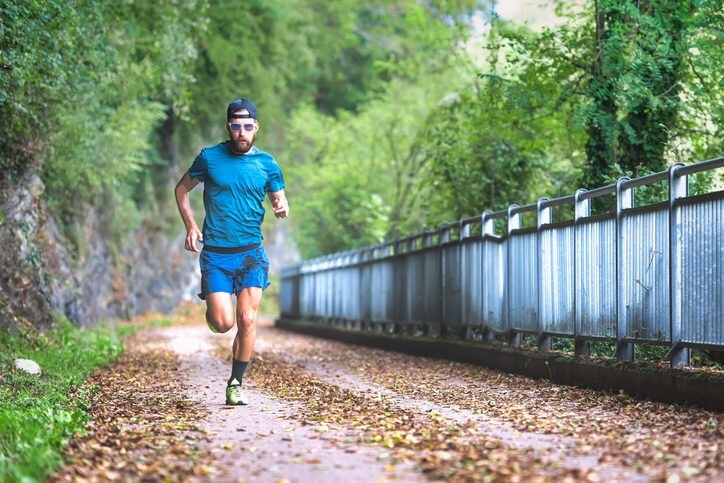
1.- Pace repeats
Mohl has runners use this workout throughout their entire training build, beginning with 5 or 6 repeats and building from there.”It is key to find the pace you can manage the entire workout,” she says. Aim to be consistent and steady, with your final repeat at the same pace as your first.

Warm up with 15 minutes of easy running.
Run 7-8 x 5 minutes steady, with 1 minute recovery between each repeat.
Cool down with 15 minutes of easy running.
Adapt this workout for your ability and goals by adding repeats (or doing less), focusing on consistency.
2.- Endurance pyramid
These pyramid intervals are shorter than most endurance sessions, but they add up to a strong, leg-tiring session. Mohl suggests less technical terrain for this workout to work on turnover: “Make these intervals a little quicker than normal, especially the 1-and 2-minute ones.”
Warm up with 15-20 minutes of easy running.
Pyramid: Run 1,2,3,4,3,2,1 with equal recovery between each segment.
Cool down with 15 minutes of easy running.
3.- Steady hills
Whether your race is a flat road one, or an ultra that involves powerhiking, hill training will build confidence and strength. Mohl says that a consistent, runnable hill is best for this workout.
Warm up with 15-20 minutes of easy running.
Run 5 x 5 minutes hill running with one minute of recovery after each repeat.
Cool down with 15 minutes of easy running.
Make sure you are fuelling appropriately for long, tough training, and prioritizing quality recovery time that includes rest days (at least one per week).
(03/27/2024) Views: 157 ⚡AMPby Keeley Milne
Ethiopian Tadu Abate And Kenya's Veronica Maina Win Wuxi Marathon In China
China's marathon runner He Jie improved the national record to 2:06:57 at the Wuxi Marathon, marking the third new national record in a year.
He Jie set China's new national men's marathon record at the 2024 Wuxi Marathon on Sunday, while Tadu Abate Dedm of Ethiopia and Kenya's Veronicah Njeri Maina won the men's and women's races respectively.

25-year-old He clocked two hours, six minutes and 57 seconds to finish fourth in the men's race, 39 seconds shy of Dedm, who set a new event record. Abay Alemu Lesa of Ethiopia and Nicholas Kirwa of Kenya finished second and third respectively.
"I'm more than satisfied with myself today, it's a result of our hard work from the training camp in Kenya," He reflected on the race. "The international athletes raced at a very high level today and I almost collapsed in the final kilometers. But the result showed that the better my opponents are, the stronger I am."

He had improved the national record by 46 seconds at last year's Wuxi Marathon, which was lowered by another 21 seconds by Yang Shaohui at the Fukuoka International Marathon last December.
"My goal was to break into two hours and six minutes for China. The new record doesn't belong to myself, but is a result of collective efforts from marathon runners of my generation," said a modest He.
Looking ahead to the Paris Olympics, both He and his coach Xiao Li have high expectations, aiming to bring Chinese marathon to a new height. "He won all 10 races that he competed in last year, including the Asian Games. A top eight finish will be our goal in Paris, which will be a historic result for China," Xiao added.
On the women's side, Maina also broke the event record with a time of 2:24:46, sweeping the podium with her compatriots Rodah Jepkorir Tanui and Monica Chebet Chepkwony.
As the Wuxi Marathon marks its 10-year anniversary, the event also serves as the first leg of this year's National Marathon Championships and the trials for the Paris Olympic Games.
He, Yang and Sangji Dongzhi finished top three in the men's domestic race, while Zhang Deshun won gold in the women's domestic category with 2:27:12, followed by Li Dan and Bai Li.
According to the qualification criteria of the Chinese Athletics Association, the Wuxi Marathon and several international marathons with World Athletics points held between January 1 and May 5 are counted as the Paris Olympic trials. Three athletes with the best finishes from the above-mentioned events will qualify for the Paris Olympics.
As of now, He, Yang and Wu Xiangdong lead the men's squad, while Xia Yuyu, Zhang and Bai top the women's list.
(03/27/2024) Views: 160 ⚡AMPby Xinhua News
Wuxi Marathon
Join Wuxi Marathon The Wuxi Marathon is fast and scenic race which receives support from the local government and enthusiastic residents....
more...Cam Levins to return to racing at Istanbul Half Marathon
The Canadian marathon record holder Cam Levins will return to the roads on April 28 in Turkey.
On Tuesday, Levins was announced as one of the headliners for the Istanbul Half Marathon next month. This will be Levins’ first race since his DNF at the New York City Marathon last November.
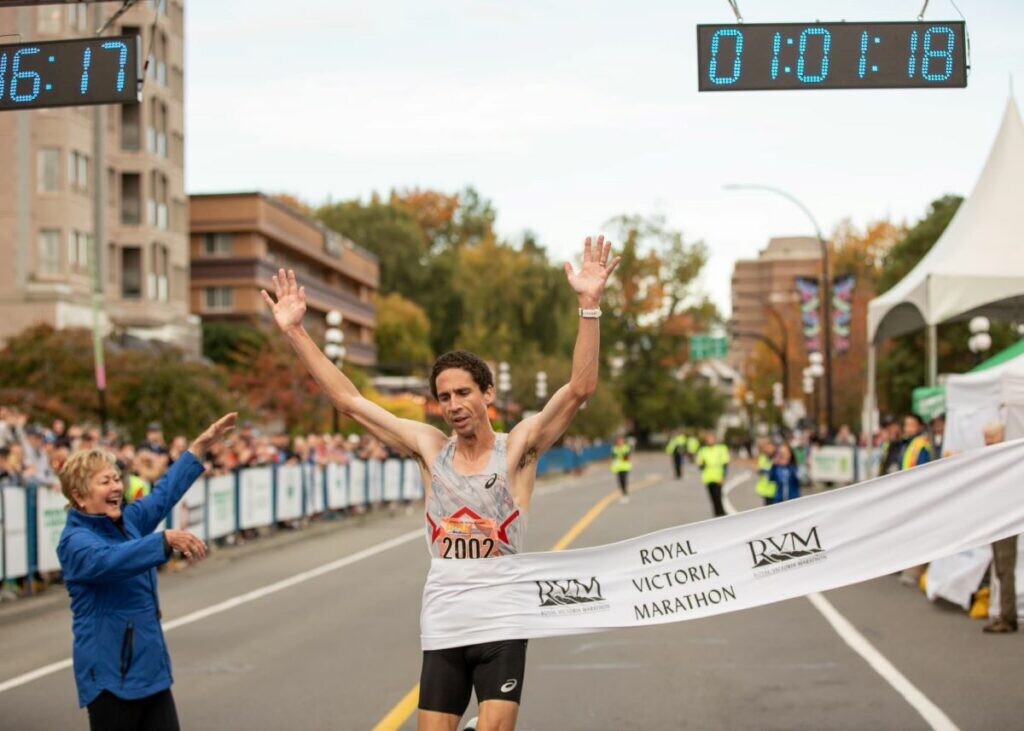
Levins chose to race New York in preparation for the hilly Paris Olympic marathon, which he had already qualified for. The 34-year-old had high expectations heading into NYC but dropped out near the 20 km point. He later disclosed that he was not injured but did not feel well, and things didn’t improve.
The Istanbul Half Marathon annually attracts some of the fastest distance runners in the world, resulting in sub-one-hour men’s champions in four of the last five years. In 2021, the women’s world half marathon record of 64:02 was set at the race by Kenya’s Ruth Chepngetich. Ethiopia’s Letesenbet Gidey broke the world-record mark at the 2021 Valencia Half Marathon later that year.
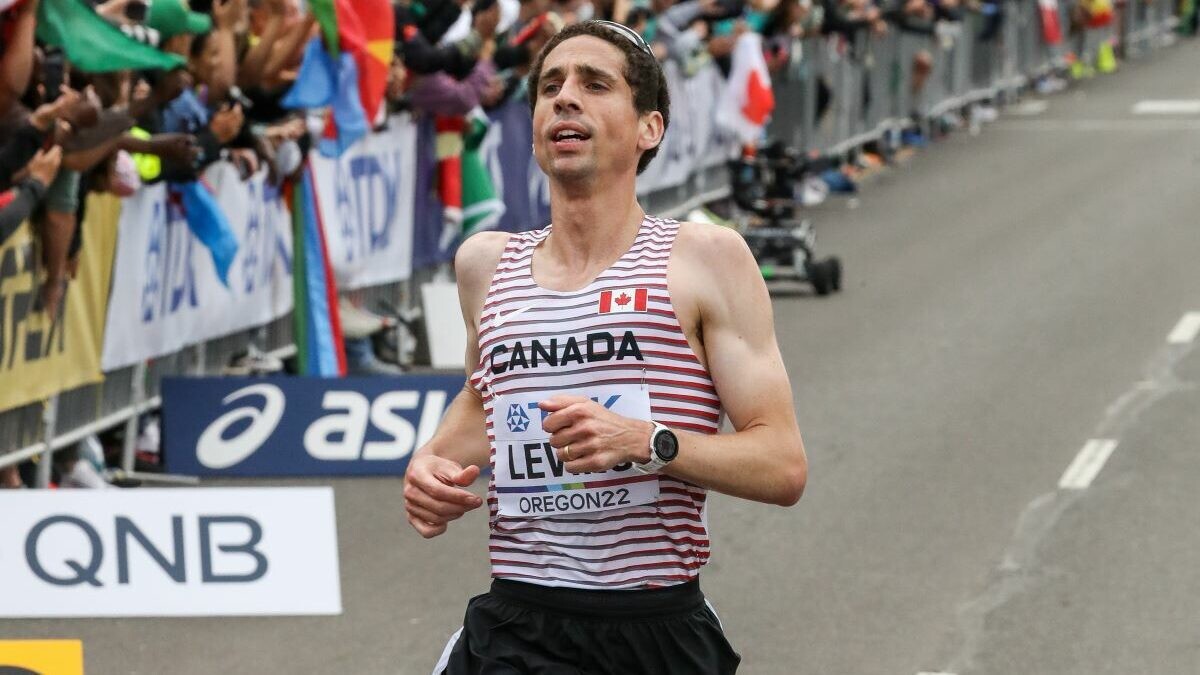
Levins currently holds both the Canadian marathon record and half marathon mark of 60:18, which he ran at the Vancouver First Half in February 2023. A month later, he hit the 2024 Paris Olympic marathon standard at the Tokyo Marathon, where he clocked a personal best and North American area record of 2:05:36.
He is one of two Canadian men to have hit the Olympic standard and has already received early nomination for Team Canada at the Paris Olympics.
(03/27/2024) Views: 177 ⚡AMPby Marley Dickinson
N Kolay Istanbul Half Marathon
The Istanbul Half Marathon is an annual road running event over the half marathon distance (21.1 km) that takes place usually in the spring on the streets of Istanbul, Turkey. It is a IAAF Gold Label event. The Istanbul Half Marathon was first organized in 1987. After several breaks it was finally brought back to life in 2015 when the...
more...Longtime New Hampshire resident Mike Beeman, set to running in his 47th consecutive Boston Marathon this year
When it comes to running the Boston Marathon, any runner who has done it for at least the last 25 straight years is part of the “Quarter-Century Club.”
There are 121 people in that club right now, including longtime New Hampshire resident Mike Beeman, who is set to run his 47th consecutive Boston Marathon in April.
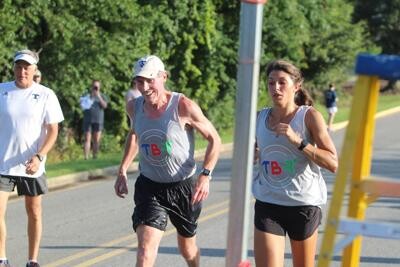
Beeman is a Pinkerton graduate and a former teacher and coach at Salem High School and Londonderry High School.
He lives in Georgia now and he is fifth on the list of quarter-century runners.

“I’ve run just about everywhere. Boston is just so special. The fanbase, the knowledge of the people out there on the course, it is great. The people change, but the cheering and the excitement, especially towards the end, never changes,” Beeman said.
Beeman said he would like to get to 50 straight Boston Marathons, which would put him in the even-more-exclusive “Half-Century Club” of Boston Marathon runners.
(03/26/2024) Views: 191 ⚡AMPby Jamie Staton
Boston Marathon
Among the nation’s oldest athletic clubs, the B.A.A. was established in 1887, and, in 1896, more than half of the U.S. Olympic Team at the first modern games was composed of B.A.A. club members. The Olympic Games provided the inspiration for the first Boston Marathon, which culminated the B.A.A. Games on April 19, 1897. John J. McDermott emerged from a...
more...Berihu and Chepkurui head Istanbul elite fields
With fast races and deep elite fields the Türkiye Is Bankasi Istanbul Half Marathon has in recent years established itself among the world’s most prestigious races at the distance.
It looks certain that this pattern will be continued when the 19th edition takes place on 28th April. The current elite start list features 18 runners who have personal bests faster than 1:01:00 and nine women who have already run faster than 1:08:00. There are only very few other half marathons in the world who can match such an impressive depth. Ethiopia’s Solomon Berihu is currently the fastest athlete on the list with a PB of 59:17 while Gladys Chepkurui of Kenya heads the women’s field with 1:05:46.
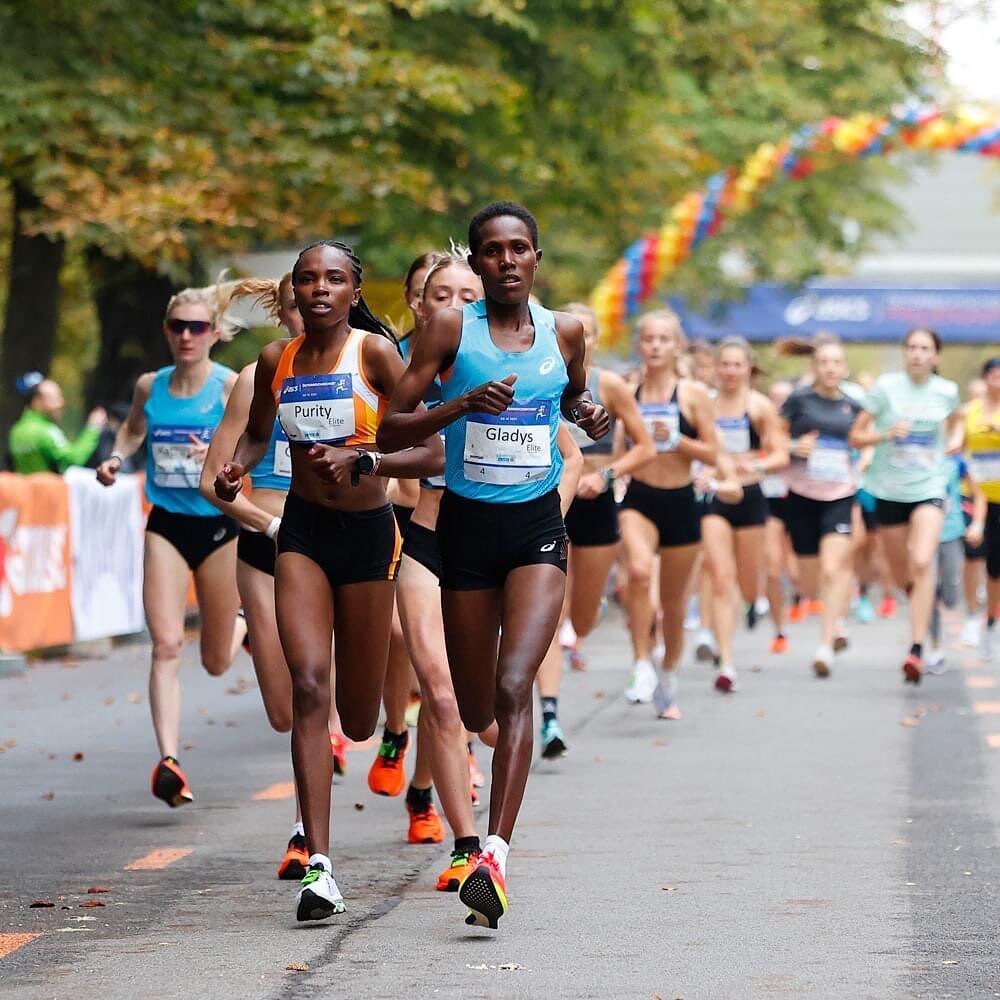
In total around 16,000 runners are expected to compete in the Türkiye Is Bankasi Istanbul Half Marathon, including a 10k race staged parallel on 28th April. Turkey’s number one road race features a Gold Label of World Athletics, reflecting the high standards of the event. Registration for the Türkiye Is Bankasi Istanbul Half Marathon is still possible at: https://www.istanbulyarimaratonu.com/en/
“The Türkiye İş Bankası İstanbul Half Marathon stands out with its historic route. It is also one of just a smaller number of races in the Gold Label category worldwide“, said Race Director Renay Onur. “Our race is a special event that brings together both internationally renowned athletes and talented newcomers. This year, elite athletes from many different countries will take part. Despite a month remaining until the deadline, the registration record has already been broken and we expect to have 16,000 athletes.”
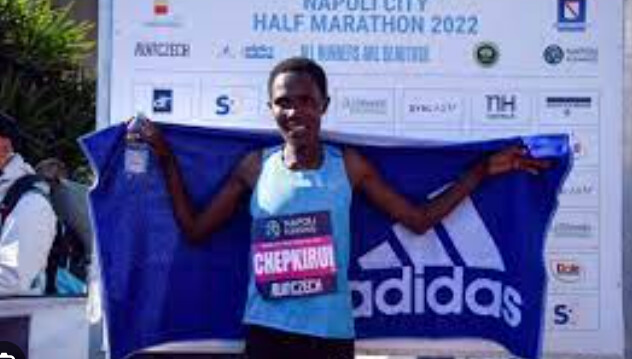
With his personal best of 59:17 Solomon Berihu is just two seconds slower than Istanbul’s course record, set by Kenya’s Rodgers Kwemoi two years ago in windy conditions. It remains to be seen if the 59:15 record will be challenged next month. While Berihu is the fastest on paper a fellow Ethiopian has lately shown very good form: Dinkalem Ayele clocked a personal best of 59:30 for fourth place in Barcelona earlier this year. He then went on to take the prestigious Lisbon Half Marathon this month. Running in very warm conditions and without a pacemaker for much of the distance his winning time of 1:00:36 would most likely have been much faster in different circumstances.
23 year-old Ayele is the third fastest on the start list behind Berihu and Edmond Kipngetich. The Kenyan clocked 59:25 in Copenhagen two years ago. He has consistently run fine half marathon times, clocking times below 60:00 four times in the past three years. A runner from Kenya with a prominent name could be in for a surprise: Solomon Kipchoge (who is not related to the double Olympic champion Eliud Kipchoge) must still be regarded as a newcomer despite being already 27. He first raced in Europe in 2022, when he clocked 1:02:00 in Italy’s Trento Half Marathon. Last year Kipchoge improved significantly when he finished fifth in Lille with 59:37.
Cameron Levins might well try to challenge the African favorites. A year ago he broke the Canadian half marathon record when he won the race in Vancouver with 1:00:18. The Türkiye Is Bankasi Istanbul Half Marathon will be his first major race in a year, when Levins will compete in the Olympic marathon in Paris.
In the women’s field the fastest runner on the start list has shown great consistency in the half marathon: Gladys Chepkurui clocked her personal best of 1:05:46 in Barcelona last year, when she was fourth in a fast race. The 29-year-old has already run the half marathon under 70:00 on eleven occasions. Last year she competed at eight races over her favorite distance, winning three of them and finishing runner-up three times. Gladys Chepkurui already showed fine form this year as well, when she was third in Barcelona and second in New York with 1:06:34 and 1:09:27 respectively.
Ftaw Zeray is another athlete whose focus is very much on the half marathon. 2023 was her best year so far. The Ethiopian took third in the competitive Ras Al Khaimah Half Marathon in the United Arab Emirates with 1:06:04, which remains her personal best. Zeray then was sixth in the World Half Marathon Championships in Riga, Latvia. This performance suggests that the 26 year-old should be able to improve her personal best.
Sheila Chelangat is an athlete who has just run her half marathon debut. The Kenyan was runner-up in Lille this March with 1:09:38. She has been a good track runner, featuring a fine PB of 14:40.51 in the 5,000 m. After a solid debut in Lille there is more to come from her.
Italy’s Giovana Epis is an experienced marathon runner, who was 12th at the World Championships in Budapest last year and has fine PB of 2:23:46. In the half marathon she has not yet broken 1:10:00 which she should be well capable of. Epis’ personal best stands at 1:10:15 and she is the leading European entrant of the Türkiye Is Bankasi Istanbul Half Marathon.
(03/26/2024) Views: 180 ⚡AMPby AIMS
N Kolay Istanbul Half Marathon
The Istanbul Half Marathon is an annual road running event over the half marathon distance (21.1 km) that takes place usually in the spring on the streets of Istanbul, Turkey. It is a IAAF Gold Label event. The Istanbul Half Marathon was first organized in 1987. After several breaks it was finally brought back to life in 2015 when the...
more...France aims to make Paris Olympics mosquito-free
In an effort to prevent the spread of mosquito-born viruses, France is aiming to make the 2024 Paris Olympics mosquito-free.
If you thought the Olympic flame would just be burning citronella, it won’t. According to local news, the French government and the Paris Olympic organizing committee have hired a company to install 15 traps over a one-hectare area of “green and shady, humid areas” of the city next month. This is to stop virus-carrying tiger mosquitoes from disrupting the Paris Olympics, which will attract millions of visitors.
Over the last decade, the Asian tiger mosquito has inhabited western Europe, posing a significant health risk by transmitting diseases such as dengue, chikungunya, and Zika. The government and committee see the mosquitos as a potential public relations nightmare to what is proposed to be the most digital Olympics ever. With the Games just four months away, experts are worried that a bite from a tiger mosquito could even jeopardize an athlete’s ability to compete.

An entomologist and expert on mosquito-borne diseases, Didier Fontenille, told Inside The Games: “If you have dengue, you’re not going to jump over any hurdles. The host cities and especially the Olympic Village must be kept mosquito-free.”
An entomologist and expert on mosquito-borne diseases, Didier Fontenille, told Inside The Games: “If you have dengue, you’re not going to jump over any hurdles. The host cities and especially the Olympic Village must be kept mosquito-free.”

Tiger mosquitoes lay their eggs in stagnant water. The government is pushing locals to help fight the insect war by cleaning up dirty water from outdoor flower pots or trays.
Paris will also deploy thousands of anti-insect systems citywide to slash mosquito numbers and ensure a successful, bug-free Olympics.
(03/26/2024) Views: 171 ⚡AMPby Marley Dickinson
Paris 2024 Olympic Games
For this historic event, the City of Light is thinking big! Visitors will be able to watch events at top sporting venues in Paris and the Paris region, as well as at emblematic monuments in the capital visited by several millions of tourists each year. The promise of exceptional moments to experience in an exceptional setting! A great way to...
more...Harry Hunter, 75, set to take part in Marathon Des Sables in Morocco
Harry Hunter will soon be flying out to Morocco to take part in the Marathon Des Sables in aid of Alexander Devine Children's Hospice.
Harry Hunter, 75, from Windsor, will be taking part in the race in April and hopes to raise funds for the hospice, which is the only specialist children's hospice serving Berkshire and surrounding counties.
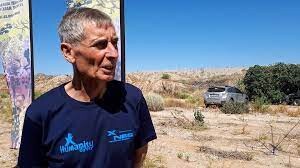
The race is in its 38th year and is a multiday race held in southern Morocco, in the Sahara Desert. This year the total distance is 252km over six stages.
A fellow boot camper of Mr Hunter's has described him as an "inspirational character", having served for 22 years in the Blues and Royals in Windsor.
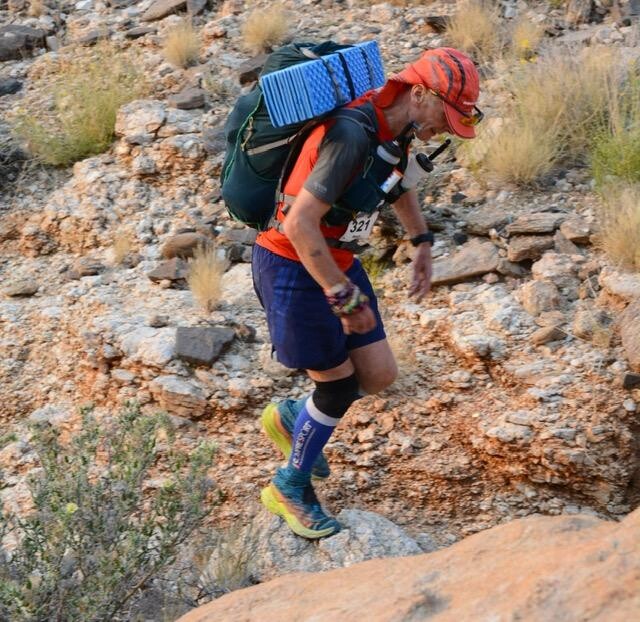
He is not a stranger to extreme challenges for charity and is "well known" in the area.
Mr Hunter will be 76 years old on the second day of the race, making him the oldest man to run it.
A fundraiser on Just Giving has been launched with a target of raising £2,000 for charity.
Alexander Devine Children's Hospice currently supports over 165 children and their families, but they are committed to growing their service and reaching out to every child and their family that needs them.
The hospice needs £2.8 million of funding each year and most of this comes from donations.
(03/26/2024) Views: 191 ⚡AMPby Daisy Waites
Marathon Des Sables
The Marathon des Sables is ranked by the Discovery Channel as the toughest footrace on earth. Seven days 250k Known simply as the MdS, the race is a gruelling multi-stage adventure through a formidable landscape in one of the world’s most inhospitable climates - the Sahara desert. The rules require you to be self-sufficient, to carry with you on your...
more...Tamarack Ottawa Race Weekend: celebrating diversity and improving accessibility
Tamarack Ottawa Race Weekend works hard to create an environment where athletes from all walks of life feel valued, supported and empowered.
Tamarack Ottawa Race Weekend has a rich history of promoting diversity, accessibility and family-friendly participation. Over the years, the event has taken significant steps to ensure that all athletes feel welcome and empowered regardless of their abilities or backgrounds. From creating separate divisions for wheelchair athletes to introducing family-friendly race options and supporting women’s participation, Tamarack Ottawa Race Weekend has consistently championed inclusivity and celebrated the achievements of its diverse participants.
A history of accessibility and inclusivity
From the early years, the race organizers recognized the importance of accessibility and implemented measures to accommodate participants with disabilities. These included accessible washrooms and aid stations and properly cleared routes. By addressing these accessibility touchpoints, Tamarack Ottawa Race Weekend became a pioneer in making running events more inclusive.
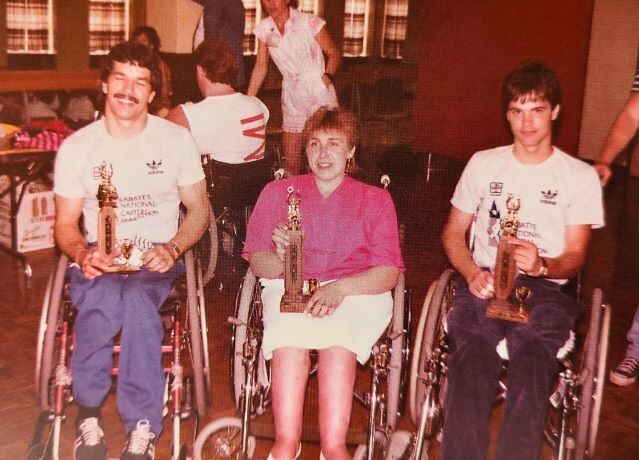
1975: Eleanor Thomas became the first female finisher, with a time of 3:27:28.
1979: Lou Mulvihill became the first wheelchair participant in Tamarack Ottawa Race Weekend. The following year, he was joined by four other athletes with disabilities, marking the beginning of the event’s commitment to inclusivity.
1983: Wheelchair athletes were given their own separate division, resulting in increased participation and recognition. Rick Hansen became the first official winner in this category. Additionally, Jacques Pilon, a blind athlete and gold medalist in the 1980 Blind Olympics, participated with a guide runner. Pilon’s inclusion paved the way for individuals living with invisible disabilities.
1998: The Tamarack Ottawa Race Weekend introduced a 2K and 5K run and walk to encourage family participation.
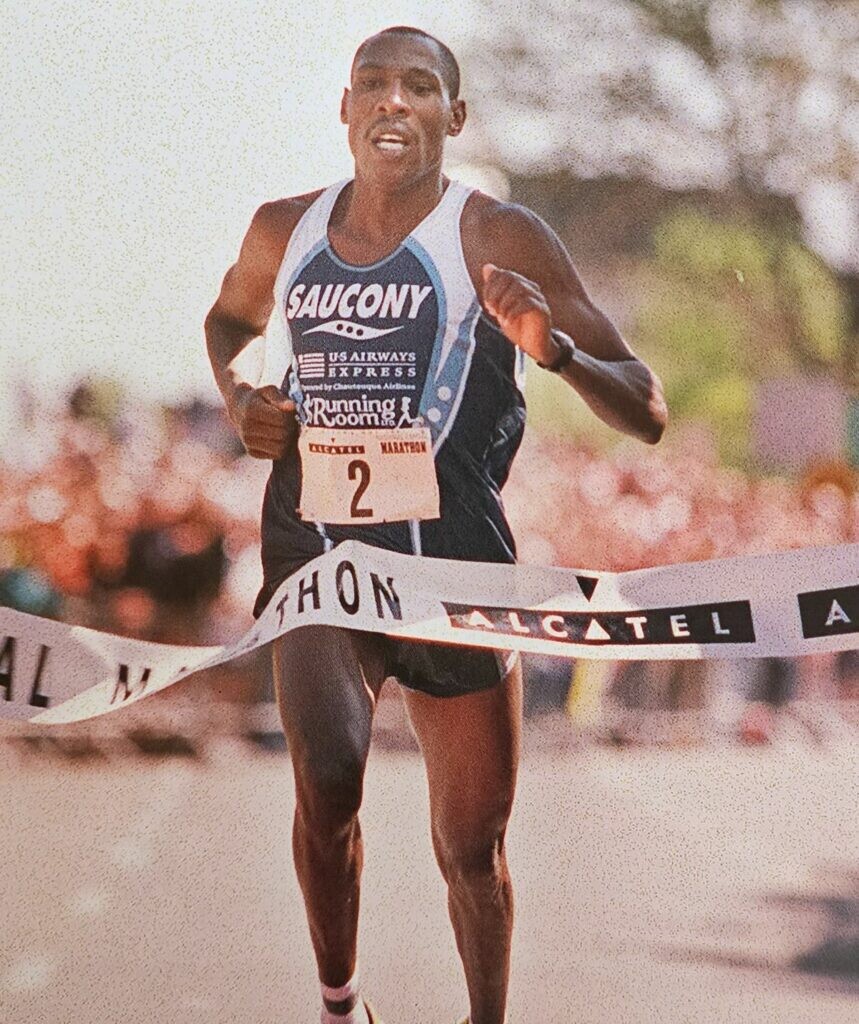
2001: Joseph Nderitu became the first African and person of color to win the marathon, marking the beginning of the elite era.
2011: Visually impaired athlete Ron Hackett completed his first of more than 16 marathons in Ottawa with the guidance of Tim Scapillato. Their successful partnership demonstrated the power of support and collaboration in enabling athletes with disabilities to excel.
2017: Andrew Press and Team LiquidGym spearheaded efforts to make Tamarack Ottawa Race Weekend more accessible for athletes using ALinkers (a mobility device).
2021: Tamarack Ottawa Race Weekend expanded gender categories to include male, female, non-binary and “prefer not to disclose.”
2022: Run Ottawa invited support runners to assist participants with all types of physical disabilities under the Adaptive Athlete Program.
2023: Tamarack Ottawa Race Weekend celebrated 18 visually impaired or blind participants, each accompanied by dedicated guides. The event also extended the Adaptive Athlete program to participants living with invisible disabilities, such as emotional or mental health challenges, allowing them to participate with support runners or guides. The race organizers fostered this inclusivity through partnerships with Achilles Ottawa, an ambassador program connecting visually impaired athletes with supportive runners.
Adaptive-athlete-friendly entry and exit routes were also added in 2023 to ensure barrier-free entry and exit for all participants.
Women in the Ottawa Marathon
The journey toward inclusivity also involves fostering women’s participation in the Ottawa Marathon. In 1975, Eleanor Thomas became the first female finisher, highlighting the drive to provide equal opportunities for all genders.
In 1983, there was a 7:1 ratio of men to women participating in the marathon, by 2023, more than 50 per cent of all registered participants in the Tamarack Ottawa Race Weekend were women.
Inviting and accessible for families
Currently, the Ottawa Kids Marathon and stroller-friendly 2K, 5K and 10K races are part of the race weekend, alongside the marathon and half-marathon. The Kids Marathon program lets children experience running a marathon by completing short segments over a few weeks or months, culminating in their final 1.2K leg on event day.
In 2024, the Ottawa Kids Marathon, 2K and 5K events will remain affordable, unaffected by price increases. This pricing strategy ensures that these family-friendly events are accessible to a diverse range of participants, irrespective of their abilities, ages or financial backgrounds.
Tamarack Ottawa Race Weekend also acknowledges the importance of accommodating families with infants. The event’s organizers have initiated conversations with new parents and other events to discuss ways of removing barriers and improving accessibility for families by considering feeding schedules. While still in the early stages of development, this initiative strives to create a supportive and inclusive environment for families participating in the race weekend.
Enhancements in 2023
The Adaptive Athletes program at Tamarack Ottawa Race Weekend continuously evolves to prioritize inclusivity and accessibility. In 2023, successful initiatives included the establishment of a dedicated tent near the start line for Adaptive Athletes and their support runners/guides/family, provision of secure wheelchair parking and delivery, distribution of cooling towels and water for Adaptive Athletes on the 2K course, a specialized Adaptive Athlete recovery area for post-race relaxation, an accessible race kit pick-up table and specially-designed race bibs to be worn on the back of an Adaptive Athlete and their guide or support runner to raise awareness and encourage understanding among participants.
Additionally, the race organizers collaborated with local organizations and community groups to establish a mentorship program for individuals from underrepresented communities. This initiative aimed to encourage participation in running and provide the necessary support to overcome potential barriers.
The 2023 race weekend featured a dedicated Diversity and Inclusivity speaker session. This panel discussion celebrated athletes’ unique identities and stories by promoting multiculturalism, engaging in conversations about inclusion and showcasing inspiring individuals who have made significant contributions to the running community.
Looking ahead to 2024
Building on the progress made in 2023, Tamarack Ottawa Race Weekend continues its commitment to improving accessibility and diversity in the upcoming year. A key focus for 2024 will be further expanding the mentorship program and establishing partnerships with more local organizations and underrepresented communities.
The organizers will also continue to offer a barrier-free start- and finish-line experience for participants who want that service and will continue to ensure aid stations are set up to be accessible for all athletes.
In 2024, Tamarack Ottawa Race Weekend aims to foster a sense of belonging for all participants by celebrating the intersectionality of identities, such as race, gender, age and ability. Through increased representation, awareness campaigns and ongoing collaboration, Tamarack Ottawa Race Weekend endeavours to create an environment where athletes from all walks of life feel valued, supported and empowered.
(03/25/2024) Views: 187 ⚡AMPby Brittany Hambleton
Ottawa 10K
Ottawa's course is fast, scenic and few elevation changes. Considered to be an excellent course for first timers and should provide an environment conducive to setting a PR. The Ottawa 10K is the only IAAF Gold Label 10K event in Canada and one of only four IAAF Gold Label 10Ks in the world. The Ottawa 10K attracts one of the...
more...Why Eliud Kipchoge is assured of his slot in Kenya’s Olympics team
Two-time Olympics champion Eliud Kipchoge’s recent form has seen some doubt whether he will be able to defend his title in Paris but Athletics Kenya looks set to have him on the team.
Olympic champion Eliud Kipchoge will definitely be at the Paris 2024 Games despite his indifferent form in his recent races.
Kipchoge has won one of his three marathons [Berlin 2023], coming after a sixth-place finish in Boston the same year, before a 10th placing in Tokyo this month.
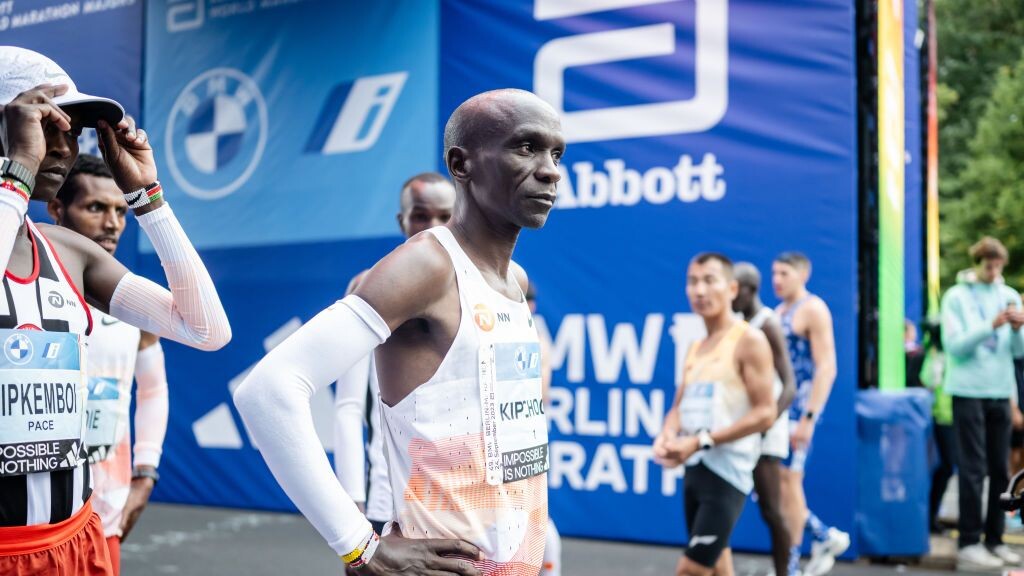
That has seen doubts emerge from some observers who feel the GOAT might not have enough to claim a third straight Olympics gold while others have even called for the 39-year-old to give way but athletics coach Julius Kirwa feels it would be ill advised to write him off.
“Kipchoge is good and we depend on him,” Kirwa, who is among those who will select Kenya’s final marathon squad to Paris, told Pulse Sports.
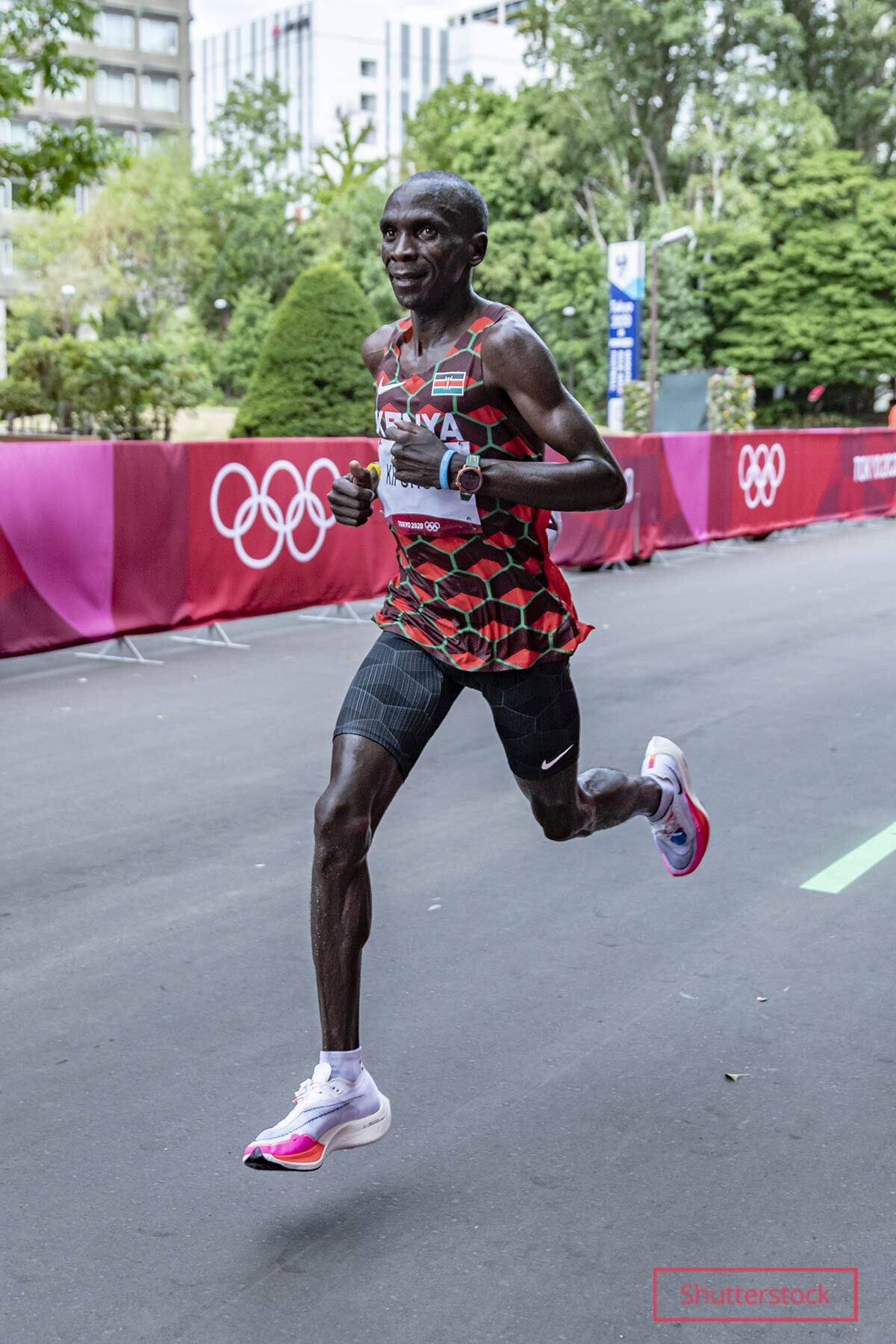
“We encourage him to ignore everything that is being said about him and only concentrate on representing the country. I know he is ready and capable of representing the country as he has always done,” added Kirwa.
Kirwa insists Kipchoge has to be on the plane to Paris due to his status and the fact the he is one of the most reliable athletes for Kenya even if emerging stars are threatening to dethrone him.
“Eliud is a defending champion and is always available to represent the country,” said the veteran coach. “We cannot say because there are others who have come and run better than him we are going to leave him out.”
“We give them an opportunity to represent the country based on knowledge, capabilities, strength and discipline, which is very important.”
Kipchoge was part of a strong 10-man provisional team unveiled last December that had the late Kelvin Kiptum, with 2024 Tokyo Marathon champion Benson Kipruto, Timothy Kiplagat and Vincent Ngetich, who finished second and third in Tokyo, Bernard Koech, two-time New York Marathon champion Geoffrey Kamworor, Cyprian Kotut, 2022 London Marathon champion Amos Kipruto and Titus Kipruto.
Following Kiptum’s demise, Athletics Kenya intend to add another name to the list before the final three are unveiled by May with the women’s team having defending champion Peres Jepchirchir, former world record holder Brigid Kosgei, Boston and New York Marathon champion Hellen Obiri, 2019 world champion Ruth Chepng'etich, 2024 Tokyo Marathon runners-up Rosemary Wanjiru, Joycilline Jepkosgei, Sheila Chepkirui, Judith Korir, Seley Chepyego and Sharon Lokedi.
(03/25/2024) Views: 215 ⚡AMPby Joel Omotto
Paris 2024 Olympic Games
For this historic event, the City of Light is thinking big! Visitors will be able to watch events at top sporting venues in Paris and the Paris region, as well as at emblematic monuments in the capital visited by several millions of tourists each year. The promise of exceptional moments to experience in an exceptional setting! A great way to...
more...Daniel Simiu targets historic victory at Okpekpe Race amidst high expectations
Daniel Simiu aims to defend his title and make history at the Okpekpe 10km Road Race in Nigeria.
World Half Marathon silver medallist, Daniel Simiu, is setting his sights on making history at the upcoming Okpekpe International 10km Road Race, scheduled for May 25 in Okpekpe, Edo State in Nigeria.
Following his record-breaking win last year, where he set a new course record of 28:28, Simiu is not only looking to defend his title but also to become the first man to successfully do so in the history of the Okpekpe race.
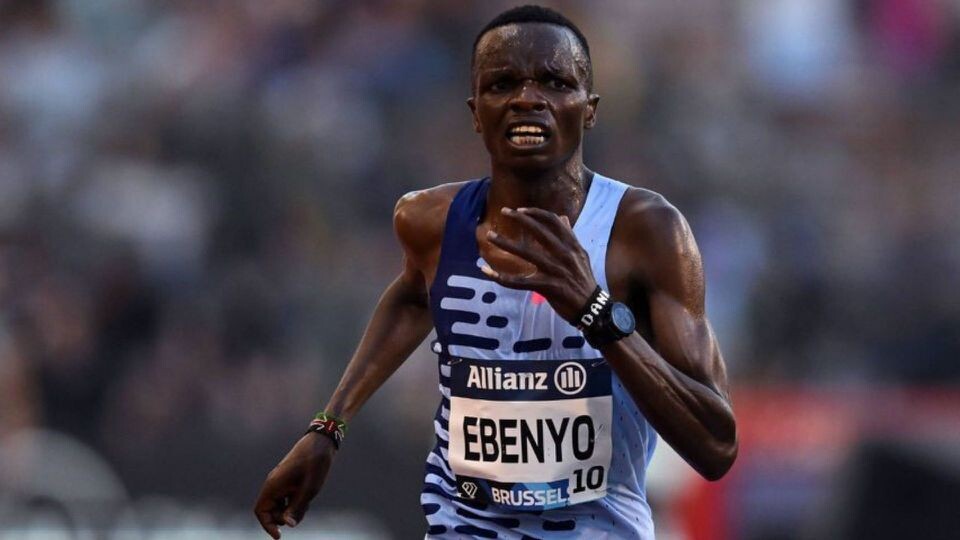
"I am interested in returning to Nigeria to run at the Okpekpe race. Nigeria is like my second home,” the 28-year-old athlete remarked as per The Guardian.
When asked about the possibility of breaking his own course record and potentially becoming the first man to run under 28 minutes at Okpekpe, Simiu remained modest yet hopeful.
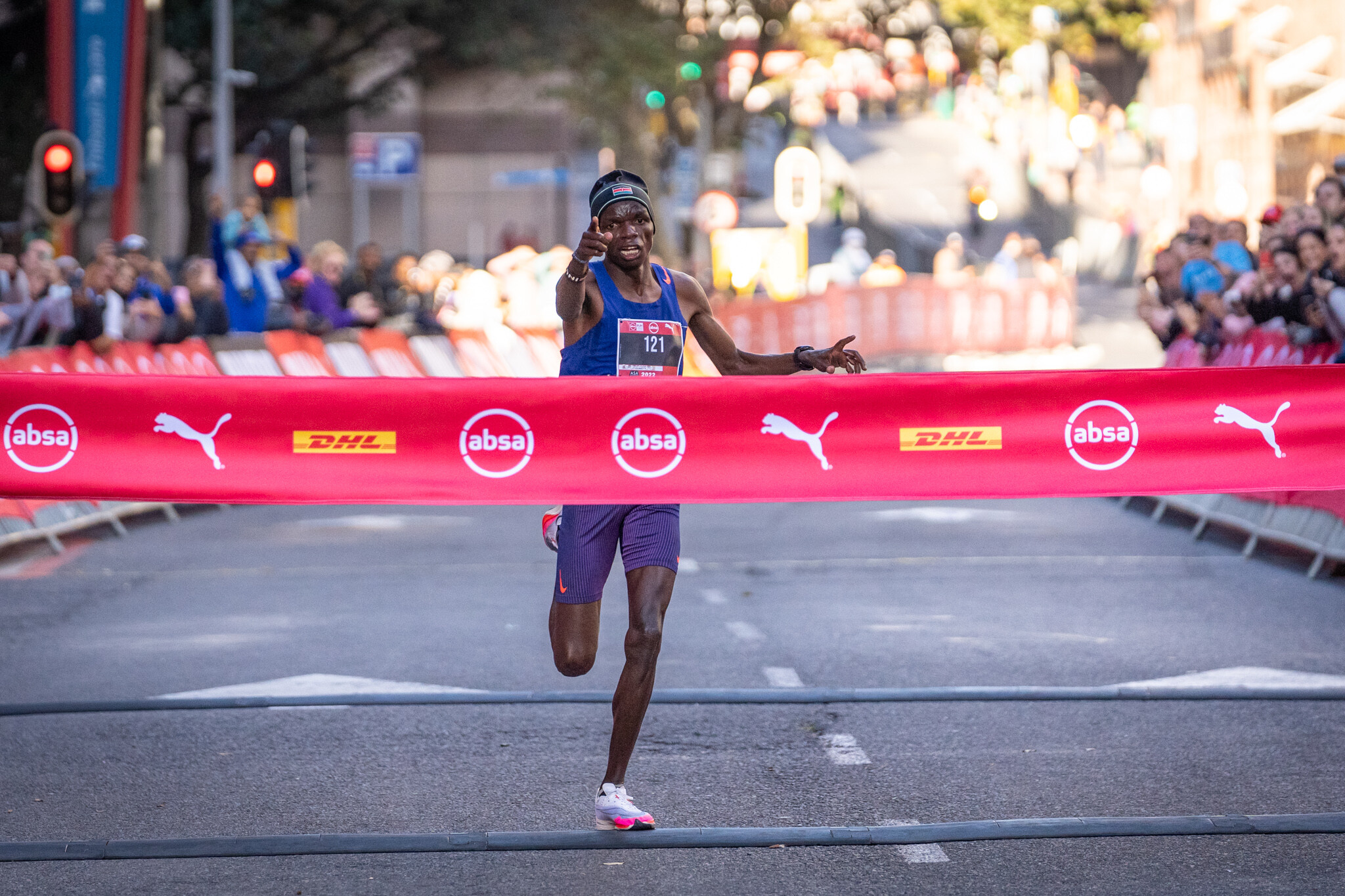
“Maybe I will try,” he said, leaving fans wondering if this year’s race will witness another groundbreaking performance from the Kenyan.
Since clinching the Okpekpe title, Simiu’s career has been on an impressive trajectory.
He went on to secure a 10,000m silver medal at the World Athletics Championships in Budapest, Hungary, and added a half marathon silver medal at the World Road Running Championships in Riga, Latvia, to his accolades.
His season started with a victory at the 67° Campaccio-International Cross Country, followed by a dominant performance at the National Police Cross-country Championships and Sirikwa Classic Cross-country.
This year marks the 10th anniversary of the Okpekpe Road Race, and organizers are promising an event filled with glamour and entertainment, aiming to make it the best edition yet.
“The technical and administrative organisation of the event have been applauded by World Athletics with the elevation of the event to a gold label status after its return from a two-year COVID-induced absence,” highlighted race director, Zack Amodu.
(03/25/2024) Views: 186 ⚡AMPby Festus Chuma
Okpekpe Road Race 10km
The Okpekpe Road Race invites world-class runners from around the world in a tradition tointermix local recreational and up and coming runnerswith the best of the best. Invitation extended to all CAA Member Federations, all military and para-military have sent in entries. Okpekpe is more than just a collection of fertilefarmlands or a window into the past, it is a...
more...Four exercises to build bulletproof knees
We know that running doesn’t wreck your knees (and might even make them stronger) but newer runners or those making a comeback occasionally experience some soreness, and the knee is one of the most common areas of injury for runners. The easiest way to keep knee pain at bay is to beef up the muscles around the knee joint.
Adding a handful of simple exercises to your routine will help your legs provide better support and alignment, giving your legs the oomph they need to keep going strong while preventing common injuries such as patellofemoral pain syndrome and runner’s knee. We have four exercises to help you get started.
Single-leg glute bridge
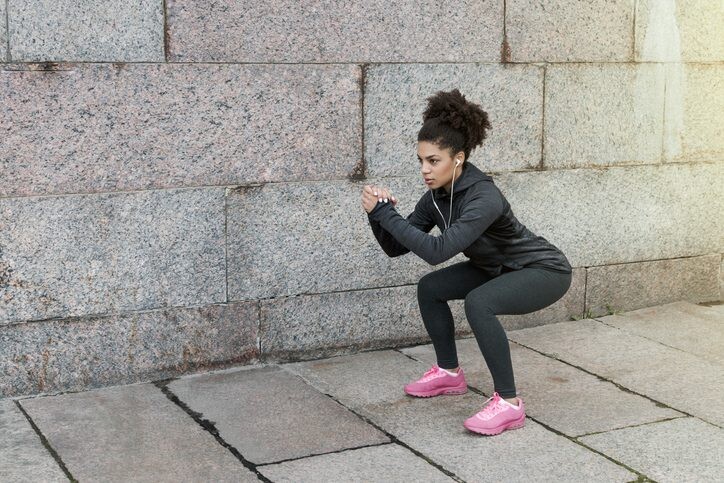
This exercise strengthens the glutes, hamstrings, and core while also improving hip stability and alignment.
Begin lying on the floor with your knees bent and hands by your side.

Engage your core and lengthen one leg out, keeping one foot on the floor. Push through your foot, slowly lifting your hips into a bridge position and keeping your one leg extended.
Single-leg glute bridge
This exercise strengthens the glutes, hamstrings, and core while also improving hip stability and alignment.
Begin lying on the floor with your knees bent and hands by your side.
Engage your core and lengthen one leg out, keeping one foot on the floor. Push through your foot, slowly lifting your hips into a bridge position and keeping your one leg extended.
Hold for a second at the top, squeezing your glutes and engaging your core muscles. Gently to the starting position. Aim for 10 repetitions, and then repeat on the other side.
1.- Forward lunges
Lunges engage the quadriceps, hamstrings, glutes, and calf muscles, and activate stabilizing muscles such as the hip abductors and adductors. They improve overall stability and reduce stress on the knees.
Stand with your feet hip-width apart.
Take a step forward with one leg and lower your body until both knees are at a 90-degree angle, hovering the back knee just above the ground.
Push off the front foot to return to the starting position and repeat with the other leg. Aim for five to 10 repeats to start. You can build resistance by adding sets, or by holding weights once you become comfortable.
2.- Step-ups with knee drive
Step-ups strengthen the muscles responsible for supporting the knee joint during weight-bearing activities like running and enhance the knee’s ability to withstand repetitive stress and maintain proper alignment, reducing the likelihood of overuse injuries.
Stand with feet hip-width apart, facing a step, box, or bench.
Step up with the right foot onto the box, and then drive the left knee up toward the chest. Aim for your hip and knee to form a 90-degree angle. Step back down and repeat on the other side. Aim for 3 sets of 10 reps on each side.
If you want more of a challenge, hold a light weight in the hand that is on the side doing the step-up (if you’re stepping up with your right leg, hold a weight in your right hand).
3.- Squats
Squats strengthen the quadriceps muscles which directly connect to the knee. Strong quadriceps provide the knee with more stability, thus reducing and preventing injury. Start with two to three sets of eight to 12 repetitions.
Stand with your feet shoulder-width apart, toes slightly turned out, and your chest up.
Lower your body by bending your knees and pushing your hips back as if you’re sitting in a chair, keeping your weight on your heels.
Lower until your thighs are parallel to the ground, then push through your heels to return to the starting position, squeezing your glutes at the top.
As strength improves, you can gradually increase the number of sets, repetitions, or resistance (such as adding weights) to continue challenging the muscles and promoting knee strength.
4.- Single-leg mini squat
This exercise mimics the motions of running, engaging all the major muscle groups involved in running to build strength and stability while It also challenges balance and building proprioception skills.
Begin by standing on one leg with your knee slightly bent. Keep your chest up, shoulders back and core engaged for balance.
Slowly lower your body by bending the knee of the leg you’re standing on, imagining that you’re sitting back in a chair. Keep your back straight, and go as low as you can (doesn’t need to be far!) while maintaining control.
Hold for a few seconds to challenge your balance and stability, and then push through the heel of the standing leg to return to the starting position. Try five-10 reps on each side to start.
As with any new activity, use caution and patience as you incorporate these into your routine. Feel free to modify by reducing the number of repetitions if you are struggling; if you’re very comfortable with lower-body strength training, add resistance by holding weights as you do the exercises.
(03/25/2024) Views: 181 ⚡AMP
by Keeley Milne
A Navy Dentist Trained for and Ran a Marathon While Out at Sea—All on a Treadmill
For 16 weeks, he followed Runner’s World’s training plan while deployed and ending up breaking four hours.
I always despised the treadmill. I was never able to run on it, partially because I was afraid that if my foot slipped too far off left or right, I would end up face-planted. Plus, what I love about running is being out in the wilderness and not having to run in a perfectly straight line, which is everything the treadmill isn’t: It’s confined and claustrophobic.

But I didn’t always love running the way I do now. As a kid, I played baseball and golf, so when I pivoted to running in high school, it was quite demanding physically and mentally at first. I ran both cross-country and track, and because I was part of a successful team—we won the state championship in track in 2003, and cross country in 2004 and 2005—it was challenging and took a lot of hard work. But even then, I enjoyed the mental challenge of pushing myself hard: No one can make you run, no one can force you, it’s all on you.
And for that reason—because I love to challenge myself—part of me always wanted to conquer my fear of the treadmill. Plus, when my buddy said I could not possibly train for and run a marathon on a treadmill during our back-then-upcoming deployment out at sea, it just made me want to do it all the more. But above all, there was one special person who motivated me to train: My wife, Jessee, and her recent BQ.
Jessee and I were both runners long before we met in college. We take the sport with us wherever we move with the Navy, joining group runs, and even racing together. But while Jessee has been getting faster, in late 2022, I was diagnosed with osteoarthritis, followed by months of rehab and uncertainty about whether I’d ever run another marathon again. However, I was determined to fully recover, following my physical therapist’s recommendations to a T.
While I was healing, Jessee was training for the Wilmington Marathon in February 2023, following the Runner’s World break 3:30 plan, hoping to beat the 3:35:00 cutoff for her age group and make it her Boston qualifier. Her final time was 3:31:33. I was there for the race, spectating, and the whole experience—from training to the race—awakened new determination in me. Could I qualify for Boston as well?
By then, I already knew I would be deployed in July 2023. As I slowly started to feel better, getting back to some easy runs, a plan formed in my head: I would commit to the same training plan Jessee had followed for her BQ—except my training would be solely on a treadmill on the Navy ship.
To qualify for Boston in 3:05:00 for my age group, I knew I’d have to gradually improve my time from my existing PR of 3:58:17. I started training on the first day of our deployment, which set my treadmill marathon date for October 28, 2023.
It was not an easy training block for sure. There had been a handful of days where the ship was rocking and pitching, which brought some surprising, unintentional hill workouts to my treadmill runs. There are no windows, so you just have to be aware and try to anticipate the next move.
In the end, running in a straight line was the least of my worries—the toughest stage was handling the hot days while we were in the Persian Gulf. The heat index was 120 to 130 Fahrenheit outside, and the ship was very hot as well. But one of my favorite quotes is: “Smooth seas don’t make skilled sailors.” I knew that come marathon day, I’d be able to look back on those runs for motivation, knowing that I can do hard things.
In general, I don’t listen to music while running; I like to know what’s going on around me. But the treadmill doesn’t provide much excitement, so I came up with a plan. I read some Runner’s World articles that mentioned the physiological benefits of listening to music while running. I thought if I get through about 16 miles without music and then run the last 10 miles with music on, that should give me a good boost. I practiced it first for a few miles at the end of each long training run, figuring out what songs I wanted on my marathon playlist.
On the day of the marathon, the gym was 76 degrees, about 20 degrees more than all my previous marathons, so I expected the temperature to be a factor going into it. Around mile 18, I started to feel that heat seep in. And then, at mile 22, I felt a sharp pinch in my left groin, so I backed off a little bit. I was hoping for 3:30, but in the end, I finished at 3:43:58 (pure run time, as I had to restart the treadmill every 60 minutes). I ran almost 15 minutes faster than my previous PR though, and was now 15 minutes closer to Boston.
Overall I discovered this marathon training block supported my mental health. Out at sea, it can feel like Groundhog Day—every day is the same. Having a goal helped bring structure to my days. Having a plan gave me a focus and direction. The Runner’s World training plan included a description of what to do each day, running tips, nutrition, and sometimes a little pep talk. I didn’t have to think about it; I was just following what it prescribed.
Since the marathon, I’ve been running three or four times a week, focusing more on strength training, and figuring out what could be next.
Besides Boston, Jessee and I also hope to eventually run a marathon on every continent. We will be moving to Washington D.C. soon, so for now, I hope to run the Marine Corps Marathon this fall and keep shaving time off my PR.
While I’m glad I conquered the treadmill, I doubt I’ll do another treadmill marathon—I’m very much looking forward to running outdoors again, as soon as I return from my deployment.
These tips have made my running journey a success:
1. Work foam rolling into your routine
After my injury following the London Marathon, my physical therapist showed me some foam-rolling techniques for my quads and calves. Before and after every run, I get things loose and warmed up, and it really made a huge difference. By the time I did the treadmill training block, the injury was essentially nonexistent. It’s definitely changed the way I approach running.
2. Make yourself a playlist to boost your mood
Music is quite personal so I’d recommend checking out RW playlists and Spotify playlists, then make your own based on your taste. All genres—rock, rap, pop—can give you a boost in a different way.
3. Find a training plan
Even if you have never run competitively or are brand new to running, Runner’s World can help you figure out the smartest and safest way to start so you don’t do too much too soon and help avoid injury.
4. Find your running people
Googling “local running club” can help you find a community of like-minded people near you. This is a great way to make friends and learn more about running. My wife and I always find a running community every time we move with the Navy. We have made some lifelong friends and look forward to meeting more runners wherever the Navy takes us!
Mike's Must-Have Gear
→ Garmin Forerunner 55: I try to keep my running minimalistic, so I only use the watch for pace, time, and heart rate. There are probably a million other things the watch can do, but that’s enough for me.
→ Brooks Sherpa 2-in-1 running shorts: The boxer brief lining makes these the most comfortable running shorts I’ve ever worn. It’s kinda pricey, so I have only one pair that I wear on my long runs (maybe I'll invest in a second pair one day). The waistband is also very comfortable and the pockets are a perfect storage for my needs.
→ Balega socks: My wife got me a couple of pairs for this deployment, and I absolutely love them. They are a little pricey but so worth it.
(03/24/2024) Views: 155 ⚡AMPHow Little Strength Training Can You Get Away With?
To be a maximalist, you must first be a minimalist. That's an aphorism I first heard from Michael Joyner, the Mayo Clinic physiologist and human performance expert, and it resonates. To truly reach your potential in one or a few areas, you have to be disciplined about all the other ways in which you could fritter away your valuable time and energy. Excellence requires tough choices.
All this is to say that when it comes to strength training, I'm not ashamed to admit that my number one question is, "How little can I get away with?" I'm convinced that strength training has important benefits for health and performance, and I recognize that lifting heavy things can be a source of meaning and self-mastery. But I've got miles to run before I sleep and, metaphorically, a bunch of errands to run before my kids get home, so a recent review in Sports Medicine caught my eye. An international group of researchers, led by David Behm of Memorial University of Newfoundland and Andreas Konrad of Graz University in Austria, sum up the existing research on minimalist resistance training: how low can you go and still get meaningful gains in strength and fitness?

For starters, let's acknowledge that making meaningful gains is not the same as optimizing or maximizing your gains. There's a general pattern in the dose-response functions of various types of exercise: doing a little bit gives you the biggest bang for your buck, but adding more training leads to steadily diminishing returns (and eventually, for reasons that aren't as obvious as you might think, a plateau). Those diminishing returns are worth chasing if you're trying to maximize your performance. But if your goal is health, more is not necessarily better, as we'll see below.
In a perfect world, you'd like to see a systematic meta-analysis of all the literature on minimalist strength training, meaning that you'd pool the results of all the different studies into one big dataset and extract the magic training formula. Unfortunately, the resistance training literature is all over the map: different types of strength training, study subjects with different characteristics and levels of experience, different ways of measuring the outcome. That makes it impossible to meaningfully combine them in one dataset. Instead, Behm and Kramer settled for a narrative review, which basically means reading everything you can find and trying to sum it up.
Their key conclusion is that "resistance training-hesitant individuals" can get significant gains from one workout a week consisting of just one set of 6 to 15 reps, with a weight somewhere between 30 and 80 percent of one-rep max, preferably with multi-joint movements like squats, deadlifts, and bench press. That's strikingly similar to a minimalist program I wrote about a couple of years ago: that one involved a single weekly set of 4 to 6 reps, but the lifting motions were ultra-slow, which heightens the stimulus. You don't even necessarily have to lift to failure, though you probably need to get within a couple of reps of it.
The data that Behm and Kramer looked at came from studies that typically lasted 8 to 12 weeks. One of the unanswered questions is whether such a minimalist program would keep producing gains on a longer timeframe. You'd clearly need to continue increasing the weight you lift to ensure that you're still pushing your body to adapt. But do you reach a point where further progress requires you to increase the number of sets, or the number of workouts per week? Maybe-but it's worth recalling that we're not trying to maximize gains here, we're just trying to achieve some hazily defined minimum stimulus. For those purposes, the evidence suggests running through a rigorous full-body workout once a week is enough to maintain a minimum level of muscular fitness.
There's another, less obvious angle to minimalist strength training that researchers continue to grapple with. Duck-Chul Lee of Iowa State and I-Min Lee of Harvard, both prominent epidemiologists, published a recent review in Current Cardiology Reports called "Optimum Dose of Resistance Exercise for Cardiovascular Health and Longevity: Is More Better?"
The question echoes a debate that flared up a decade or so ago about whether too much running is bad for you, in which Duck-Chul Lee played a key role. Back in 2018, he also published a study of 12,500 patients from the Cooper Clinic in Dallas which found that those who did resistance training were healthier-but that the benefits maxed out at two workouts a week, and were reversed beyond about four workouts a week. At the time, I assumed the result was a fluke. But the new article collects a larger body of evidence to bolster the case. The newer data suggests that about an hour of strength training a week maximizes the benefits, and beyond two hours a week reverses them. Lee and Lee hypothesize that too much strength training might lead to stiffer arteries, or perhaps to chronic inflammation.
Now, when Duck-Chul Lee and others produced data suggesting that running more than 20 miles a week is bad for your health, I was brimming with skepticism and went over the data with a fine-tooth comb. I'm similarly cautious about these new results, and have trouble believing that there's anything unhealthy about doing three weekly strength workouts. But they do put the idea of minimalist strength training in a different light. Maybe you're not maximizing strength or muscle gains, but it's possible that you're optimizing long-term health-especially if the reason you only hit the gym once or twice a week is that you're too busy hitting the trails.
(03/24/2024) Views: 148 ⚡AMPby trail runner magazine
Decathlon medal contender could miss Paris Olympics
The Olympic hopes of Kevin Mayer of France, the reigning Olympic silver medallist in the decathlon, are in doubt after he sustained a knee injury during the Aztec International in San Diego on Thursday. The two-time world champion withdrew from the decathlon competition after four events, raising doubts about his ability to qualify for the Paris Olympics.Competing at the Aztec Invitational track meet in San Diego, Mayer was aiming to achieve the decathlon Olympic standard of 8,460 points, a mark he has yet to reach within the qualifying window.The 32-year-old has been plagued with injury and has not completed a decathlon since winning his second world title at the 2022 World Championships in Eugene. While he attempted to compete at last year’s World Athletics Championships in Budapest, he was forced to withdraw after the second event, due to pain in his left Achilles tendon. Mayer told French media at the time that his primary goal was to regain full health and redirect his focus to the 2024 Olympics, to be held in his hometown.
For the past decade, Mayer has been a formidable rival of Canada’s Damian Warner; they are two of the best decathletes of this generation. Mayer boasts world indoor and outdoor titles, along with the decathlon world record of 9,126 points, yet Olympic gold is the one thing he has not accomplished. Mayer has won two Olympic silver medals, finishing behind Warner at Tokyo 2020 and behind American Ashton Eaton at Rio 2016.While the severity of Mayer’s injury is unknown, the world record holder reassured his followers on social media, stressing his determination to return to the track soon. Time is running out; the deadline to earn Olympic qualification is June 30. As one of the golden hopefuls for Team France in Paris, Mayer’s attention shifts to getting healthy for the Götzis Hypo-Meeting, a massive annual meet for decathletes, on May 18 and 19, where he will need to meet the standard.
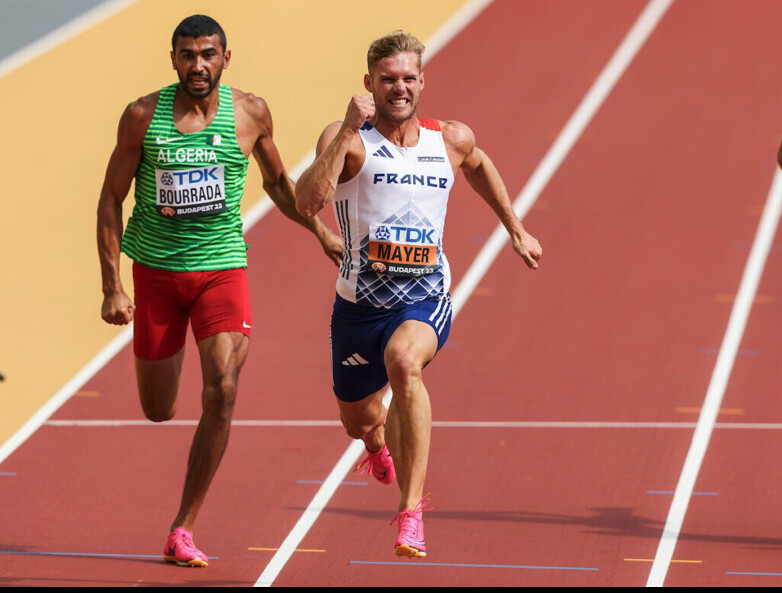

by Running Magazine
Michael Johnson gives Letsile Tebogo 400m advise after hitting Olympics qualifying time
American sprint legend Michael Johnson has told Botswana sensation Letsile Tebogo what to do at the Olympics after he hit the 400m qualifying time for the Paris Games.
American sprint legend Michael Johnson has advised Botswana sensation Letsile Tebogo against signing up for the 400m at the Paris 2024 Olympics.

Tebogo hit the Olympic qualifying mark in 400m when he lowered his personal best to post an impressive 44.29 at the ASA Grand Prix in Pretoria, South Africa on Monday.
That has got many wondering if the world 100m silver and 200m bronze medalist will add the 400m onto his Olympics programme but Johnson, a two-time Olympic champion and record holder over the 400m, feels it would be a bad idea to do that this year.
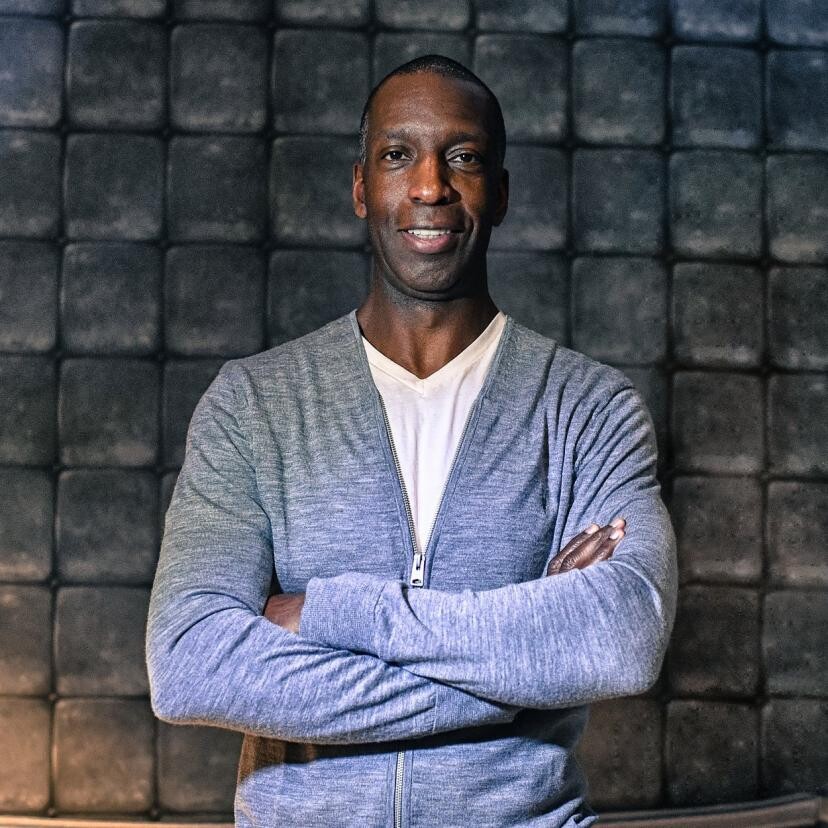
“100/200 or 200/400 double? Already a 100/200 world champs medalist, may be foolish to switch in an Olympic year,” Johnson posted on X.
While Johnson recognizes that the men’s 400m is not as strong now, he thinks 20-year-old Tebogo still has plenty of time to hone his skills over the distance before he makes a competitive attempt.
“Men’s 400 a bit weak recently but his training must change to run even low 44 in a final after rounds. At only 20, plenty of time to move to 400. 100/200 for Paris,” added Johnson, while advising Tebogo to stick to 100m and 200m at the Paris Olympics.
Johnson’s sentiments come days after reports in Botswana also suggested Tebogo does not intend to compete in 400m at the Paris Olympics and was just using the race to test his endurance.
Tebogo has been in fine form, smashing the 300m world record by running 30.69 in Pretoria in February, before the 44.29 in 400m in the same South African city this week.
"My plan is to rest for a week or two. My performance [on Monday] shows that the speed is there,” said Tebogo after Monday’s race.
“Everything is going according to plan. I want to compete in Diamond League Meets so that I get used to other top athletes. That will also assist me to be confident when I meet them at the Olympics.”
World champion Noah Lyles is seen as the favorite to claim gold in both 100m and 200m at the Olympics but 20-year-old Tebogo is among a host of rivals set to give him a run for his money, with the Botswanan not a pushover given his remarkable form and consistency.
(03/23/2024) Views: 183 ⚡AMPby Joel Omotto
Paris 2024 Olympic Games
For this historic event, the City of Light is thinking big! Visitors will be able to watch events at top sporting venues in Paris and the Paris region, as well as at emblematic monuments in the capital visited by several millions of tourists each year. The promise of exceptional moments to experience in an exceptional setting! A great way to...
more...Paula Radcliffe to open Brighton Marathon
Three-time London Marathon winner Paula Radcliffe and Paralympic gold medallist David Weir are the official starters of this year’s Brighton Marathon weekend.
Radcliffe, who set a new world record for the London marathon in 2003, will signal the start of the race in East Sussex on 7 April.

She said the start of a marathon was “inspirational” and conveyed “the warmth, empathy and power of the marathon family”.
Brighton Miles, an accessible running event on 6 April, will be launched by wheelchair athlete Weir.

About 13,000 people are expected to run in this year’s Brighton Marathon, which is now in its 15th year.
“I’m delighted to be coming back to Brighton to start the 2024 Brighton Marathon,” said Radcliffe, who is an ambassador for Children with Cancer UK.
Weir praised the inclusivity of the Brighton Miles event, saying: “No matter your age, ability or disability, the Brighton Miles is for you.”
Entries for the Brighton Miles and the 10k are still available, however the Brighton Marathon is sold out.
(03/23/2024) Views: 184 ⚡AMPby Zac Sherratt
Brighton Marathon
The Brighton Marathon is one of the UK’s favorite marathons. With stunning coastal scenery in one of the country’s most energetic cities, this is the perfect race for runners with all different levels of experience. The fast and beautiful course of the Brighton Marathon makes this a ‘must do’on any runners list. Come and experience it for yourself over 26.2...
more...Three workouts to help you decimate your half-marathon goals
Effective pacing is critical for a successful half-marathon finish, yet many runners struggle to find the right balance between starting too fast and fading in the later stages of the race. Race-pace workouts provide an opportunity to fine-tune pacing strategies, by practicing maintaining a consistent pace over various distances and terrain. Through trial and error in training, runners can identify their optimal race pace and develop a solid pacing plan for race day.
Renowned coach and author Greg McMillan explains on his website that he prescribes several goal-pace workouts for the athletes he coaches to determine if their hoped-for race pace is achievable—if not, he uses the workouts to help them figure out a more attainable goal. Here’s how to get started.
Workout 1
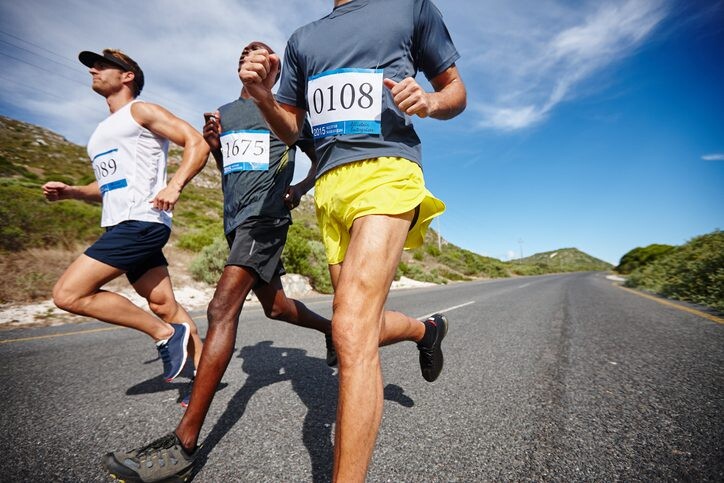
McMillan suggests that athletes do this workout about eight weeks before their race. He says that while this session can feel like a shock to this system for some runners, it’s important to stick with it.”The first goal pace workout often feels tough, but you’ll receive a big mental and physical boost after simply completing this workout.”
Warm up with 10 minutes of easy running.
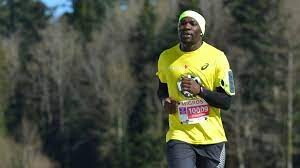
Run 2–3 miles (roughly 5K) at goal half-marathon pace, with 2–3 minutes recovery jog between repeats.
Cool down with 10 minutes of easy running.
Workout 2
Try scheduling this workout about four weeks before your race.”By the time you get to this workout, you should find that the first repeat is comfortable and it’s only toward the end of the second repeat that you begin to feel fatigue,” says McMillan.”If you struggle to hit the pace even in the first repeat, then it’s time to adjust your goal pace.”
Warm up with 10 minutes of easy running.
Run 2 X 4 miles (roughly 6.5K) at goal half-marathon pace, with 2–3 minutes recovery jog between repeats.
Cool down with 10 minutes of easy running.
Workout 3
McMillan suggests athletes schedule this final race-pace workout two to three weeks out from their race (before their taper).”This final goal pace run should feel like a mini version of the half-marathon,” he says. McMillan says that runners should feel very comfortable on the first three to six kilometers of the workout; past the halfway point, it should feel mentally challenging to hold the pace, but another one to three kilometers should feel possible.
Warm up with 10 minutes of easy running.
Run 6–8 miles (10-13K) at goal pace.
Cool down with 10 minutes of very easy running.
If you’re able to run near goal pace for all three of these workouts, you can head into your race feeling confident. If you’re struggling to hit your targets, McMillan suggests adjusting your goals—you may only need to adjust by a few seconds per kilometer.
Make sure to follow any harder effort or speedwork with a very easy running day or a recovery day.
(03/23/2024) Views: 166 ⚡AMPby Keeley Milne


